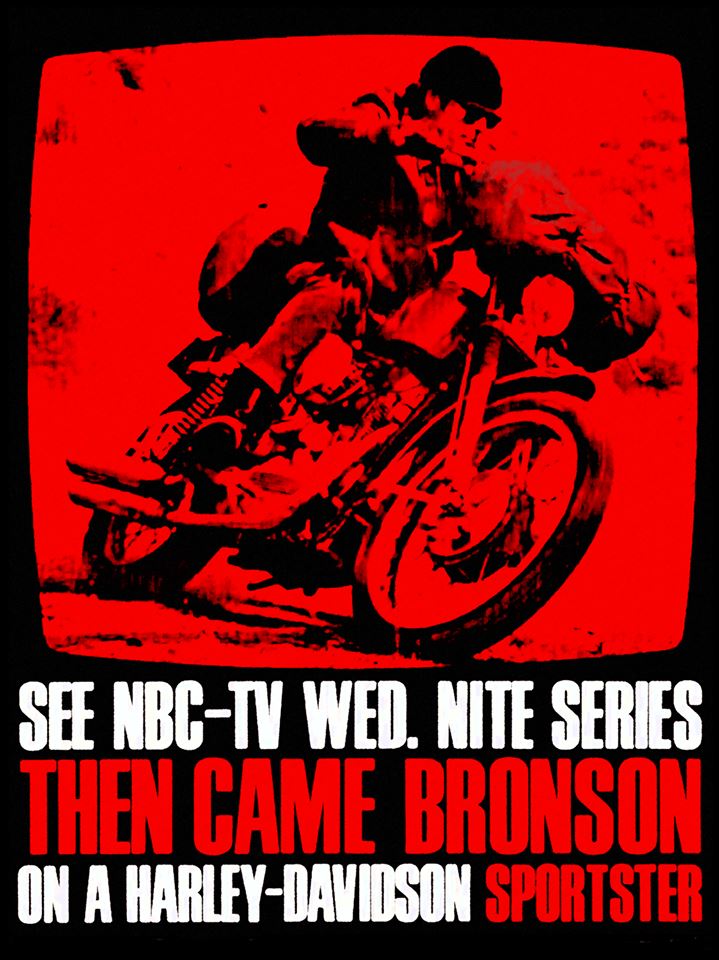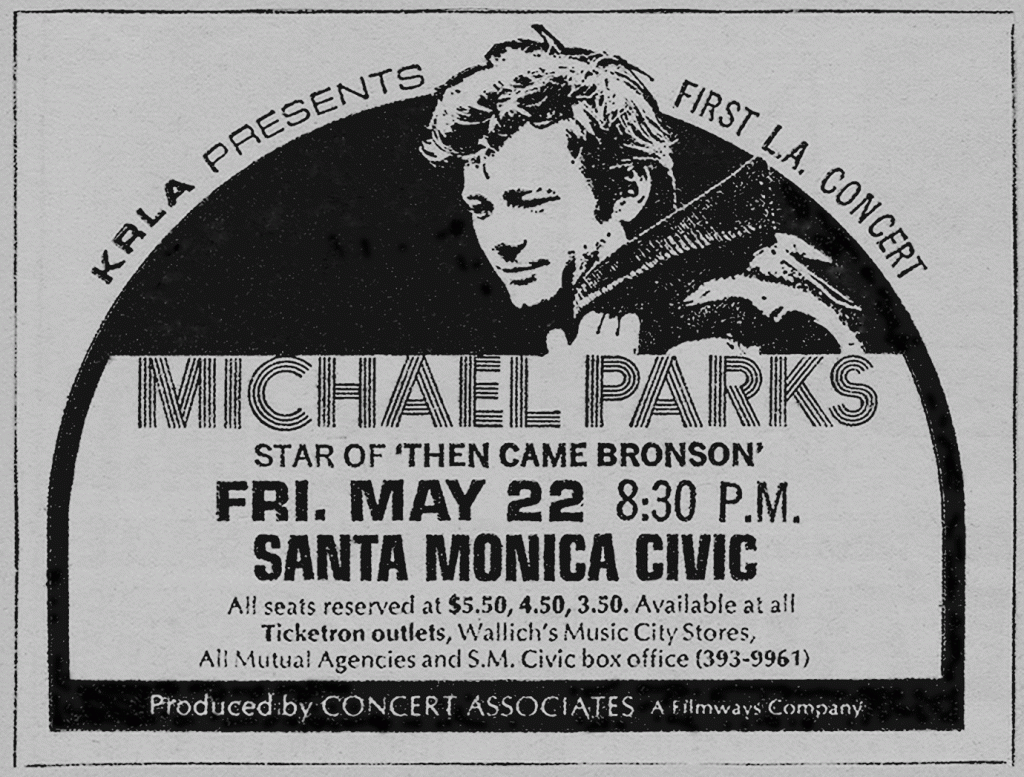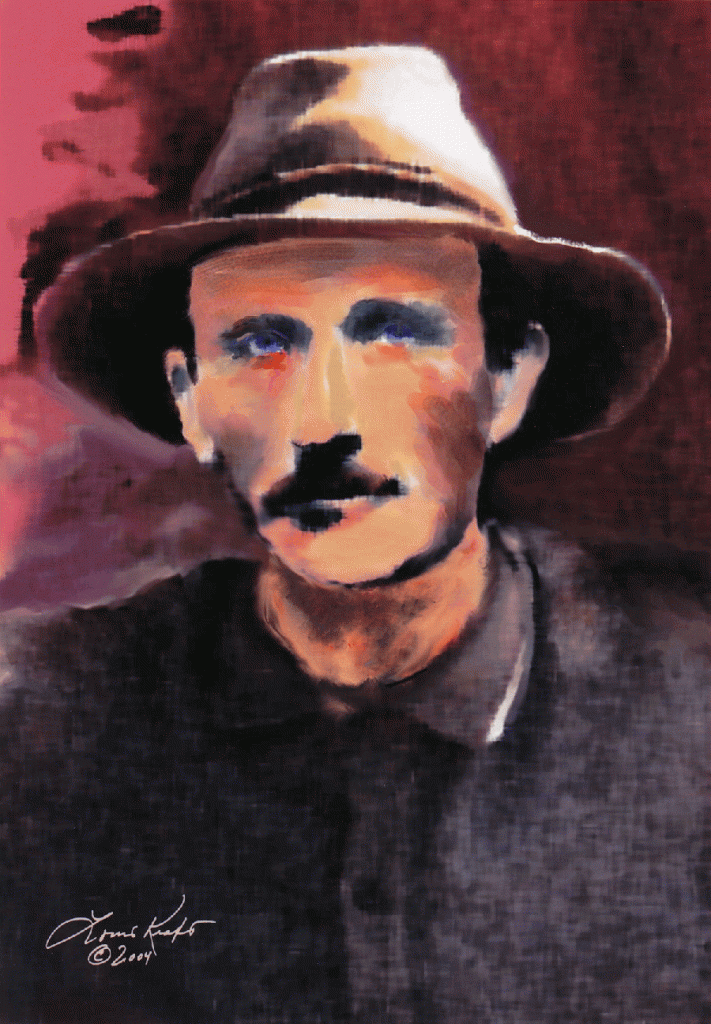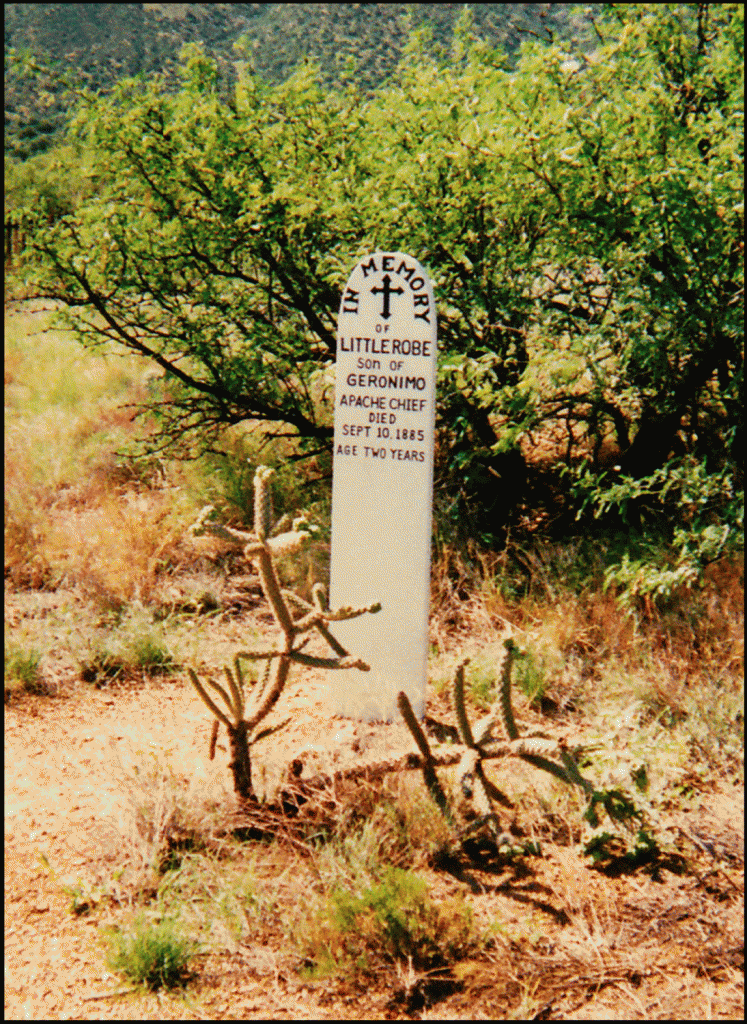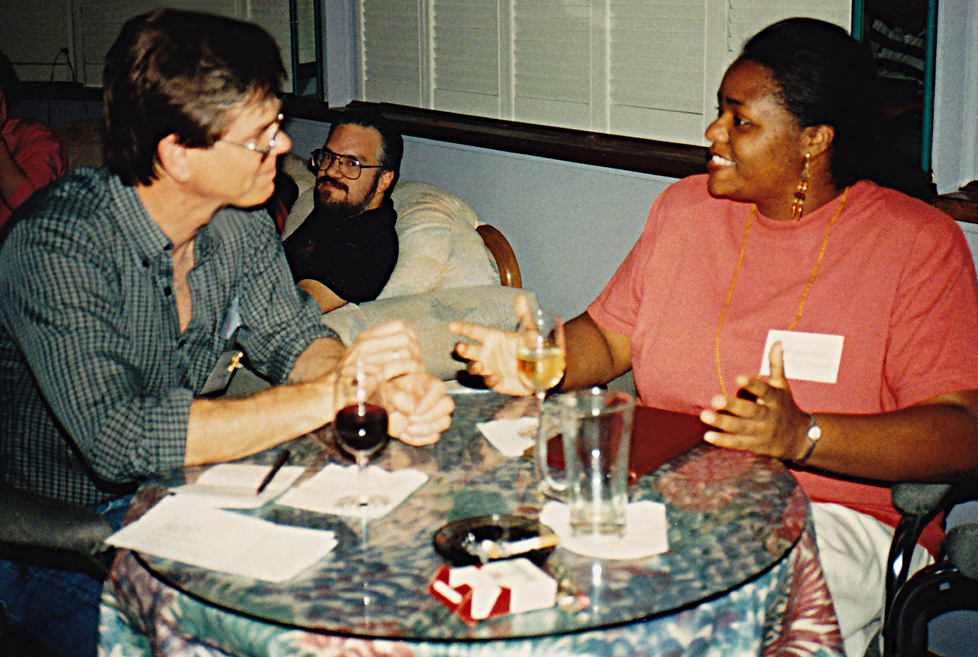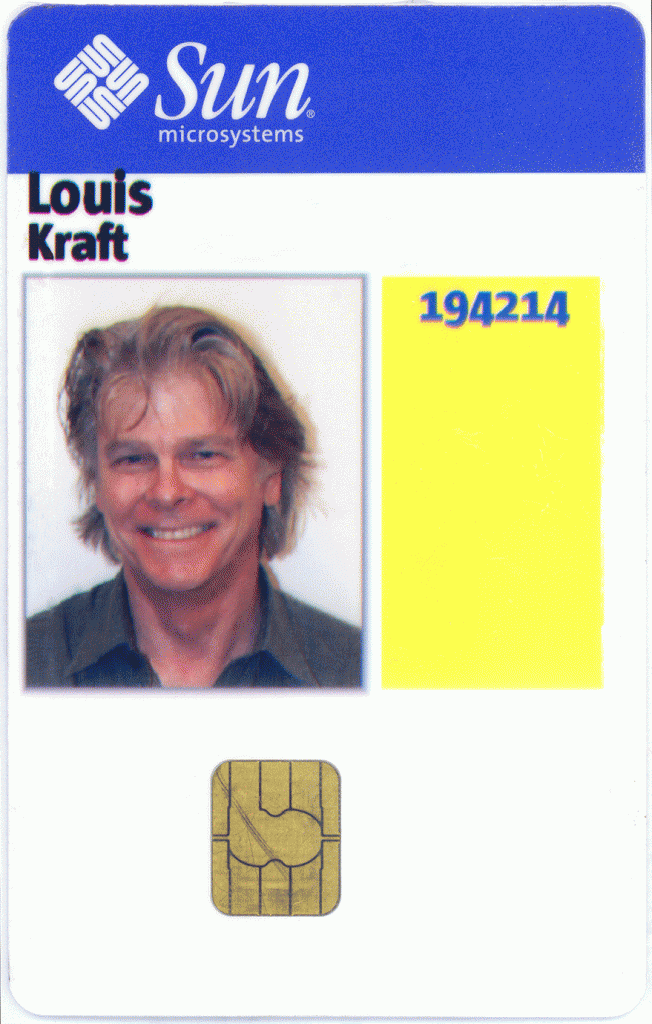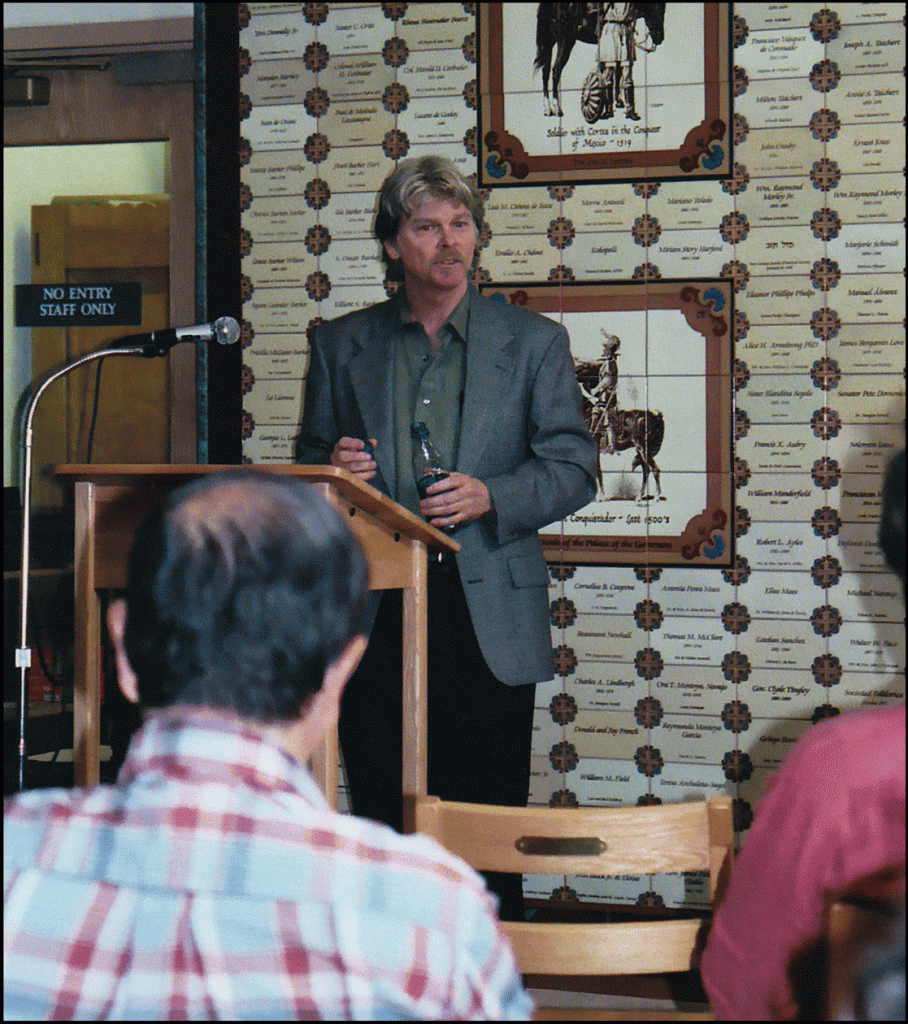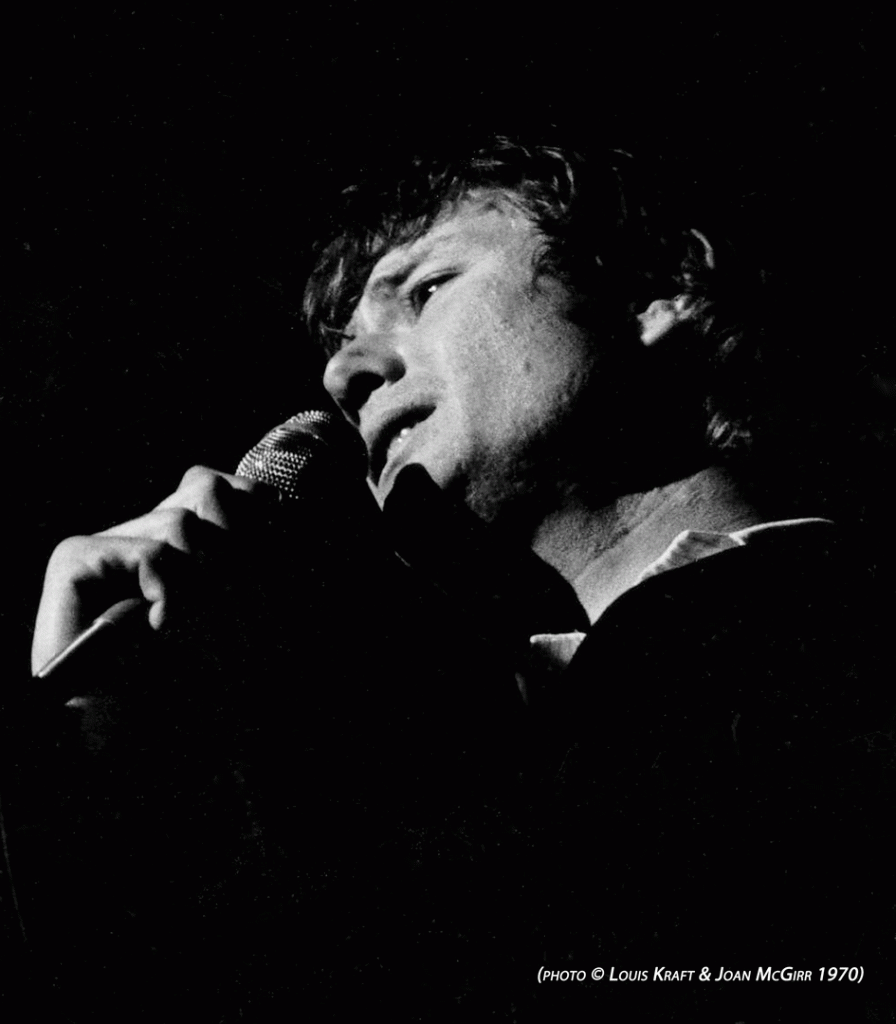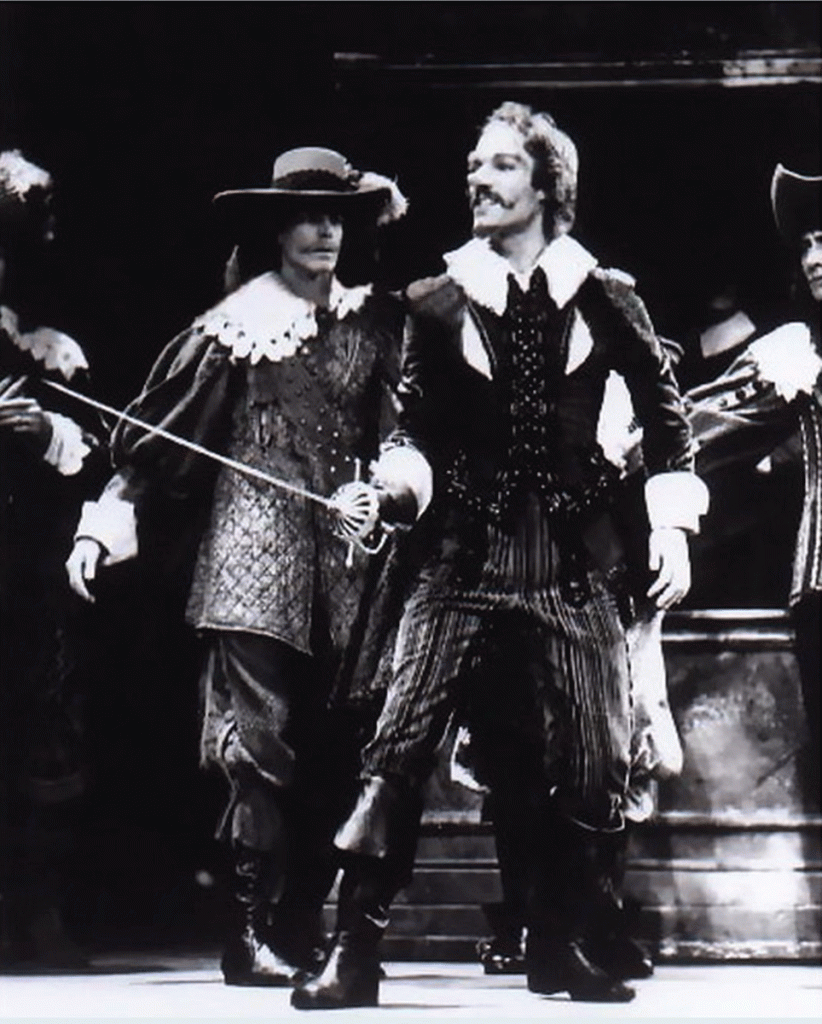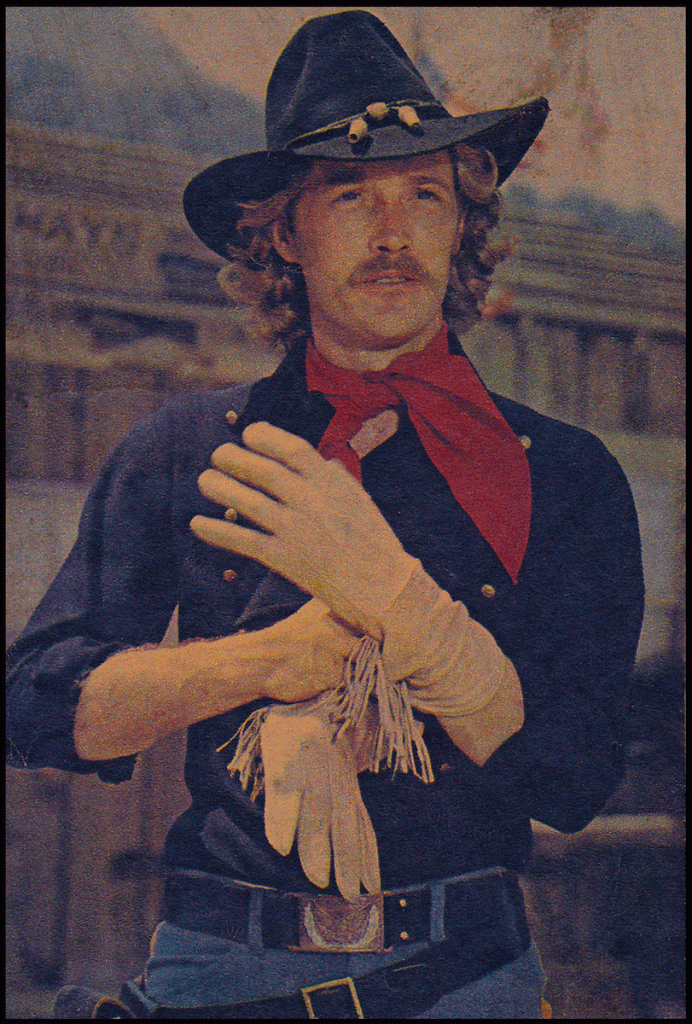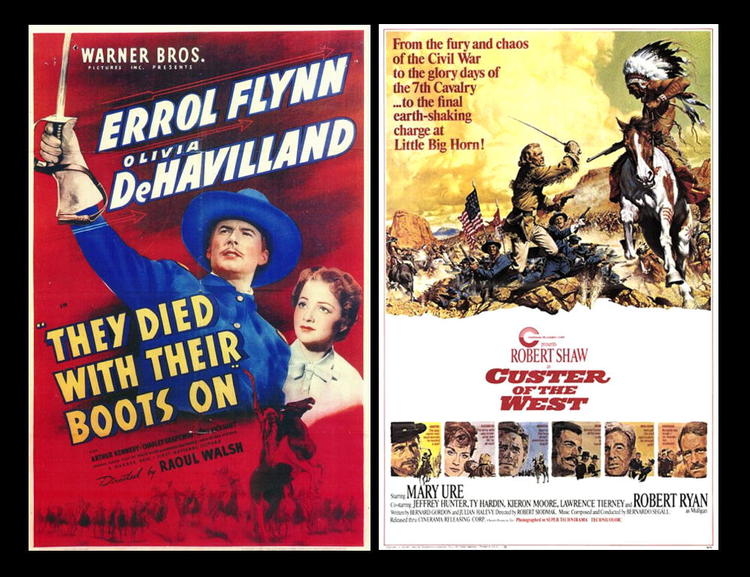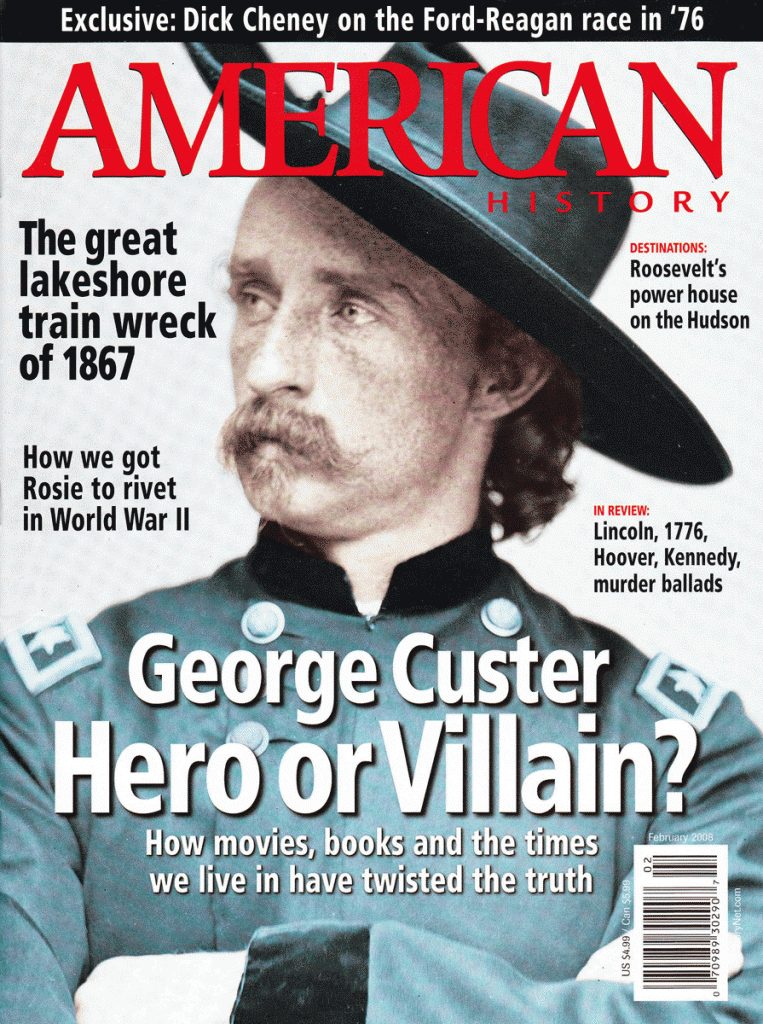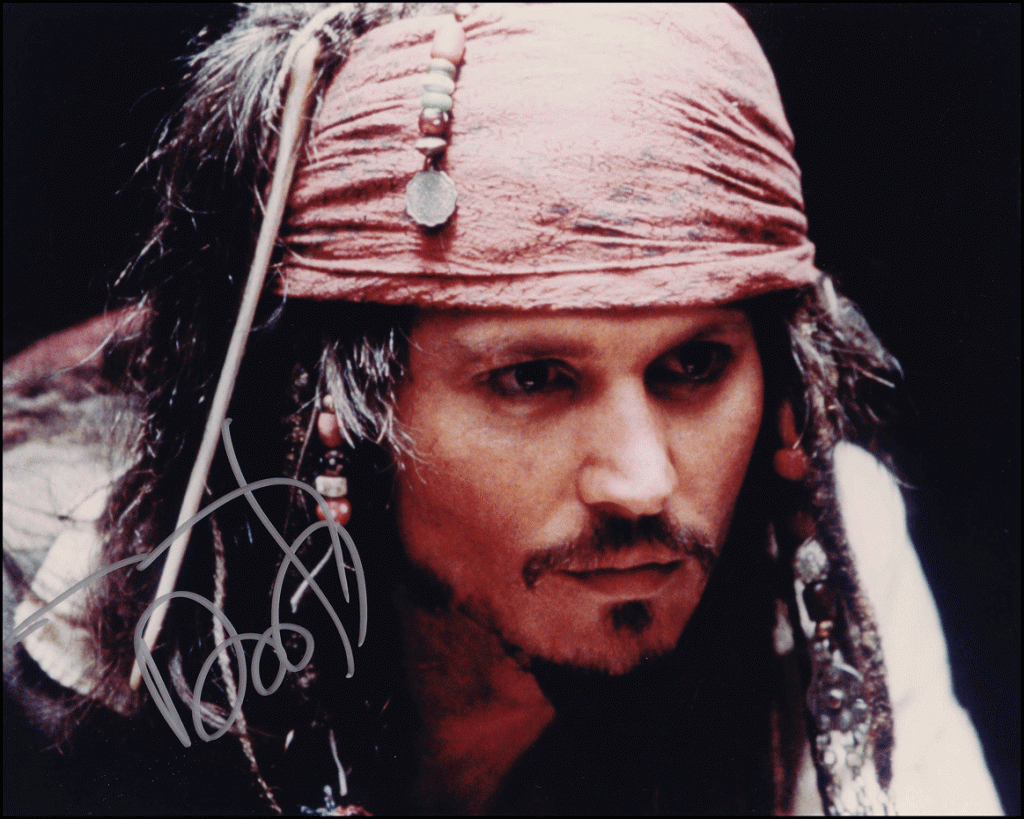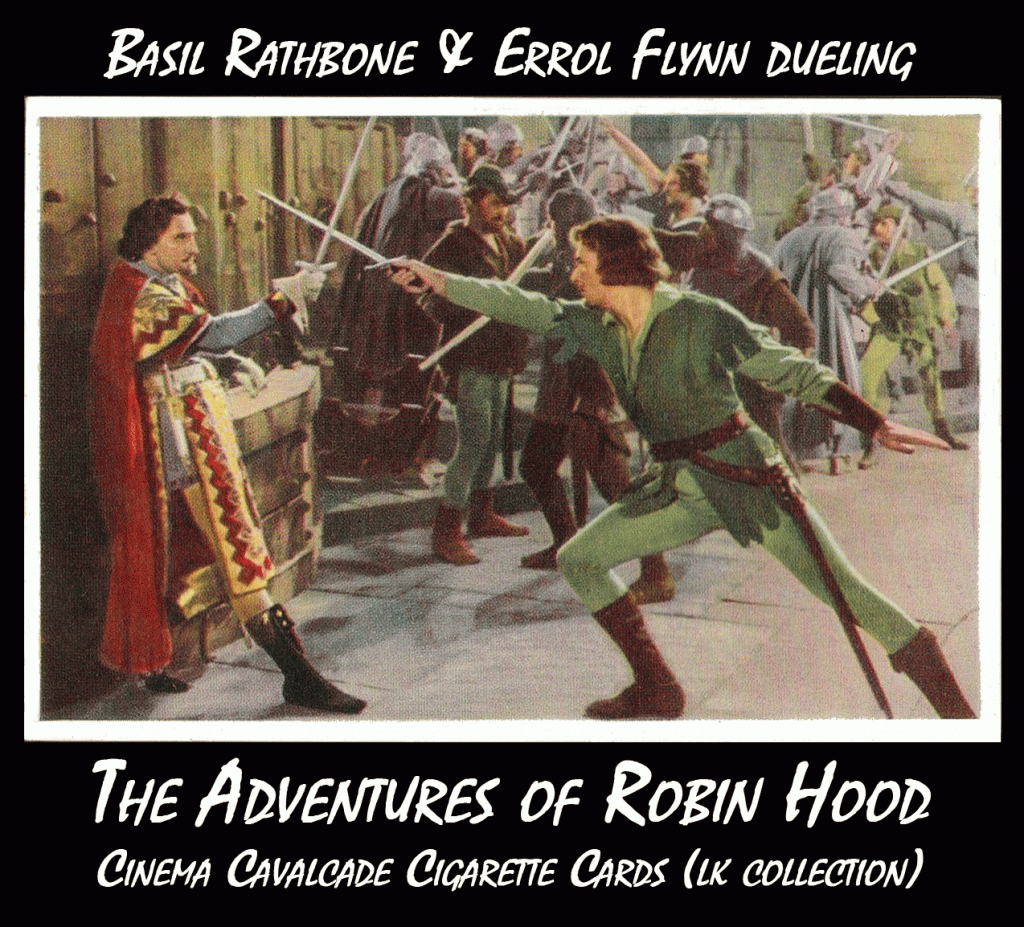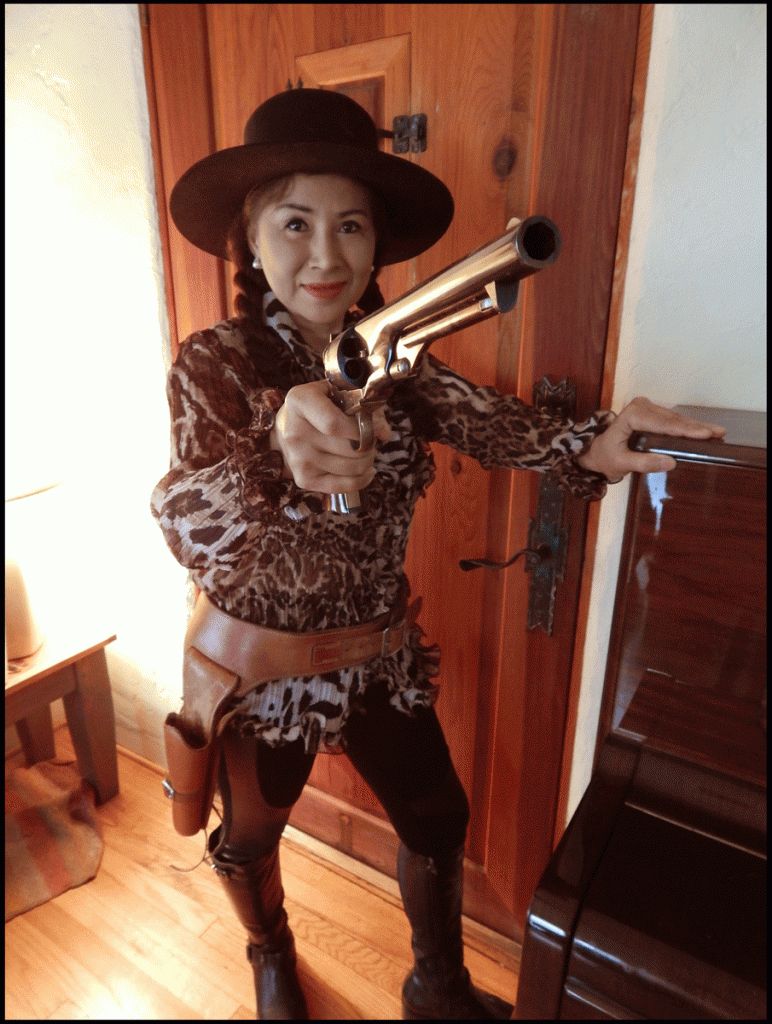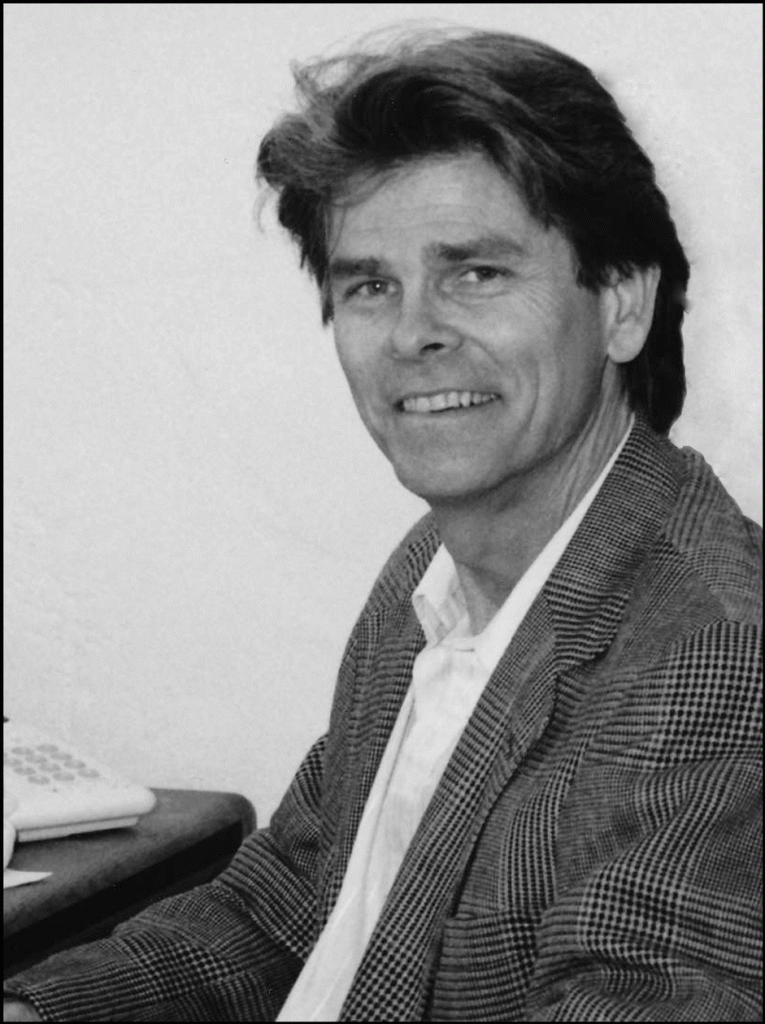Website & blogs © Louis Kraft 2013-2020
Contact Kraft at writerkraft@gmail.com or comment at the end of the blogs
Rod Taylor, Michael Parks, Sam Shepard. OUCH!
Three actors who have played roles in my life are
all gone in one godawful 2017.
Who’s next? Me?
Parks* and Taylor have been favorite actors since I discovered them, and this has continued throughout my life even though some of their films and appearances on TV weren’t in top-notch productions.
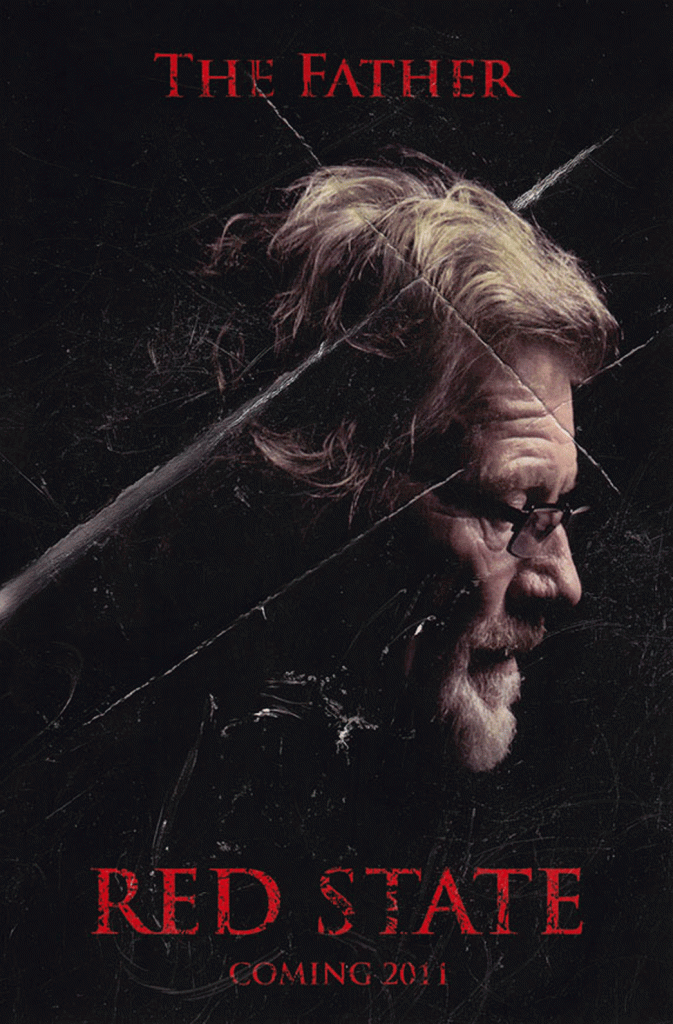
In LK personal collection.
Still, fully ninety percent of their performances that I saw shined.
Michael Parks also has the distinction of being my favorite singer of all time.
* Kevin Smith directed Red State (2011), a film in which Michael Parks delivered one of my favorite performances of all time. If you don’t know anything about Parks see Kevin Smith’s memory of Michael Parks. Warning: There are some foul words, but the interview is from the heart of a director who viewed Michael Parks as a good person and an acting genius—something I agree with. Better, Parks’ performance shows how a person can play evil on screen while being charming, charismatic, and certain that everything he does is absolutely for the good when he does it.
I haven’t seen all that many of Shepard’s films and I don’t think I’ve seen any of his TV work. Still he always adds intense credibility to every performance that I’ve seen.**
** All three have films on my top 60 film list.
**********
Time moves forward at lightening speed, and as the years have passed I have had a few-too-many encounters with the grim reaper.
As the body grows frailer, and as it is harder and harder to swing a blade with deadly intent I have come to cherish life. Shockingly, this is new to me as I have always been “charge forward with guns blazing.”
Two projects that are a long time coming
- Sand Creek and the Tragic End of a Lifeway
I plan on delivering a first rough draft to my editor, Chuck Rankin (OU Press), in December or January 2018, and the final draft in 2019. - Errol & Olivia
Research is continuous, and every so often when I have a few spare minutes I open the draft and add information. Right now I’m trying to confirm if Flynn’s first wife, Lili Damita, earlier had married the great film director Michael Curtiz or not. This must be confirmed without a doubt.
Below is an update on both.
Wandering through a life rife with change
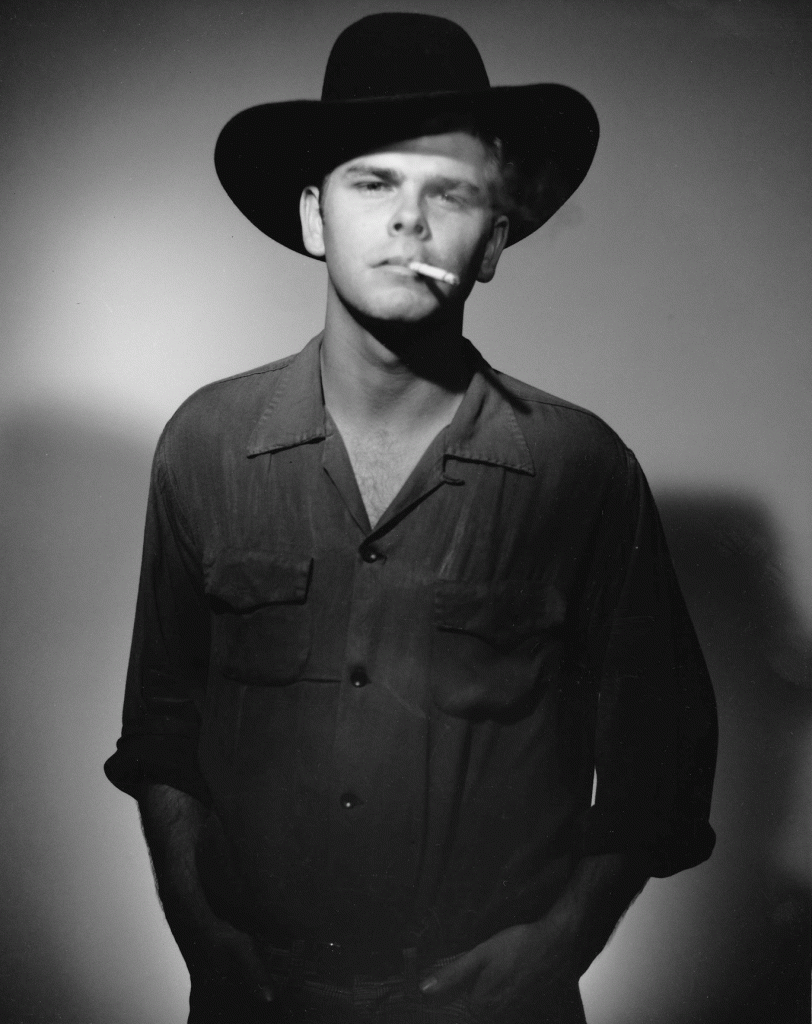
High school friend Dennis Riley, then a photographer’s mate in the U.S. Navy, took this image a few days after my last final at SFVSC (now CSUN) in June 1969. That day was my first acting publicity shoot, and this image represented how I often dressed while earning my BA. I had picked up the god-awful nickname of “Tex” in college as I often wore a cowboy hat. “Tex”? Yee-ough! (a sound; not a word) (photo © Louis Kraft 1969)
I’ve been walking between the races since 1970 (but really it had been earlier as my parents had an open door policy no matter what a person’s race was). That year I joined Volunteers in Service to America (VISTA), which is/was like a continental Peace Corps. I had wanted to work with American Indians (even at that age), and the two other possibilities were African Americans (Blacks back then) and Latinos (Chicanos then). There was a lot of training at the University of Texas in Austin, … and afterwards we—the other candidates and I—partied. Big time. We were housed in tall a dorm (ladies on one floor and guys on another), and the celebrations went deep into the night in various dormitory rooms (two rooms that shared a bathroom).
One night in the wee hours I said something to a married couple that they enjoyed but a Chicano who would eventually select people to work with Latinos didn’t like. Suddenly I had a knife at my throat as he grabbed me from behind. I was scared to death but had my wits and kept calm. In between his bursts of rage I pointed out that he had fifteen and perhaps twenty witnesses. Did he intend to kill them too? I also pointed out that if he killed me his cause was DOA (dead on arrival).
He let go of me, and let me tell you that I was one happy cowboy to see the sun rise that morning. Surprisingly at breakfast, which began at six, I had become a celebrity. This was stupid, and I hated it. From my view I was damned lucky to be alive. … A few weeks later the American Indian, Black, and Chicano group leaders chose their candidates a la choosing a sandlot football team. I was chosen early by a Black group from Oklahoma. A week of living with a Black family in Sapulpa (Oklahoma), more training in Austin, back to Sapulpa, and back to Texas before being assigned to Oklahoma City. My supervisor in OK City, Cheetah Gates, told me to ditch the cowboy boots when he saw them. I asked why. “The brothers don’t like cowboys,” he said. “If you want to live don’t wear the boots.” I took him at his word.

During the summer of 1976 girlfriend Kitty Moore (and she was one of the most gorgeous ladies I’ve ever known) was playing one of the leads in a Texas Tech theater department play (Lubbock, Texas). She was about to begin her junior year in college. … What I saw that summer was an eye opener. Lubbock was a mass of racial inequality and hatred, it struggled with what appeared to be a drug culture that grew by the day, and a theater department that was split by two different cliques. Some of my not so-good experiences in Lubbock initiated the writing of my first screenplay, and surprisingly it landed me my first screenwriting agent. I based the female lead on what I viewed as the essence of who Kitty Moore was (she eventually read a draft of Laird Francis and liked it). … All I can say about Kitty is that she was an exceptional human being and that I was lucky to have known her. I wish that our relationship could have continued. It couldn’t, and all I have are my memories.
This was just the beginning. By the mid-1970s I was writing screenplays and a number of them dealt was race (this came about after a summer of dinner theater in Lubbock, Texas, a place I was lucky to put in my rearview mirror without being tarred and feathered as racism in the city and factionalism in the Texas Tech theater department was rampant at that time). Most of my screen plays were current day, or at least historically based in the 1970s. The two exceptions included 1) Wonderboat, an epic tragedy that dealt with U-boats during WWII, and 2) Corsair, which dealt with the Englishman John Ward who became a feared Tunis pirate during the early seventeenth century.* By the mid-1980s I was writing and selling baseball articles, but soon changed focus to the American Indian wars (writing for periodicals and speaking at symposiums).
* Drafts of my screenplays are housed in the Louis Kraft Collection at the Fray Angélico Chávez History Library (Museum of New Mexico, Santa Fe). For more information about Wonderboat see Louis Kraft’s top 13 Errol Flynn films … a personal view.
In 1999 I wrote for a space industry firm that had one customer: Hughes. My major deliveries usually consisted of about 1,000 pages of documentation (and you would choke if I told you what Hughes paid for it). My editor worked in the company’s headquarters in Herndon, Virginia, as did my manager. Most of the documentation department was in Herndon except for one writer in Colorado, one in Northern California, and yours truly in the South Bay of Los Angeles County. That summer all of us attended week-long (wrapped between two weekends) demonstrations at headquarters that dealt with using code-based software to create documentation that could be delivered to multiple types of output while discussing the difficulty of such a massive change while still making our deliveries on deadline.*
* This didn’t happen during my time in the space industry, but I later experienced moving from WYSIWYG (“what you see is what you get”) book design to code-based production tools that could deliver documentation in various formats at the now defunct Sun Microsystems and later at Oracle.
 The editor and I had a great long-distance working relationship before my nine days in Herndon. During the evenings after code-based software demos she became my tour guide, dinner companion, and more. On one day when we got off early she drove me to Leesburg where I spent time with Wild West editor Greg Lalire at Primedia’s headquarters (they then published a great grouping of about 12 history magazines). Greg and I have been friends for decades.
The editor and I had a great long-distance working relationship before my nine days in Herndon. During the evenings after code-based software demos she became my tour guide, dinner companion, and more. On one day when we got off early she drove me to Leesburg where I spent time with Wild West editor Greg Lalire at Primedia’s headquarters (they then published a great grouping of about 12 history magazines). Greg and I have been friends for decades.
This editor, Jeanne Dodge-Allen, played an important part in my life—ranging from friend, lover, and a nightmare beyond belief. If I ever write my memoir she’ll be in it.
While Primedia’s headquarters I verbally pitched and sold an article on Ned Wynkoop and the Cheyennes to the then editor of MHQ: The Quarterly Journal of Military History (it was published as “Between the Army and the Cheyennes” in the Winter 2002 issue).
Being so close to Washington D.C. I had negotiated remaining in the lodging provided for me over the weekend and not flying home until Sunday. That Saturday Jeanne and I took the subway system from Herndon to the National Archives in Washington, D.C., and we worked together on Indian wars research. She was petite while perfectly formed, with a great mind that connected with mine, but also soft and caring. Everything seemed perfect. I thought. Unfortunately she had a dual-personality that I didn’t know about until later. She had told me about the “good ol’ boys” at headquarters, and what they were supposedly doing to her. The truth? What she told me, even if only partially true, was horrifying. I’ll never know. Shortly after I flew back to Los Angeles I became one of the “good ol’ boys.” I think that this was all in her head, but that doesn’t matter. She began calling my home phone but her voice was no longer soft and friendly. It had turned demonic and threatening. Eventually I received and unmarked package. Inside was an oversized mailing envelope with one word written on it in bold red ink: SHAME (there was long dark hair inside the envelope).
Creepy. I kept it for DNA evidence.
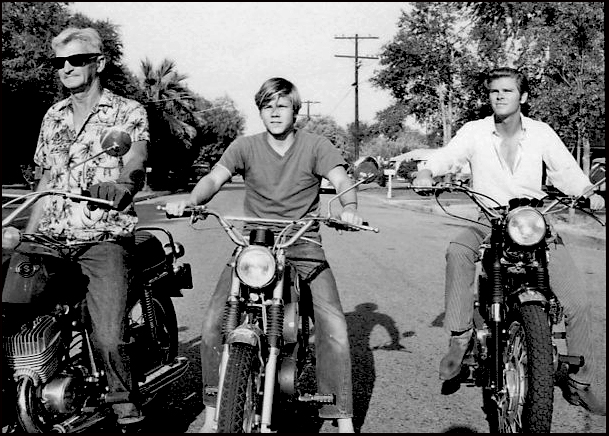
My father Louis Sr. (left), brother Lee, and me. I’m on a 1970 Triumph Trophy 500. The bike survived both accidents described below, although the collision with the girl that outweighed me turned me into a gimp for a couple of months and the Triumph required a lot of work to fix. For the record I was wearing a helmet during both crashes. (photo © Louis Kraft, 1972)
While racing around turns on a narrow mountain dirt trail, the motorcycle in front of me suddenly stopped when the path ended. To avoid ramming the motorcyclist I attempted to slide around him as I braked. I almost pulled it off, but instead took my Triumph over a cliff. On another occasion an oversized girl who was running hit me broadside as I exited a driveway at low speed. My hand jerked the accelerator, the Triumph shot into the street, jumped a curb, and left me knocked out and hanging from a chainlink fence. Car wise, the worse was hitting the center divider of the CA 134 freeway headfirst at high speed, the car spun and took out the left side on the center divider, spun in the opposite direction and destroyed the rear end, and this is where the car stopped. Shockingly I walked away from the crash (what helped was that it was two days before Christmas 2010 and traffic was light).
Being vague has become a way of life to protect numero uno—yours truly
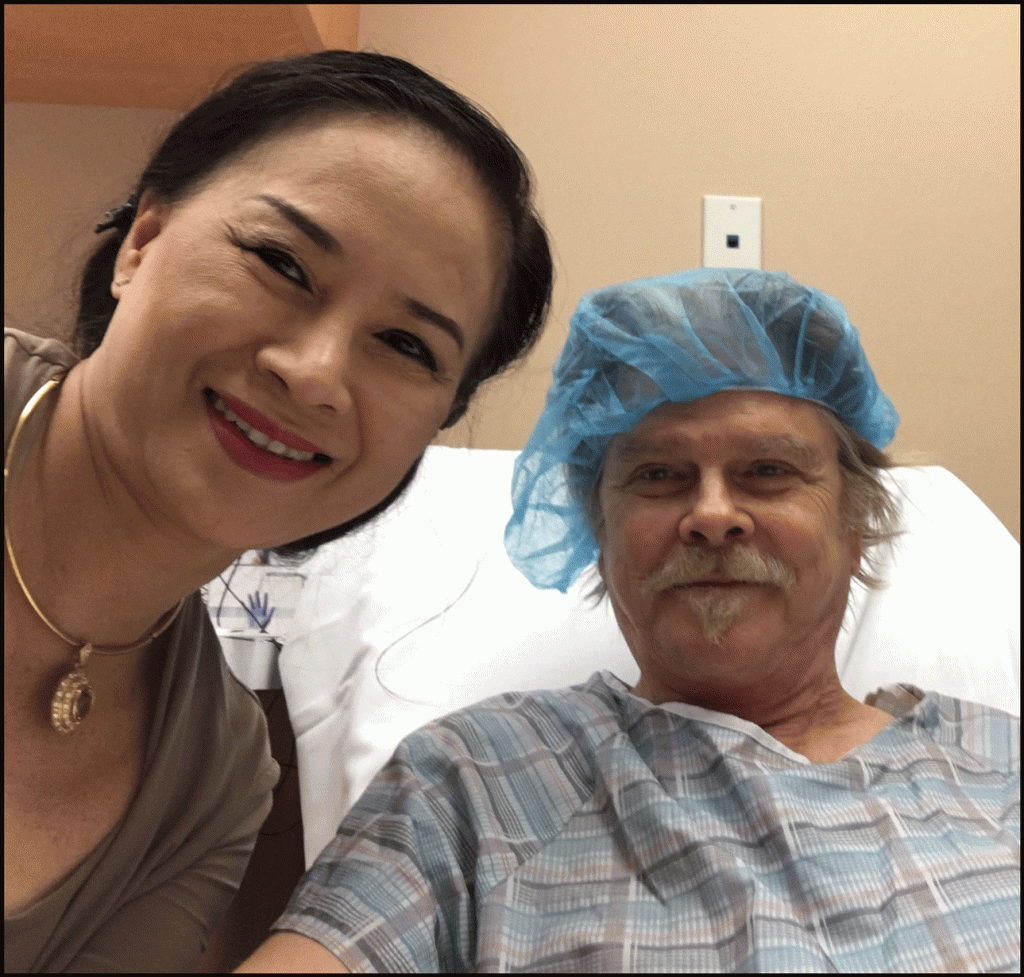
LK and Pailin on 2sept2016. It was just minutes before I would be prepped for throat surgery. (photo by Pailin Subanna-Kraft and © Pailin Subanna-Kraft & Louis Kraft 2016)
I’ve been coy, or rather vague, elsewhere on social media. That’s just me, but the horror of an end stares me in the face, and for multiple reasons. … I have three ladies to protect, three lives to see long into their futures. You know one of the ladies but the other two will remain unknown. I also have multiple books to complete. This is a massive task but I have every intention of completing it. Unfortunately there are pointers that hint that the future may not be as I envision it.
Actually I’m staring at something that I cannot possibly complete today as the story is ongoing and without end (unless …?). This leads me to a place that I have ignored, been vague, or worse I have refused to discuss. I’m going to try and do that in this blog, and hopefully with a minimal number of words while still talking about Sand Creek and the Tragic End of a Lifeway and Errol & Olivia status.

LK joking while waiting to be prepped for throat surgery on 2sept2016. I was relaxed and enjoying myself. (photo © Pailin Subanna-Kraft & Louis Kraft 2016)
In September 2016 I had my second operation that year (both were in my ear, nose, and throat specialist’s surgery center in Northridge, California). It was the twentieth surgery to date and was a throat operation (in April I had my second sinus surgery there). As advertised it would improve my breathing. Surprisingly, or perhaps not so surprising as I had been warned that the recovery would not be fun, it easily took two weeks of pure hell as the drugs to mellow the pain flat out didn’t work.
Two previous operations had eliminated cancer, and if they had not happened I would have long ago begun dancing with angels. One removed a portion of my spine, and if this didn’t happen I would have stopped walking fourteen years ago. … I have other problems now, for earlier this year breathing again reared its ugly head, but this time he brought his pals with him. Walking had been making great strides between late September 2016 and the beginning of June 2017 as I averaged fourteen miles per week. … The phrase, “all things must pass,” has been around forever, but for me this couldn’t happen soon enough as it began to get scary in mid-spring 2017. By this time isolated incidents slowly began to become ongoing events to the point of concern. Worse, I hadn’t been able to figure out why this was happening and neither could my specialists.
I know … still vague! Sorry, but I have to ease into this.
I’m a fighter. I have three aforementioned ladies to protect,
I have books to write, and I have every intention of willing myself to do this.
A quest for truth
Many books contain errors that have been perpetrated for decades or longer. Sometimes this is because the “so-called” fact has been printed so often that it is accepted as truth. Other times it is because of laziness, or worse because it propels a writer’s story forward even though he or she knows that the fact is fictitious. This leads directly to writers who ignore proven facts simply because it blows holes in their set-in-stone premise. And it gets worse than this, for sometimes writers create facts and quotations and cite obscure material figuring that most readers don’t have the source, and the handful that might have the documentation won’t bother to check the citation. … The above is a mouthful, but not my point. Like medicine, history is not an exact methodology and the reason has always been in place. Simply stated, if five people participate in a specific event there is a good chance that their views on what happened differ. Sometimes slightly but at times considerably. Occasionally a known fact can confirm truth in a documented event while at other times deciding upon what really happened is not an easy task.
A couple examples follow:
LK speaking about Errol Flynn, Olivia Havilland, and the Santa Fe Trail (1940) at the Festival of the West, Scottsdale, Arizona, on 19mar2005. (photo by Johnny D. Boggs)
Olivia de Havilland is a good case in point. Fortunate enough to spend time with her I know firsthand that she is a warm, kind, and caring person. She is also charming and very intelligent, and can easily shift from topic to topic without hesitation, such as moving from being cast in Gone with the Wind to Jack Warner to modern-day USA politics. To be precise she specifically told me how well she knew Warner (great stuff here, but not in agreement with what has been published). In regards to Gone with the Wind, she had a “take no prisoners” stance. On the visit wherein we talked about her landing the role of Melanie I was well prepared for the conversation. By that I had notes with me relating to her landing the role including the points-of-view of fired director George Cukor and producer David O. Selznick, along with additional storylines. She listened intently to what I shared, and then proceeded to inform me what really happened. Like most primary sources—and I don’t care if it is 1860s Colorado Territory or 1930s Hollywood—everything must be considered in an attempt to piece together what happened. At times I have placed conflicting, but just as valid, points of view of an event in my notes. I’ll give you one guess of what is going to happen here.
Edmund Guerrier and Julia Bent were two mixed-blood Cheyennes who were young at the time of the Sand Creek Massacre in Colorado Territory on 29nov1864. They were both in the village on that tragic day, but luckily both escaped death and sexual dismemberment. Some books have them married on that tragic day, but without any proof. Actually they weren’t married, and wouldn’t be for many years in the future (and I can prove this).
An Active Person am I
Always! I learned how to duel with a foil with the great Ralph Faulkner, who won the World Amateur Sabre Championship in 1928, and represented the USA at the Olympics that year and in 1932. He had come to Hollywood to become an actor in the early 1920s (even playing Woodrow Wilson in a silent film) but soon began his great career as a stunt double and as a choreographer of duels for decades, as well as having has own Falcon Studios on Hollywood Boulevard where he taught fencing for over fifty years.

My partner parries an LK slashing sabre lunge to her midriff at North Hollywood Park in December 1981. Although mostly cropped, our coach and the cameraman dominate the foreground of this image as they taped the workout. (photo © Louis Kraft 1981)
I grew up with a pool, swam in the Pacific, and up until early 2013 swam (the last years in 24-Hour Fitness pools, which are great!). A lot of sandlot football, and this resulted in my first real injury in the late 1960s. Ditto sandlot baseball (my parents refused me playing on a Little League team), but between 1980 and 1990 I played ten years of year-round softball (for the Kool-Aid Kids), but this ended in early 1990 with a knee operation and my brother’s sudden death (the most shocking event of my life then and it still is today). At that time I had also been running since the late 1970s, usually doing three and a half miles or seven miles per day. Let me tell you that running and swimming (and I was doing thirty-plus laps at 24-Hour Fitness without a break when I ran out of time) keep you in shape. Think the 24-Hour Fitness pools are Olympic sized (they were certainly the same size as the pool that I used in college). Oh, I also learned swashbuckling, or stage dueling, in the early 1980s ( and fought and choreographed duels for the stage), and I still work out with a blade when all is well.
A change of pace
In fall 2015 I redid the front yard during my spare time (I had previously removed the grass and already had a lot of drought-resistant vegetation growing in the yard). I leveled the ground, put in walkways of rock and stones and wood chips, and created a maze of cactus, aloe vera, and other plants that provide beauty (at least to my eyes). Every time I stand or sit in the front yard I feel as if I am in New Mexico or Arizona or the original SoCal. This was easy work and I never broke a sweat.

Still, a lot of the work was on my knees, and this is where I discovered a problem for in this position I began to huff and puff. I completed the work about the second week of December but the breathing problem bothered me. I began searching for answers, and the only one I came up with of pointed to my heart.
My heart has always skipped a beat and my cardiologist and I have tracked it for decades without any problems. Early in January 2016 I visited him (he’s also my internist), and he ran all the usual tests and everything came up negative.
How? Why? Something was going on. … Finally he had me blow into a breathalyzer. I failed—twice. He prescribed an inhaler and pills to control blood pressure, which he felt would climb (my blood pressure had always been good, but soon it would become a challenge).
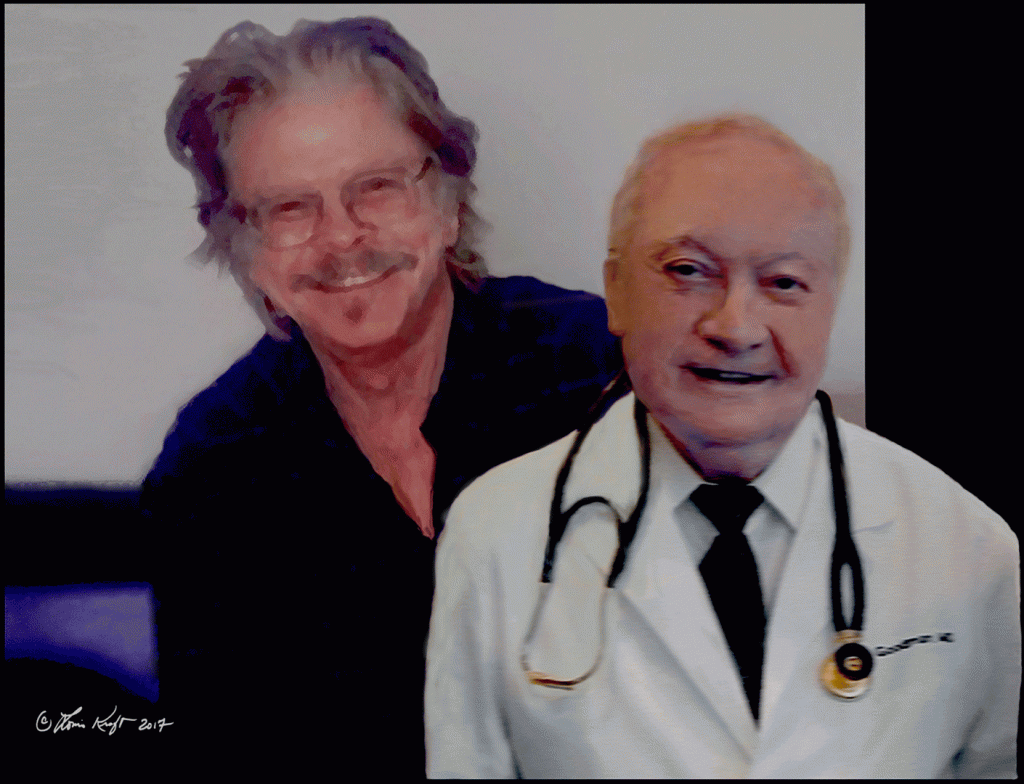
Final LK art of my internist/cardiologist of over twenty years, and writing partner on The Discovery. (art © Louis Kraft 2017). If I ever complete The Discovery page on my website I intend to use this image on it.
Late on January 16 while using the inhaler for the night dose I fell backwards into the bathtub and cracked the top of my skull open. Blood flowed onto the wall and into the tub. My legs were hooked over the side of the tub, my ass was in the tub, and my back and head propped against the back of the tub and the wall. The blood was slippery and it continued to flow. I couldn’t get a firm grip with my hands and had become a turtle stuck on his back. Pailin, who had had just gone to bed, heard the crash, and rushed to help me get out of the tub. Afterwards she cleaned me up and I cleaned the bathroom. She asked if should go to the ER. … I shook my head. My brain functioned and I had performed a few simplistic concussion tests. I felt I okay, but told her I’d go to the internist/cardiologist in the AM. Before going to bed I called my PPO’s nurse line, and she recommended a night in the ER. … Pailin had a long day in front of her and I didn’t think the injury was that bad.
The following morning in my doctor’s office the nurse cleaned the wound as well as possible. She told me that I’d need staples. After checking me over the doctor asked if I was dizzy, felt faint, or had passed out before I fell. I told him no, that I was wide awake when I hit. He confirmed the nurse’s view, I walked across the driveway that separated the medical building from Providence Tarzana Medical Center, and checked into the ER. … The wound required six staples.
Sand Creek and the Tragic End of a Lifeway
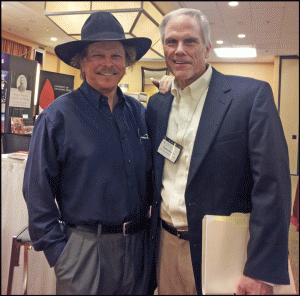
Pailin took this image of LK and Chuck Rankin at the Western History Association Conference in Newport Beach, California, on 17oct2014. (photo © Louis Kraft & Chuck Rankin 2015)
Folks, this manuscript dominates my days. As said above a delivery is due to my editor in December 2016 or January 2017. Alas, the word count grows and grows and grows. This is similar to the situation I had with the Wynkoop book contract. I luckily had then Editor-in-Chief Chuck Rankin behind me then, and he was again responsible for the Sand Creek contract. Actually Chuck pitched the story to me. I refused, but he refused to accept “no” for an answer. It took us two years to work out a proposal that was acceptable to both of us. … It is still acceptable to me, but this story has been pure hell to write. The research is ongoing, and as I’ve said elsewhere I put in about eight hours of research to about two hours of writing. And this is probably an understatement on the research side.
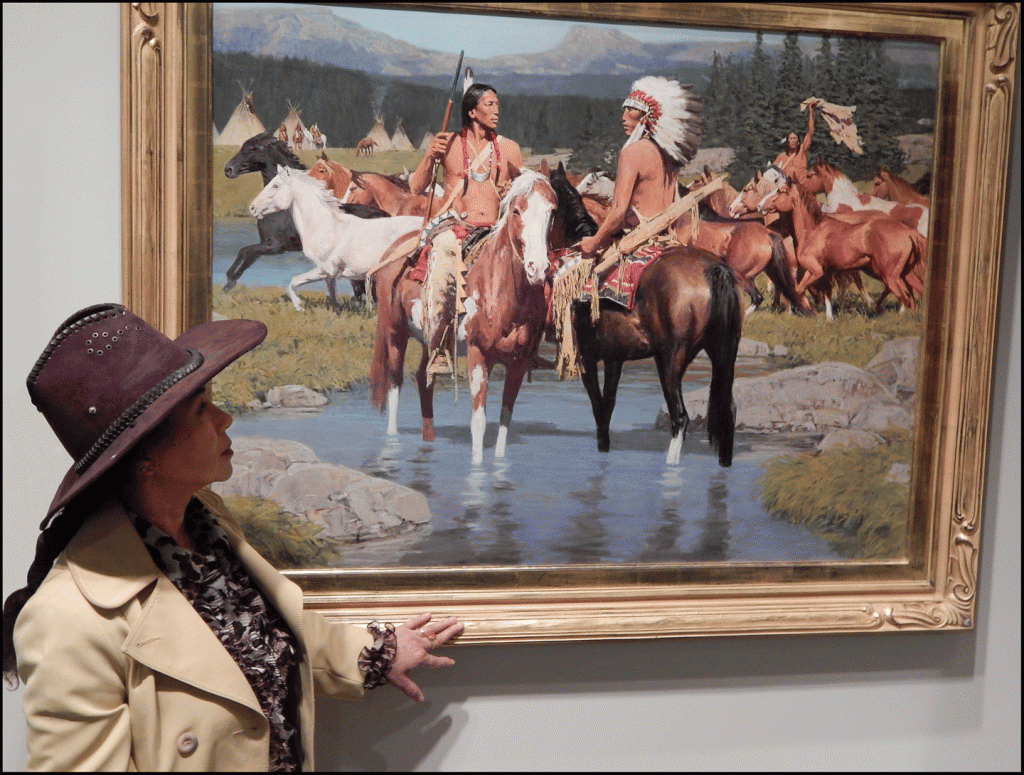
Pailin studying David Mann’s painting, “First of Five Thousand,” at the then Autry National Center on 7mar2015. Unfortunately the Plains Indians are not identified, something that I would have liked. The painting’s story is about a raid that is returning home to Canada with horses stolen in Mexico. Two thoughts: 1) That was one hell of a raid, and 2) That was a long trek to complete and return to their village safely with 5,000 horses. Considering that unknown Indians have successfully driven 5,000 horses from Mexico to Canada sounds like a movie plot and not reality, I like this painting. (photo © Louis Kraft 2015)
Although Chuck Rankin was pleased with the Sand Creek fight that was in the 37-page book proposal years back, it too has changed considerably as I know more now. Better, a lot of people are coming to life in what is currently chapter 13 as the fight turns into a scramble of single events that merge together to create the whole. …
Right after I learned of Sam Shepard’s death I again watched his and Barbara Hershey’s film, Defenseless (1991). It has been on my top 60 film list, off it, back on it, and off it ad nauseam. When you have a chance, do yourself a favor and see this film. Nice performances by Hershey and Shepard.
 The DVD cover for Thunderheart (1992), another film I watch often. I can’t begin to tell you how much I learn by studying film that I respect. For one thing, and this is important to Sand Creek and the Tragic End of a Lifeway, as decent film constantly provides ideas on how to smoothly move from one event to the next. Val Kilmer, Graham Greene, Shelia Tousey, Ted Thin Elk, John Trudell, Fred Ward, and Shepard are the key players in Thunderheart, a thriller that deals with a murder on a Sioux reservation around the time of the 1973 takeover of the town of Wounded Knee (27feb1973-8may1973) and the standoff with the U.S. government. For the record, and in stark contrast to Defenseless, this film has constantly been in my top five. On Thursday, 17aug2017, I asked Pailin if she’d like to join me in the Kraft Theatre and watch Thunderheart with me. She accepted and was glued to the screen. |
For the record, the Cheyenne storyline is now jumping forward in leaps and bounds. John Chivington and John Evans move forward at a good clip. As do Black Kettle and Arapaho Little Raven. These two chiefs are coming to life through their actions and words. But these four aren’t the only ones: Ned Wynkoop, Rocky Mountain News owner and editor William Byers, and John Smith are also beginning to shine. Alas, William Bent is a little behind schedule, but this should end soon.
Earlier this year the manuscript lost a chapter when I decided merge chapters 1 and 2 together. The reason was simple: The manuscript is people driven regardless if they are major players, supporting players, or simply players who appear and then are never seen again. Too much time was being spent before I introduced a Cheyenne who emerged from the mists of time. Unfortunately his life ended tragically. And of course I’m struggling to confirm his presence at an early meeting with William Bent or reject it.
As in the past I take my time and challenge what I write and what I consider required for the manuscript. And time is ticking, … tick, tick, tick. It is time to walk the walk, that is it is time to put up or shut up.
Better, the Cheyennes and Arapahos are moving forward. We’re talking about raids and treaties and death and peace. We’re talking about a people who were led by chiefs that stood firmly for peace to save their people from murder as well as chiefs that stood firm for freedom at any cost.
Back to the healthy world of Kraft
This heading sounds facetious, or at best a big fat lie, … but this isn’t so. I have taken good care of myself over the years, and even more so after the cancer and spinal surgeries. As stated the first cancer surgery was to keep me among the living and the spine surgery (some four and a half months later) to hopefully keep me walking.
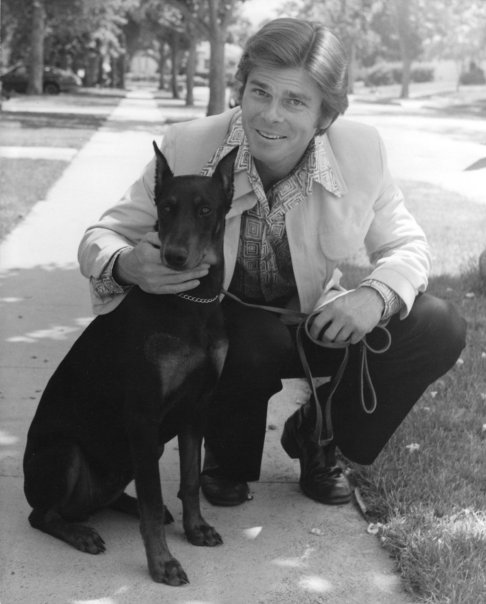
Dejah Thoris (named after the princess of Mars in Edgar Rice Burroughs’ John Carter/Martian novels). Fully grown in this 1978 photo, she was the kindest and sweetest animal I have ever known. (photo © Louis Kraft 1978)
After I fainted the morning after this cancer surgery when three nurses attempted to help me to a chair by the window all hell broke out. A neurologist at the hospital (not one of mine) thoroughly examined me and afterwards proclaimed that I would not walk in the near future … to which I told him to F-himself and get out. Additional testing continued deep into the night, and without checking I remained in the hospital nine days.
Not all was well when I returned home from the cancer surgery on a Saturday for on the next evening the catheter fell out of position and required a trip to the Encino Hospital Medical Center. The ER doctor told me he didn’t know how to put the catheter back in place. I told him to look it up in a medical book, which didn’t please him. Too bad! I then insisted he call my surgeon (who is also my urologist, who I’ve seen every three months since fall 2002) and he replaced it in less than a minute. The catheter was finally removed twenty-one days after the surgery. No fun.
There would be additional surgeries over the coming years, including an implant of animal tissue. I never asked, but have since hoped that it was Doberman tissue and not rat tissue.
The next biggie …
My sister, Linda Kraft-Morgon, lived in Lake Arrowhead with her husband Greg. They were supposed to come to my house for Christmas 2005 but I was under the weather and Linda’s immune system could not be put at risk. The second week of January Linda called and told me that she would soon die of the cancer that she had been fighting for several years. On the fifteenth I drove to Lake Arrowhead and we celebrated Christmas. On that day she told me that she had six more weeks to live.

Sunday, January 15, 2006, was a day that I’ll never forget. (photo © Louis Kraft 2006)
Sudeshna Ghosh, my documentation manager at Sun Microsystems, did one of the kindest things anyone has ever done—something I’ll never forget—for she allowed me to take a few hours off to drive to Lake Arrowhead two-three times a week during weekdays to see Linda, which gave me three to four days each during the remaining weeks with my sister. Sudesha’s compassion gave me a lot of memories captured in a handful of stolen hours, and they will be forever cherished.
During drives up the mountain to see Linda a sharp pain in my head became so intense that on numerous occasions I had to pull to the side of the road until it subsided. I didn’t think much about it as I figured that it was stress. … It wasn’t, for after Linda died on March 1 it continued in Los Angeles. That April I had my first sinus surgery, and I was lucky I did for if not I would have been heading for big trouble. Greg was right there for me, as was Diane Moon, my former girlfriend and her son.
The years continued
I swam laps at 24-Hour Fitness, worked out with sabres, wrote for companies (Yahoo! and Oracle), did my research in the field as well as in archives, spoke about the Cheyenne and Apache Indian wars as well as Errol Flynn and Olivia de Havilland, saw articles published, finished a book (Ned Wynkoop and the Lonely Road from Sand Creek), and signed a new contract (Sand Creek and the Tragic End of a Lifeway).

March, Pailin’s good friend Daranee’s son, took this image just before we went through security at the Thailand International Airport on 1dec2014. We had spent the previous evening with Pailin’s great friends (Noi and Wichen) in Bangkok. Two of her brothers Pum and Mana, and Mana’s wife Pen, who had taken care of me during the wee hours before dawn when I arrived in Thailand weeks before and made sure I made my next flight, also joined us (along with other friends). Mana, Pen, and Pum took us to the airport the next morning.
Life was good. …
And on June 15, 2013, it got better. On that day I hosted a dinner party for five at Tujunga House. I invited a good friend and Errol Flynn expert and his beautiful wife (Robert and Annette Florczak) and another twosome. The other couple brought a lady for me. She was petite, pretty, quiet, and yet totally aware of her surroundings. Oh yeah, she was born in Thailand. Before that afternoon and evening ended I knew that I wanted her in my life. Yes, “That Lucky Old Sun” (my favorite rendition was Frankie Laine’s, released for the first time in 1949) is about long days and struggle while the sun shines. I find this very positive. Soon Pailin Subanna entered my life permanently—making me the luckiest guy in the world. And this feeling has easily quadrupled over the years.
Errol & Olivia is reality
I know that by now many of you think that my book on Flynn and de Havilland is little more than a pipe dream. Not so. I’ve been researching Errol & Olivia since 1996. The research is ongoing although the writing is light (but that is only because of what has been going on in my life and the major task of completing Sand Creek and the Tragic End of a Lifeway).

In spring 2013 I spoke about Ned Wynkoop at the Order of Indian Wars symposium in Centennial, Colorado. I think that the trip was eleven days, and most of them I spent with Layton and Vicki Hooper in their then Fort Collins home (it was my pleasure, although most of the time we were snowed in). Before the symposium I enjoyed a great morning, lunch, and afternoon with Mike and Dee Koury. Before leaving I pitched Mike on a Gatewood/Geronimo talk in Tucson for the OIW’s 34th Annual Assembly, and he kindly said yes. This image was taken in Tucson on 26sept2013. This was Pailin’s first Indian wars event (and to date her last).
For the record my last article, “Geronimo’s Gunfighter Attitude,” was published in the October 2015 issue of Wild West. At that time I informed editor Greg Lalire that there would be no more articles until the Sand Creek manuscript was in production. In September 2013 I delivered my last talk, “Gatewood’s Assignment: Geronimo,” before the 34th Annual Assembly of the Order of the Indian Wars in Tucson, Arizona. Again, this is related to the writing that I must complete (Sand Creek and E&O).
You’ve waited this long, a little while longer will only build your anticipation and that might be good. I can’t begin to tell you what I have found about Flynn and Livvie (Flynn’s pet name for Olivia) over the decades but it is massive. When Errol & Olivia is finally published it will be an eye-opener for numerous reasons (and this is not braggadocio). There is a lot of new information to present, there are egregious errors that need to be corrected, and the presentation will not be like any book you have read about either of them before.

This is a publicity shot for They Died with Their Boots On (1941). It won’t make into Errol & Olivia.
Hint: If you have read one or more of my biographies you have an idea of what is coming. Continuing this thought, if you have read any of my nonfiction books you know that I don’t just tell one side of a story. While saying this, I must add that I don’t take on long-term projects (Charles Gatewood, Geronimo, and the Apaches as well as Wynkoop, Cheyennes, and Sand Creek) without being 100 percent behind my topics. By that I mean that I do not explore major players in my writing without a deep commitment to write the best book possible. Also, I never write a book or article with the intention of trashing someone. As far as I’m concerned just about everyone (and there are exceptions, such as Charles Manson or Ted Bundy—both of whom were mass murderers) believes that they were right when the did something. Sometimes events overwhelm them and they act rashly, but this isn’t often.
 A staff artist for American Classic Screen, John Tibbetts, created the art of Flynn and de Havilland in Captain Blood in 1978, and it graced the cover of the Jan/Feb 1979 issue of the journal (right). Tibbetts’ art grabbed my attention decades ago. However, as the journal is long gone it might be difficult to track down who currently owns the rights to the painting or more important obtain a good digital copy of the original art.
A staff artist for American Classic Screen, John Tibbetts, created the art of Flynn and de Havilland in Captain Blood in 1978, and it graced the cover of the Jan/Feb 1979 issue of the journal (right). Tibbetts’ art grabbed my attention decades ago. However, as the journal is long gone it might be difficult to track down who currently owns the rights to the painting or more important obtain a good digital copy of the original art.
If you’ve missed it, Errol & Olivia deals with their arrival in Hollywood, landing the leading roles in Captain Blood (1935), their life and times during their eight films together (1935-1941), and an epilogue. Like my Indian wars research I question a lot of what is generally considered fact for way-too-often information that has been sold as truth for decades is taken as truth, when in fact it isn’t. Ten, twenty, even a hundred printings of a supposed fact doesn’t guarantee anything if the source is unknown. Heck, it could have originated in a Daffy Duck cartoon. … I’ve seen numerous photos and a handful of paintings that feature Flynn and de Havilland together that would work for the cover of the book. Currently I’m leaning toward images dating to the 1940s.
For the record two other books are planned on Flynn. I already have the art that I want for the cover of one of these books.
A year of uncertainty—2017
The year began as any other, and for the most part I felt good. Walking the fourteen or so miles each week had done wonders for me. I even had different routes (half mile, mile, mile and a half, two miles, two and half miles, and three miles), and with this range I could take care of a lot of errands from grocery shopping to needed items at the drug store to dealing with the post office and the public library.
And this includes Sand Creek progress
Research and writing of Sand Creek and the Tragic End of a Lifeway has made decent progress. Actually it finally started to have a life of its own as certain historical personages began driving the manuscript. I let them take control and followed leads until they revealed events and more important certain players’ roles in these events in ways I never imagined. But sometimes the leads led to dead ends, but this is always good as it lets me know what I thought happened never did. I can’t begin to tell you how valuable this is to know.
But for me there’s always that bleepin’ BUT
I stopped walking two or three days before July 5, 2017, as my left heel hurt. Worse, during the last handful or so of walks I often began to breathe heavily. At times I felt dizzy. Each time I halted until my breathing returned to normal. Also, if there was still a hint of dizziness or lightheadedness I remained stationary until it also passed.
As July 4th fell on a Tuesday our trash pickup was the following day. The first trashcan was picked up about 6:30 but I didn’t retrieve it immediately for on this day I felt dizzy and was wobbly on my feet after taking my one medication and using the prescribed inhaler. This had happened before (but sometimes it was later in the day). At these times I sat down until the feeling passed (sometimes at the computer). By seven that morning I felt great, and went outside to put the trashcan away. When the trashcan was in place I let go of it and looked west toward the garage. Without warning I fell over backwards, crashed onto the driveway, and cracked the back of my skull open.

I took the photo that I based this art on nine hours after the fall. I was only a handful of inches from a huge prickly pear cactus that a friend gave me in 1992. I shudder when I think about landing on that cactus. (art © Louis Kraft 2017)
I had difficulty rolling onto my stomach. Luckily Pailin had taken the day off as it was her birthday. Hoping that she was still relaxing in the dining room I called for her. She heard me, rushed to help me roll onto my stomach, stand up, and into the house. A bloody trail followed us all the way to the bathroom, where she cleaned the wound. Without her I’m certain that it would have been a struggle for me to get off the asphalt. Nervous, she called my daughter and ex-wife, and the three of them took me to the Providence Tarzana Medical Center emergency room.

This is how I felt when admitted to the ER. This photo of me was taken on 14dec1979 while in makeup at Universal Studios. (photo © Louis Kraft 1979)
Surprisingly, and certainly after a holiday where firecrackers and other nasty things light up the sky deep into the night, there was no waiting line. The wound continued to seep and I quickly stained the sheet behind my head. After I was cleaned up more, the ER doctor examined the damage while she asked all the usual questions: Did I feel faint, dizzy, or light-headed before the fall. I didn’t feel anything before the fall, absolutely nothing. This was just the beginning as hours would pass while tests were performed and studied. The doctor finally returned and informed me that the test results (including a CAT Scan) were good. She left and my scalp was cleaned yet again. The doctor reappeared and inserted three staples into my head. I was released, but before leaving I asked the attending nurse to clean my scalp and wrap my head. “Why?” I held up my right hand; my fingers were red with fresh blood. “So I don’t ruin the car seat.” She did as requested.

It was pushing three in the afternoon when I was released from the ER. No one had yet eaten, and everyone asked if I was up to a food break on the way home—something quick? “As long as it isn’t McDonald’s, Carl’s Jr., or something similar, I’m okay.” We settled on Sharky’s Woodfire Mexican Grill. Until seeing this image by my ex-wife I didn’t realize how red I was at that time. (photo © Louis Kraft & Pailin Subanna-Kraft 2017)
The head healed slowly, but the dizziness increased and the blood continued to seep. Over the next week or so I saw my internist/cardiologist and my pulmonary specialist and presented them with detailed notes and told them the highlights. My pulmonologist told me that my one medication could cause dizziness (I already knew this per the prescription’s documentation but was happy to have a verbal confirmation) but my internist/cardiologist would have to change the prescription. The inhaler was his and he told me that it didn’t cause dizziness. “What about the potency of it?” When I had tested several inhalers in May they had a higher dosage. Since I already had another appointment with him early in September he suggested we discuss it in more detail then. I agreed. … My internist/cardiologist didn’t think that the medication caused my dizziness.
I still didn’t know what was going on, but I knew that I wouldn’t be doing any walking in the near future, and that my six-plus hours of yard work would be less. … On the plus side I had more time to research and write.
The Sand Creek tragedy is in my blood
Oh yeah, you can bet it is! Yesterday, today, tomorrow, and now forever. I’ve known Ned Wynkoop intimately for decades. This meant that I knew something about Black Kettle, Little Raven, John Evans, John Smith, George Bent, John Chivington, Bull Bear, Left Hand, Silas Soule, and on and on, but not as much as I would have liked as I had previously focused on their connections to Wynkoop. This is no longer the case, for now I need to know them as much as I possible. Some of this has been easier said than accomplished.
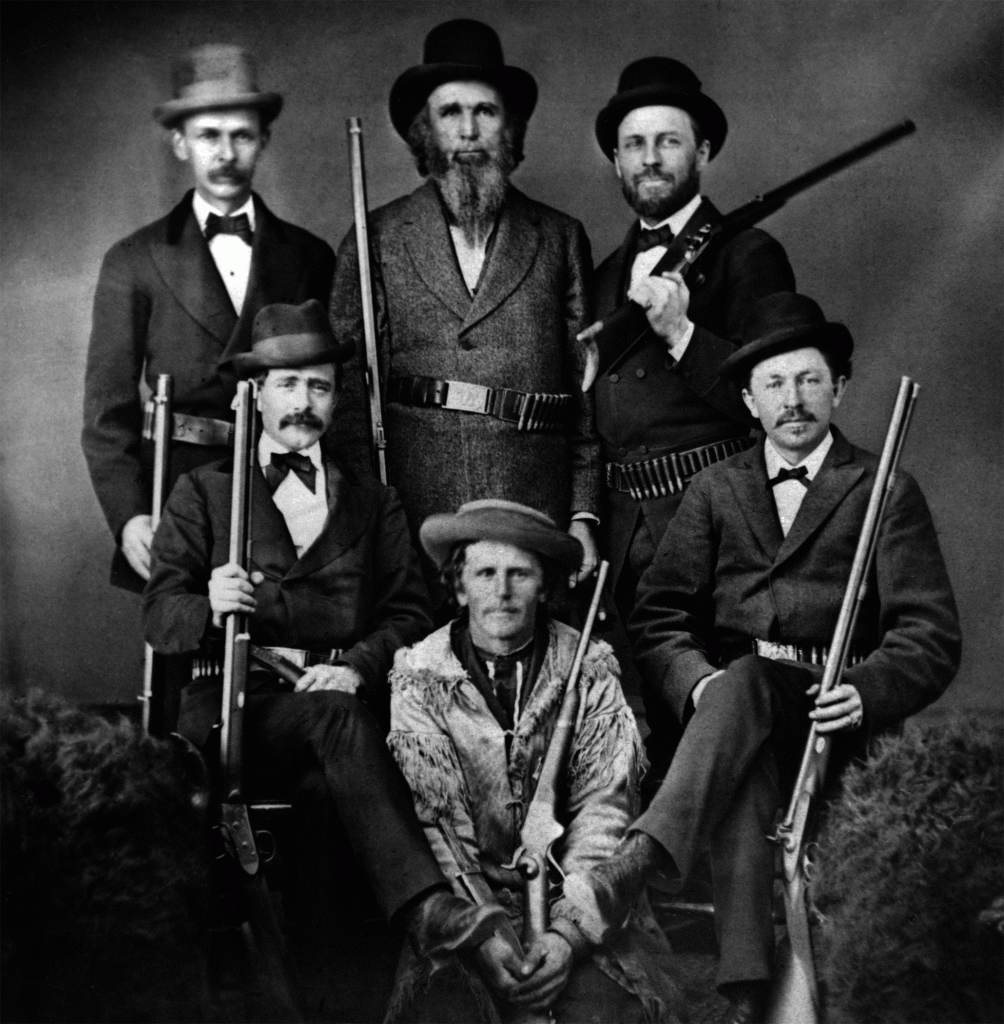
In this “hunting party” image Rocky Mountain News editor William Byers is standing at the right (as printed in “When Wynkoop was Sheriff,” Wild West, April 2011). From the moment I saw the photo during a research trip I have liked it. Alas, Byers is the only person in the photo that has been identified to my knowledge. I had suggested the image to Editor Greg Lalire, but then had second thoughts about using it as at the time I was considering it for the Sand Creek book. When more room was required at the beginning of the article for a portrait that I had done of Ned Wynkoop that was smaller than I felt it should be and suggested to Greg that he cut the “hunting party,” he emphatically said,”No.” “Why not?” “Because I like it.” I could understand his view as I still like it. However, I have decided that it isn’t for Sand Creek as it dates to the mid-1870s (which is interesting as Byers looks younger here than in the 1860s).
At one time the word “survival” was in the title of this blog. It no longer is as it appeared to relate just to me. Nothing could have been further from my intension. For most of the leading players, including everyone listed above, and a good number of the supporting players in the Sand Creek story, dealt with survival often. For the Cheyennes and the Arapahos it was a part of their daily life, be it food, the weather or tribal enemies, such as the Pawnees. When the white man—the vi’ho’ i—came they were presented with an even greater danger to their survival. It was no easier for the Anglo Americans who were lured to their world by the dream of golden riches, or those who followed and discovered a magnificent land. They too, were at risk, but not only from the people whose territory they craved, but each other while experiencing the same daily problems as the people they wanted to eliminate (food, weather, and so on). Doubt not that those who survived in the land that became Colorado Territory were strong, focused, and had no intention of ignoring what they saw as their future.

Byron Strom, custodian of the Anne E. Hemphill Collection, graciously allowed me to use this image of Captain Silas Soule on 1apr1865 (his wedding day) in Ned Wynkoop and the Lonely Road from Sand Creek. Actually he had given me permission to use two images, but the other I failed to restore in a timely manner. My skills have improved over the years and with Byron’s permission I plan on taking another attempt at an image that is terrific although terribly deteriorated.
The Sand Creek and the Tragic End of a Lifeway contract states that the book will contain 37 images. Three will be maps and I’ll deal with them when the manuscript is in production. I’ve been looking for images for the book for years now. I prefer to use images that date to the time period of the manuscript. Hopefully there are photographs that will support the text, but in some cases I have used them in Ned Wynkoop and the Lonely Road from Sand Creek. I really don’t want to duplicate many of these images but know that some will be reprinted as they are key to the storyline unless I can locate similar images. At this time there are four photos that I’ll probably reprint, including the great portrait of John Chivington.
I’ve often used art (woodcuts, paintings, or line drawings). Also I have no problem with creating collages, as they count as one image. … I’ve been looking at the work of Cheyenne artists, and some of their work is descriptive and tells a story. If I decide to approach any of them, they will have to understand that I’m just a writer who would like to use their art and that I will provide them with a first edition of the book.

The cover for the October 2015 issue of Wild West. Really nice work by the art director.
There’s a story here (there’s always a story). I did two books on Lt. Charles Gatewood (Sixth U.S. Cavalry), Geronimo, and the Chiricahua Apaches’ struggle to remain free in the 1880s over a ten-year period. During a longer spread of time Wild West printed two stories of mine dealing with this subject. One of Gatewood finding Geronimo in Sonora, Mexico, and talking him, Naiche, the last hereditary Chiricahua chief, and the remnants of their people into returning to the United States and surrendering (“Assignment Geronimo,” October 1999) and Geronimo’s struggle to remain free (“Geronimo’s Gunfighter Attitude,” October 2015). Both magazines featured the great painting by Howard Terpning (“Legend of Geronimo”) on the cover.

Guy Manning’s Geronimo painting (El Prado Galleries, Sedona, Arizona).
For both articles I recommended Guy Manning’s terrific oil painting of an alert and squatting Geronimo as he watches for trouble in a night scene with blue dominating the painting. Both times either Editor Greg Lalire or the art director went with my suggestion. … The point of this story is that I contacted El Prado Galleries in Sedona, Arizona, and inquired about using Manning’s Geronimo art in Lt. Charles Gatewood & HIs Apache Wars Memoir. “Sure,” the person I spoke with said. “The cost is $2,000.00.” “No thank you,” I replied as I chuckled. … The above image is from the 1999 Wild West article. Unfortunately the text bled through from the following page. The presentation in the 2015 issue of Wild West was terrific but it took up the first two pages of the article (and I didn’t feel like taking the magazine apart to scan the image).
Images already in place for Sand Creek
I have several images long in public domain that I own and they will be in the book when published. I also intend to use two images of white captives, and one of a Cheyenne girl captured at Sand Creek. I’ve also seen an earlier portrait of John Chivington that I might use. … In regards to large art there is a painting of the Battle of the Washita (27nov1868), that although stiff in presentation, features Black Kettle and Medicine Woman Later attempting to escape death.* I plan on looking into the rights to use it but only if it can be printed as a detail as the entire painting is way-too large to be of any use in the Sand Creek book.
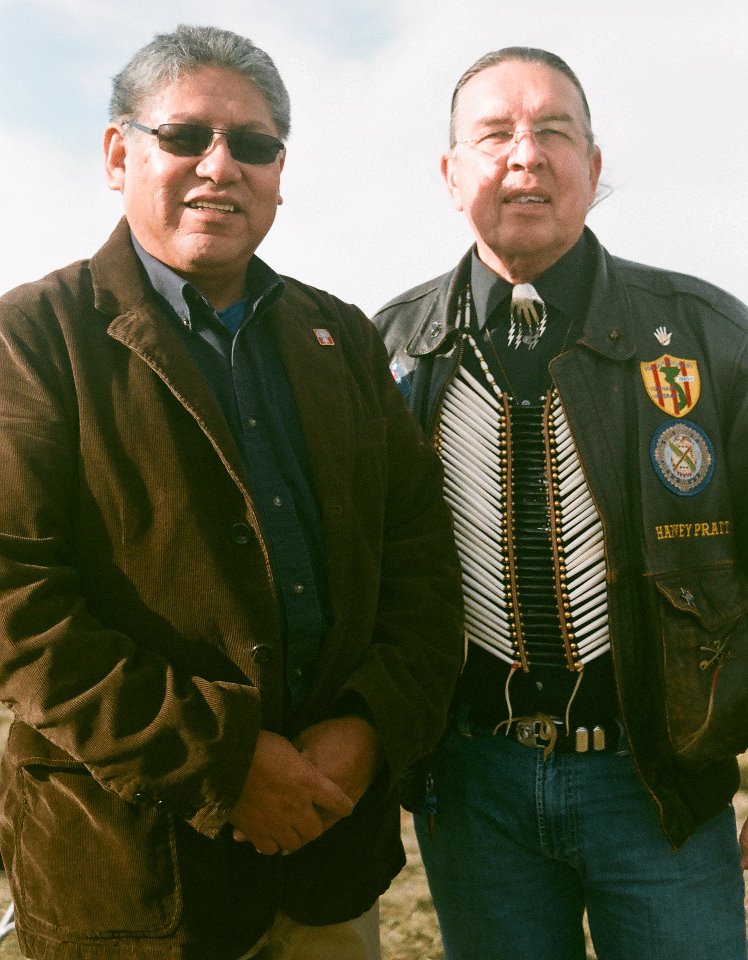
Chief Yellowman (left) and Southern Cheyenne Peace Chief Harvey Pratt near the battlefield overlook during the first day of the Washita Battlefield NHS 2011 Symposium on November 11. On this day Gordon blessed the sacred ground and Harvey spoke about what it was like to be a Cheyenne warrior in the 1860s and to fight on foreign battlefields in modern times. (photo © Louis Kraft 2011)
The Battle of the Washita is in the scope of the Sand Creek as the manuscript concludes at the end of the 1860s.
There will also be a new portrait of Black Kettle. A good friend of mine is Jeroen Vogtschmidt, an artist and historian who lives in the Netherlands. He specializes in American Indians. He does a lot of portraits of especially the Plains tribes, and he has written books that also deal with them. Unfortunately they are in Dutch, although he told me that he is trying to get one of his books translated into English. Earlier this year he asked some of his friends which Indian portrait they would like to see him paint next. Motor-mouth Kraft jumped at this: “Black Kettle!” Jeroen liked the idea and completed the portrait. I liked his art, especially BK’s eyes which are focused on someone who is slightly to his left. Not shy I pitched him on allowing me to use the image in Sand Creek and the Tragic End of a Lifeway. Jeroen immediately agreed. Unfortunately I don’t have any photos of Jeroen, and I need to rectify this.
Those of you that have read my Sand Creek blogs know that I like a painting that Southern Cheyenne Peace Chief Gordon Yellowman painted years back (a framed print is displayed in one of the rooms in Tujunga House). When the manuscript nears production I plan on sharing it along with other paintings for the book cover (to date only Chief Yellowman’s art on the list, and honestly I don’t think that this is going to change) with Chuck Rankin and current OU Press Editor-in-Chief Adam Kane to hear their thoughts on the painting.
A perfect storm
I saw my neurologist near the end of July 2017. As the CAT Scan had been negative at the Providence Tarzana Medical Center on 5jul2017 and a Brain MRI and X-rays of my lungs had been negative in May, he remained concerned and ordered a Brain EEG. After the EEG test on August 8 (in the medical building across the drive from the medical center) the technician told me that my brain looked fine. He then called me to his monitoring device and showed me that my heart rate was low. It ranged between mostly 35 and 36, and at times it dropped as low 30 while never reaching 40.
For the record, this was the first time I was aware that I might have a heart problem.
Knowing that my neurologist wouldn’t see the results for two or three days I took the elevator up to my cardiologist’s office and told him the Brain EEG results. His nurse did an EKG (my heart rate was 39), and then attached a device on me that would record my heart rate for the next 24 hours. The next day when I returned it I was told to call the following morning for the results.
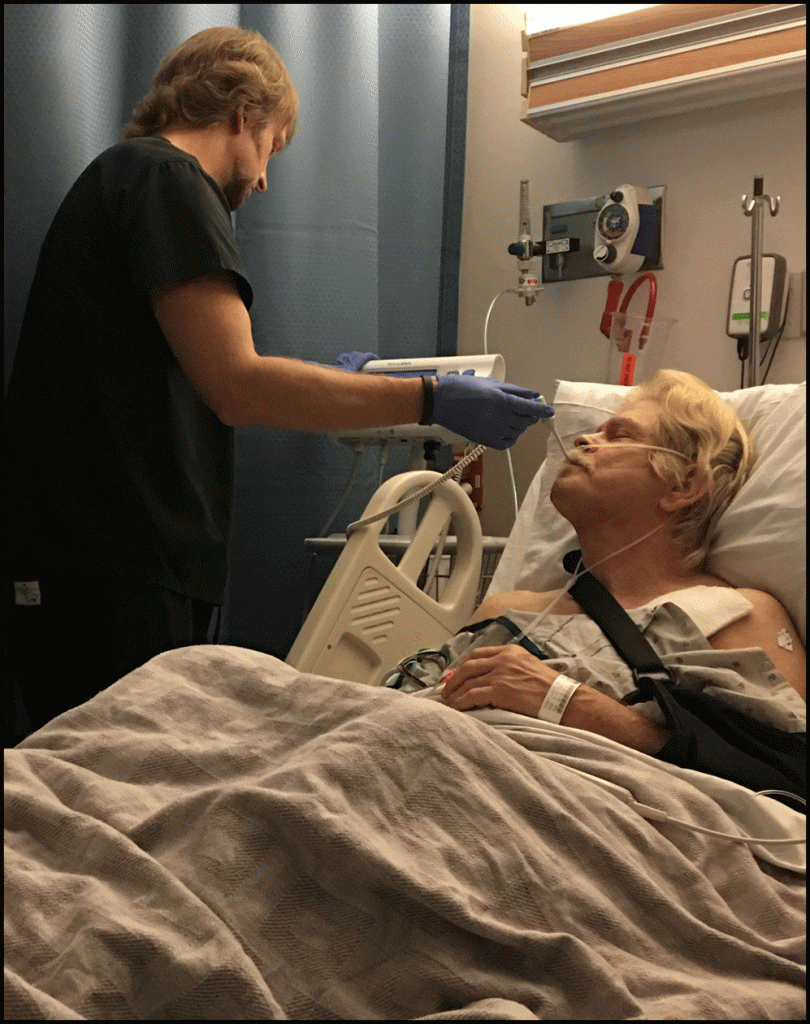
After the surgery, and until just before I was released, my vitals were watched closely. (photo by Pailin Subanna-Kraft and © Pailin Subanna-Kraft & Louis Kraft 2017)
The next four images
precede the flow of text but
do not ruin the telling of what
has recently impacted my life.
I had heart problems, but my cardiologist was totally in the dark.
About 11:30 AM on August 10 I called for the test results, but there were none yet. I called back at 11:55 AM. “You have severe heart blockage, and need to get to the ER immediately,” my cardiologist said. “Do not drive.” He also told me the name of my surgeon. My surgeon?
Why didn’t he call me as soon as he had the results?
As Pailin was en route to West LA, I called my daughter and ex-wife. They didn’t answer but returned my phone call within minutes. They arrived at Tujunga House at one and drove me to Providence Tarzana Medical Center ER. … In the ER my heart rate remained low while my blood pressure shot off the charts (for me) hovering around 240 and sometimes reaching 250 or more. After about two hours of the ER doctor studying my medical records and speaking to at least one of my specialists I was admitted to the hospital.
About 4:30 I met Dr. Dave Kim, who would be my heart surgeon. He showed me the printout of the 24-hour heart study. … My heart rate was skipping three and four and five heart beats at a time, and these were not isolated instances. The hospital had been monitoring my heart rate and blood pressure since my admittance, and I’m certain that the gap between these two readings increased considerably.
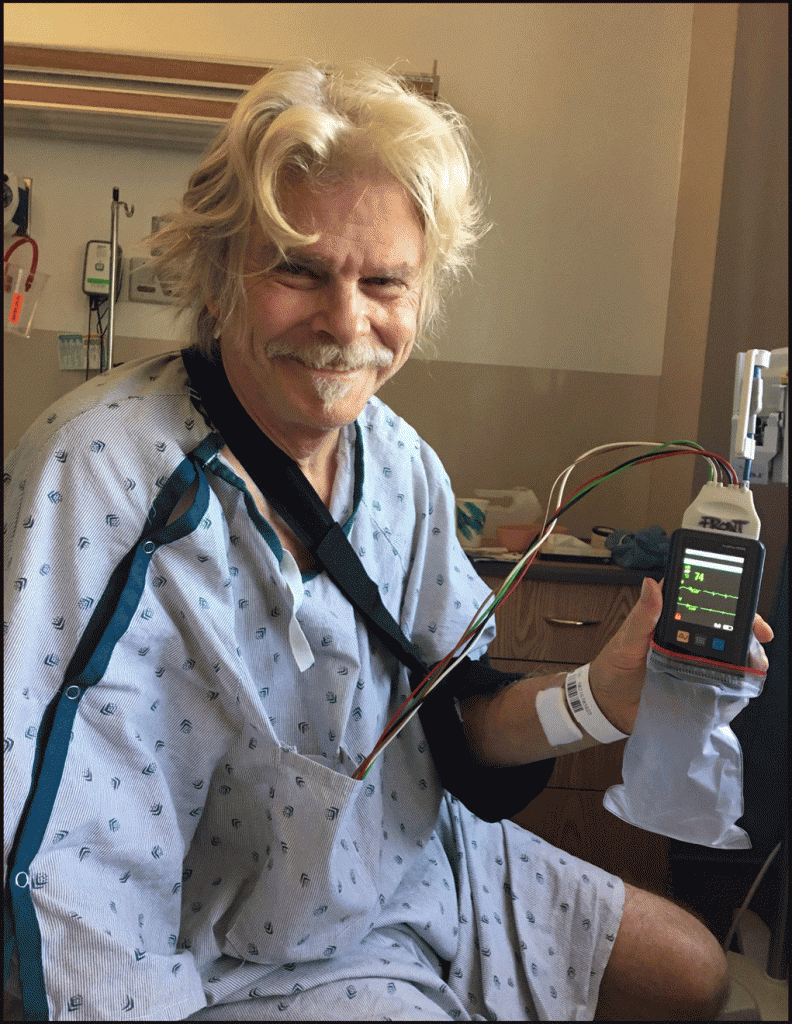
Pailin took this image of me holding the device that captures and displays my heart rate in realtime early on the morning of 12aug2017. At that moment it was 74. (photo © Pailin Subanna-Kraft & Louis Kraft 2017)
Through all of my surgeries I had been calm and collected except for two cancer surgeries, and they frightened me. The calmness has mainly been because I have always had full trust in my surgeons and surgical crews. I’m forever curious with everything that happens as events move quickly toward the anesthesia entering me. Knowing that when everything is over I’ll wake up, … or perhaps not. Surprisingly this is soothing to me.
If not, I’ll never know what happened. Trust me for I am aware of potential disaster as Dr. Robin Cook’s medical thrillers scare the hell of me (am currently reading Charlatans, which was just published). Still he is my favorite novelist. … We can now add a third surgery to my nervous list as I had entered the unknown world of the heart—my heart.
Pailin, who visited me at ten the previous night was back at seven on the morning of the eleventh. She had taken the day off. Her company was a godsend. As the day dragged by with uncertainty, my heart rate remained low, and the thought of my heart continuing to miss three and four beats at a time kept my blood pressure out of sight. … The unbearable sluggishness continued. I was supposed to be in surgery at four, but an hour passed without a peep out of anyone. I rang for the day nurse and asked for an update. She left but returned shortly and told me that the surgeries before mine proceeded slower than anticipated.
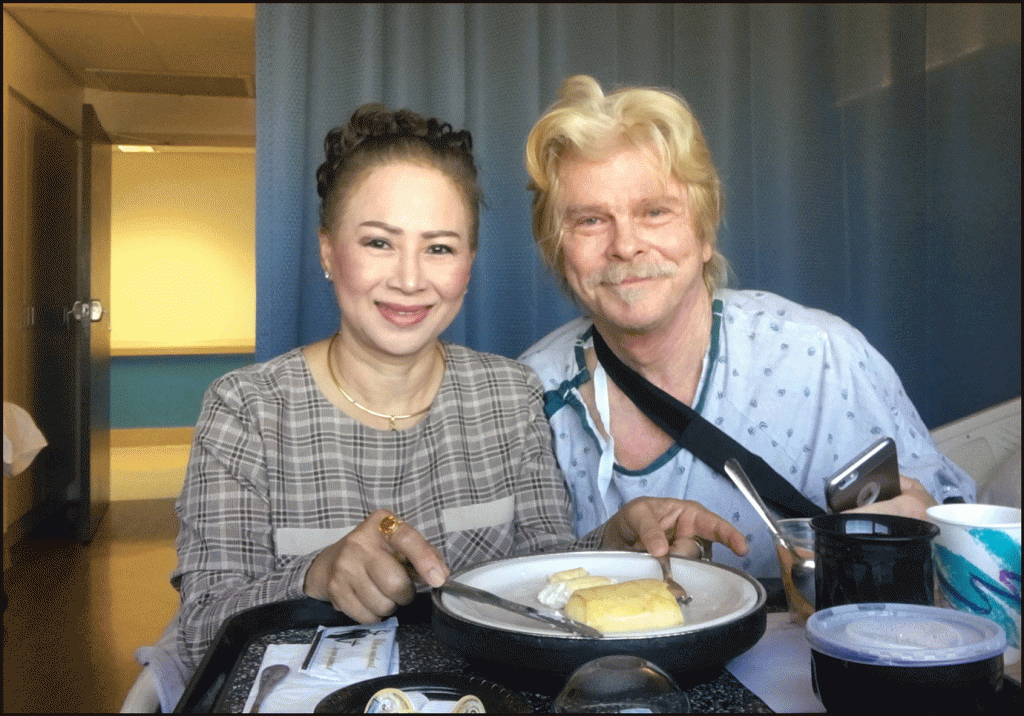
Breakfast with my lady on the morning of 12aug2017. (photo by Pailin Subanna-Kraft and © Pailin Subanna-Kraft & Louis Kraft 2017)

Long story short I was wheeled to surgery a little after six and my procedure began around six-thirty but moved slowly as my blood pressure remained high (I was not told what my heart rate was while under the knife). A bi-ventricular pacemaker was attached to my heart.
I had never seen what a pacemaker looked like until Pailin brought me home on August 12. Not a pretty sight but a thousand times better than the alternative. Pailin took this image of the pacemaker and scar above it as sunlight blasted through a bay window early on 27aug2017. (photo © Pailin Subanna-Kraft & Louis Kraft 2017)
Like the previous night I barely slept as the night nurse kept on top of my vitals. Again, a device that read my heart was attached to me (the same one as the previous two days) and it was plugged in as soon as my bed/gurney was back in place. The intravenous line was again attached and I was again put on air. My blood pressure remained high until four-thirty on the morning of the twelfth, and from that point on it slowly returned to normal. The monitoring continued all day, but I was finally released at four-thirty. Like the day of surgery—and it was a terribly long day for Pailin—she was back with me at seven on Saturday morning. On this day, which she again didn’t work, she informed her various managers that she would be taking the next six days off.
Free at last, and with hopefully a new outlook on life. Although I didn’t realize I was in big trouble until August 10, I am absolutely thrilled that a perfect storm set me in motion to get the pacemaker before something terrifying happened. I’m one lucky fellow.
The future?
Mine is now.
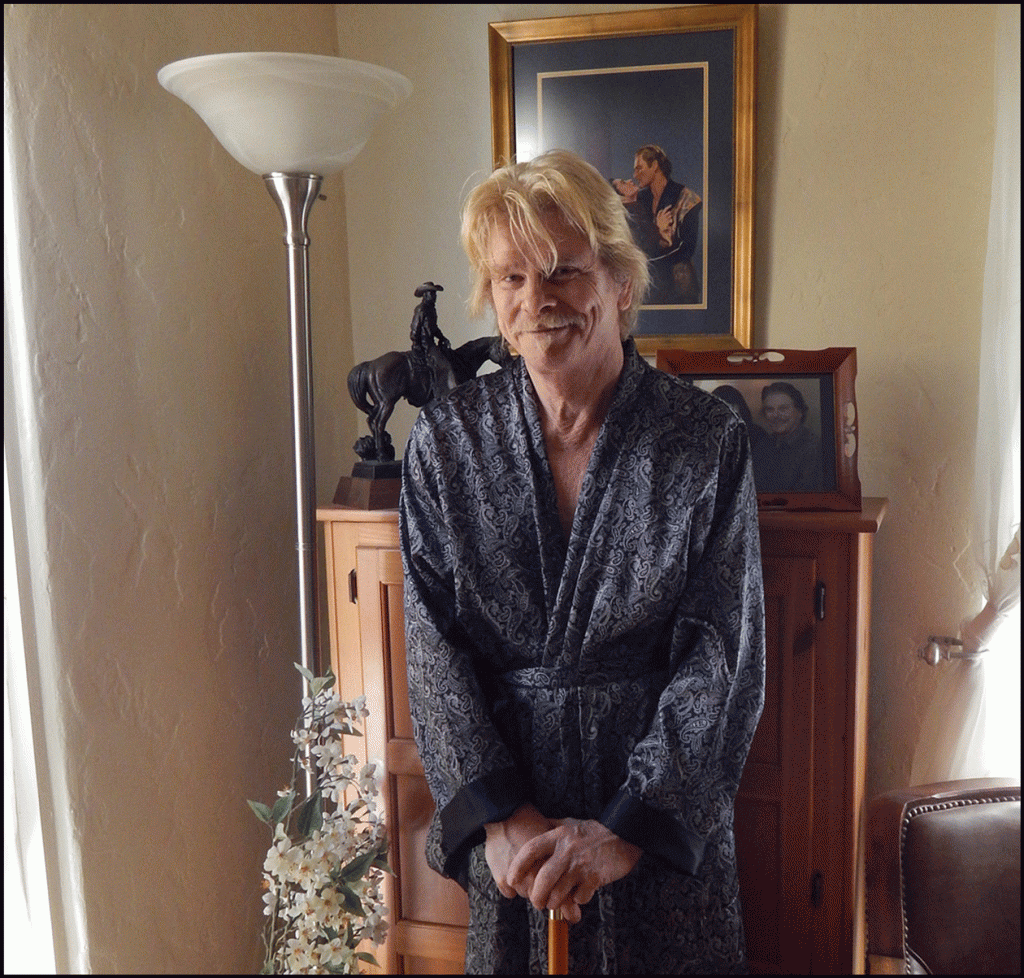
LK on the morning of 27aug2017. I’m getting a little stir crazy, and there’s weeks more of this, but I can’t begin to tell you how happy I am. (photo by Pailin Subanna-Kraft and © Pailin Subanna-Kraft & Louis Kraft 2017)
I had met with my heart surgeon (Dr. Dave Kim) on 18aug2017 and had a lengthy description of what had happened between August 10 and 12, and what I had experienced since. The bi-ventricular pacemaker is currently set to 60, meaning that ideally it will trigger my heart to function whenever the heart rate drops below 60. However, I have atrial fibrillation, an irregular heart beat. As I had shared that I had some chest pain and slight lightheadedness, he told me to use Aspirin to thin my blood and that I would probably be put on a blood thinner. The mild chest pain continues off and on, at times my heart races*, and my breathing is heavy, but the lightheadedness is gone. The next two weeks will be key.
* My heart surgeon is mainly concerned about my lower heart chambers not having a regular rhythm and beating faster than they should, which could cause clot-related blood flow problems. Honestly, so am I.
Dr. Kim has become my heart specialist. On September 14 I’ll enroll in a heart monitoring clinic at his office. Once set up, the clinic will be able to monitor my heart 24/7 when I’m at home.
My neurologist (Peter-Brian Andersson), who I have a sparkling relationship with (medically, life interests, and personally), has kept up with what is going on with me via the phone (he has the surgeon and hospital records). I also see him in early September.
Will I live to see our future, our country’s future? My friends, the answer is yes!
On May 31 I told my pulmonary specialist that I planned to live to 130.
He chuckled and said that he did, too.


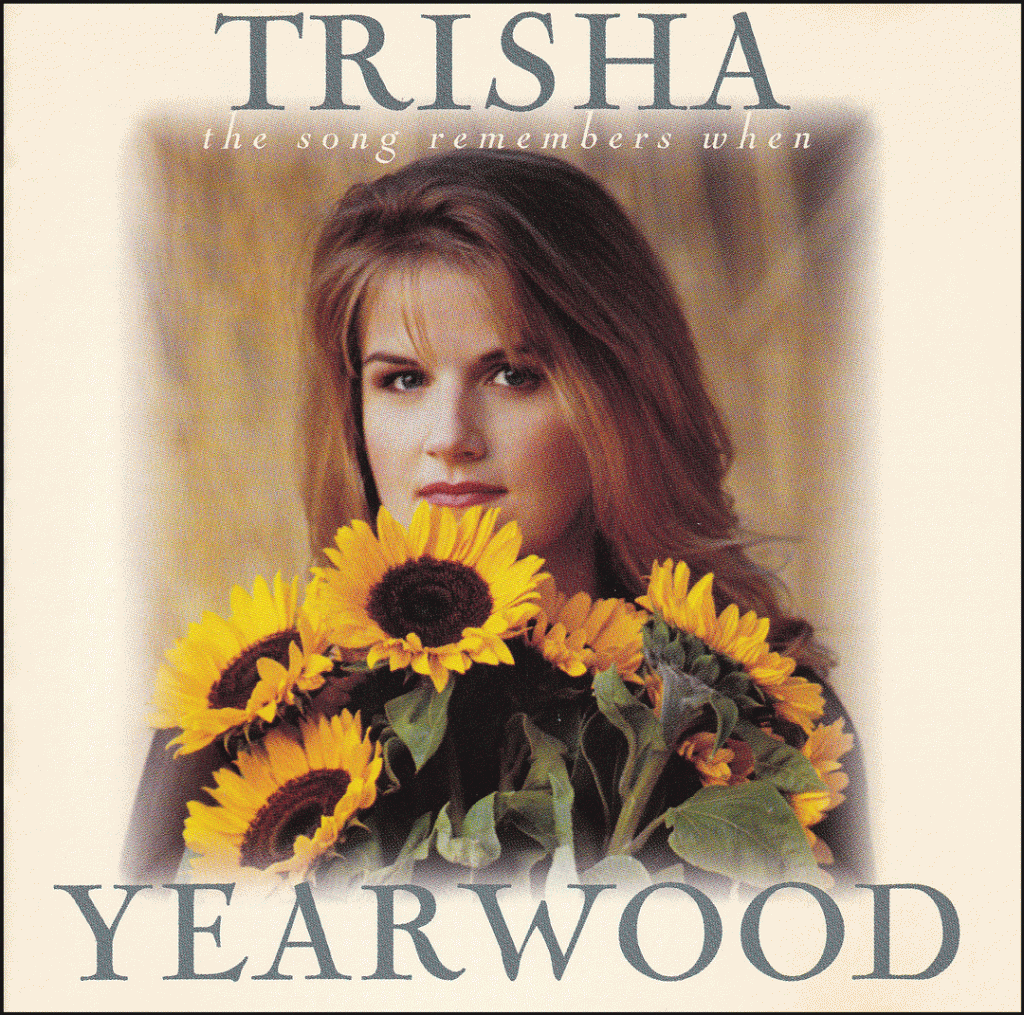 Yep, you guessed it: Her hit song, The Song Remembers When. It was released on an album that used it as its title in 1993. When I first heard the song on the radio, I said, “Yes! Yes, songs do remember when.”
Yep, you guessed it: Her hit song, The Song Remembers When. It was released on an album that used it as its title in 1993. When I first heard the song on the radio, I said, “Yes! Yes, songs do remember when.”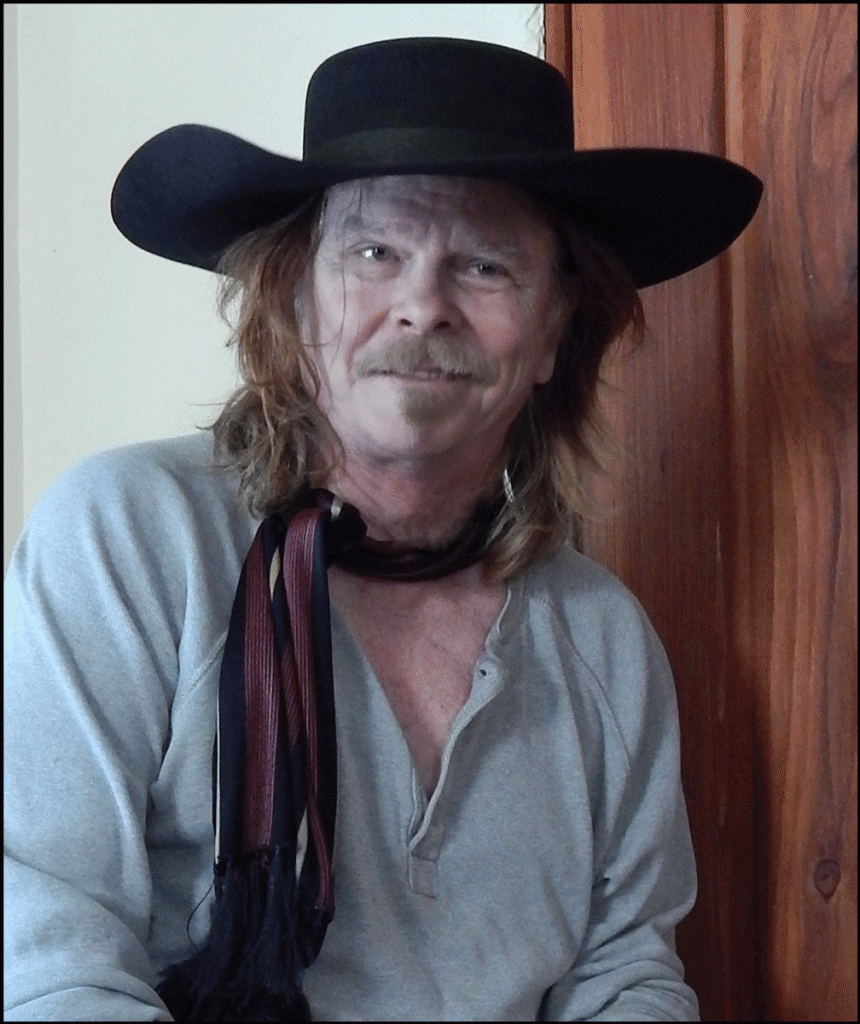
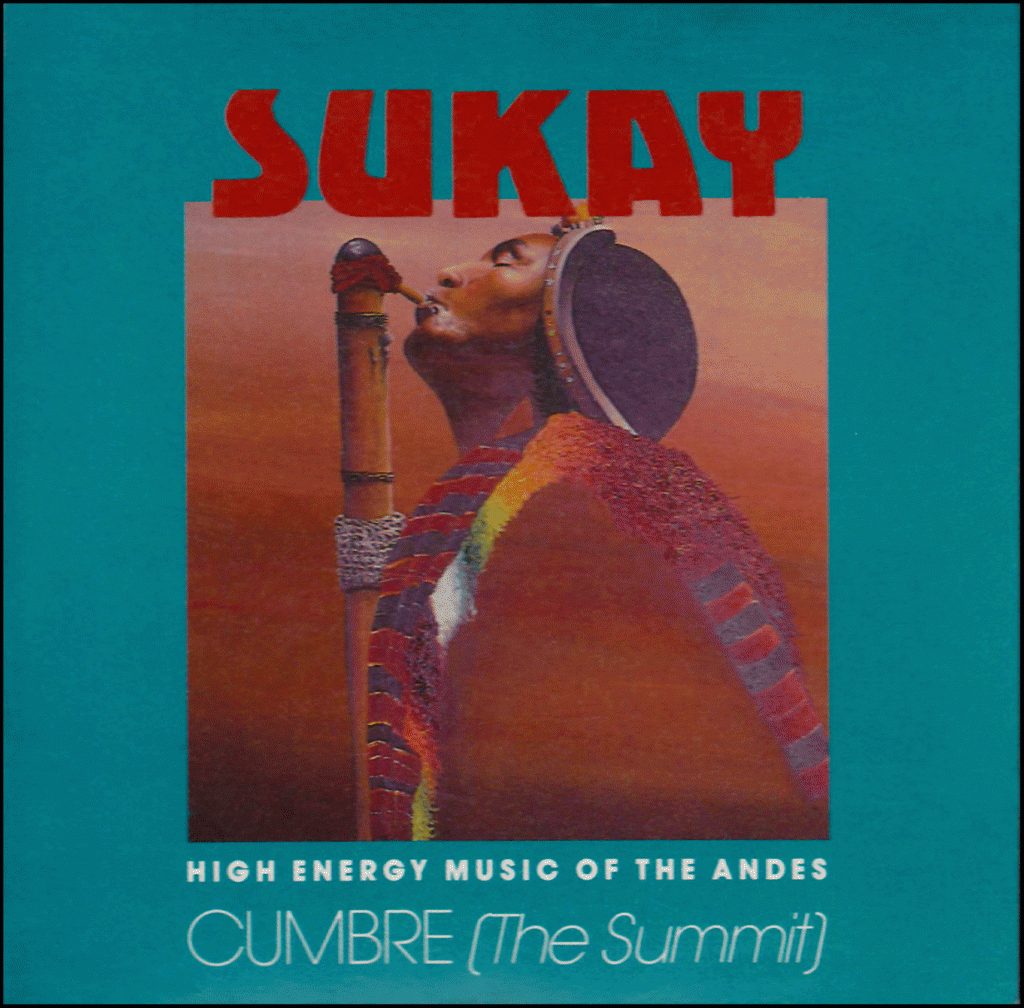 There are other types of music that I also like and often listen to while working. Sukay was a group that performed what they call Andean music using instruments native to the Andes Mountains (I have a fair selection of Andean music by them and others). I love Sukay as their sound—instrumental or instrumental and vocal—is the most alive music that I’ve ever heard. Alas, I never got to see them perform in the USA.
There are other types of music that I also like and often listen to while working. Sukay was a group that performed what they call Andean music using instruments native to the Andes Mountains (I have a fair selection of Andean music by them and others). I love Sukay as their sound—instrumental or instrumental and vocal—is the most alive music that I’ve ever heard. Alas, I never got to see them perform in the USA. It goes without saying that I cherish Native American flute music; my favorite is N. Carlos Nakai, and I have seen him perform in concert. When he performs traditional or original music or mixes traditional Native music with another culture, such as Japanese, I’m in heaven (but I’m not fond of his Jazz).
It goes without saying that I cherish Native American flute music; my favorite is N. Carlos Nakai, and I have seen him perform in concert. When he performs traditional or original music or mixes traditional Native music with another culture, such as Japanese, I’m in heaven (but I’m not fond of his Jazz).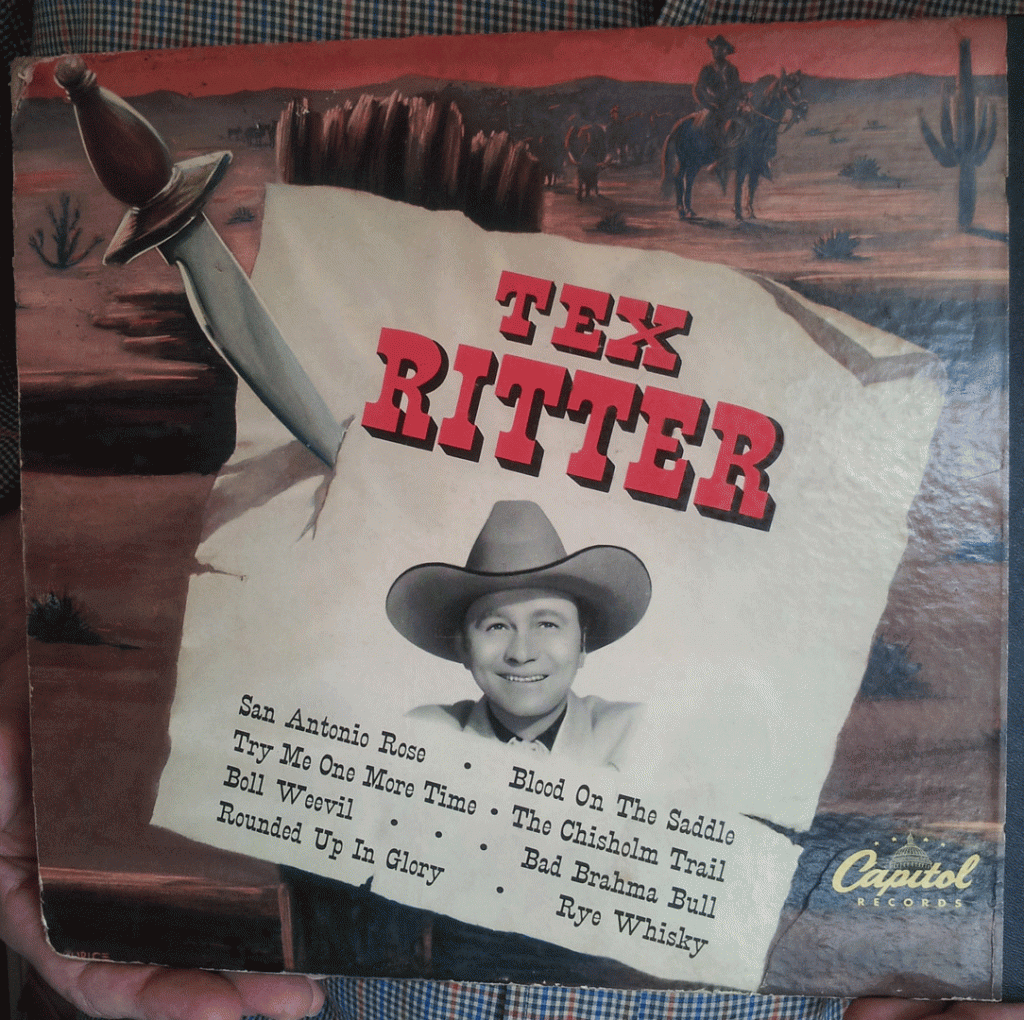
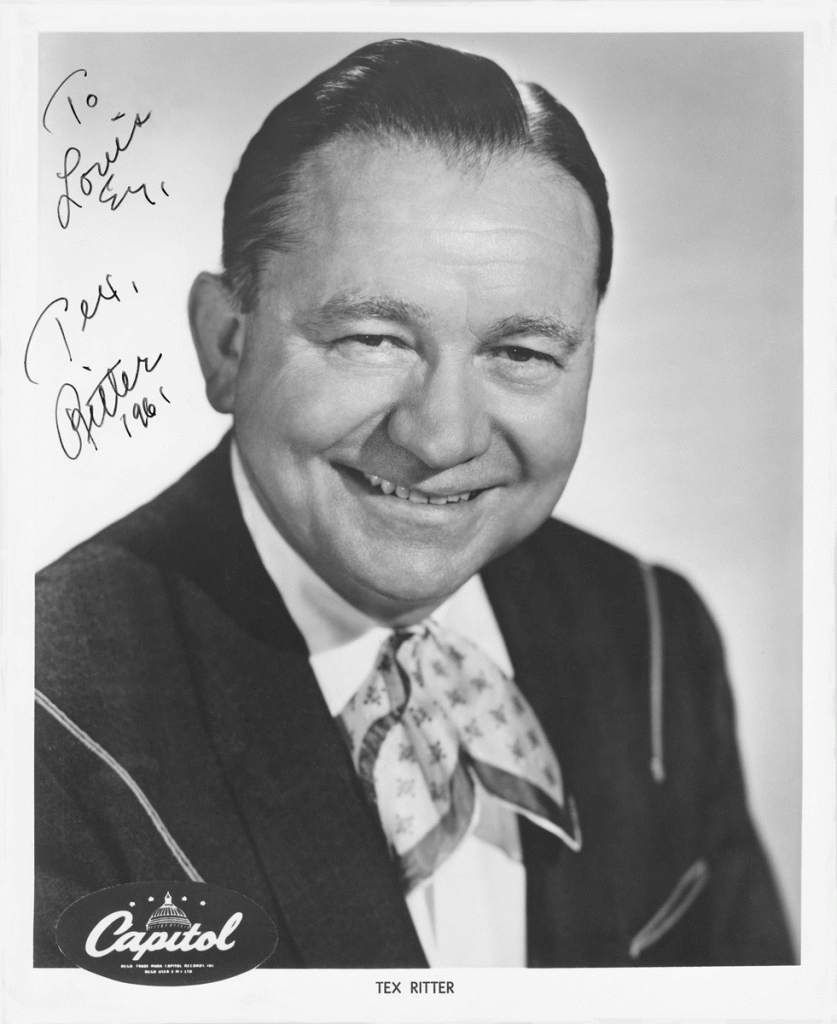
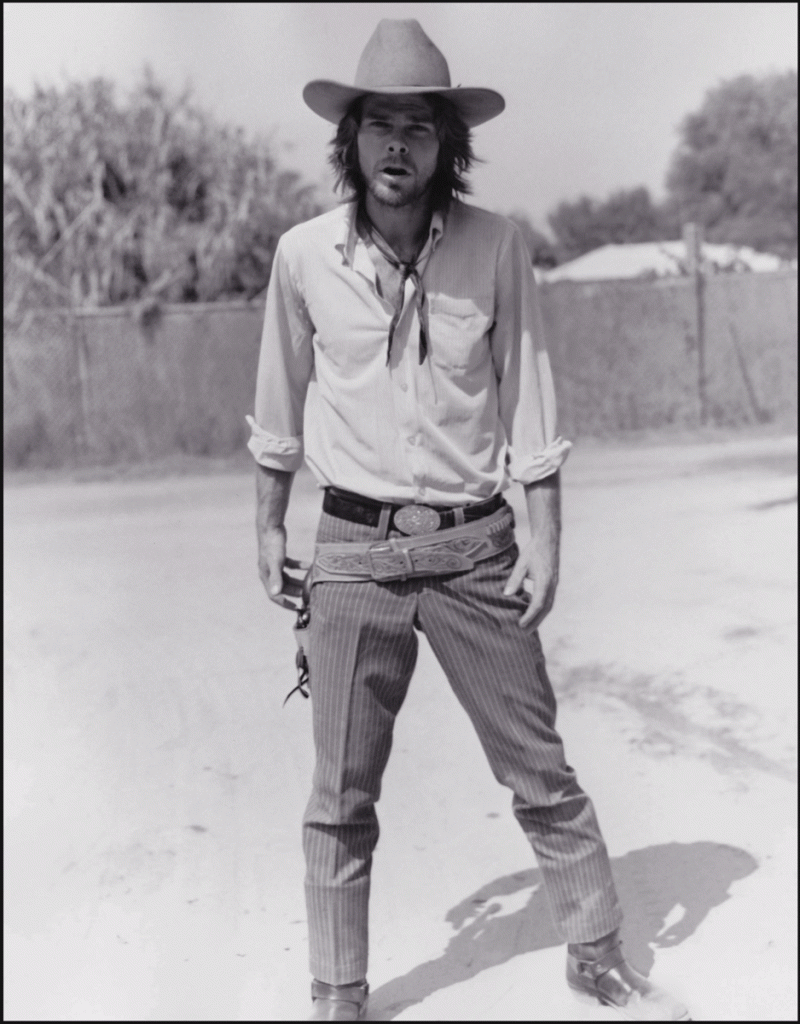
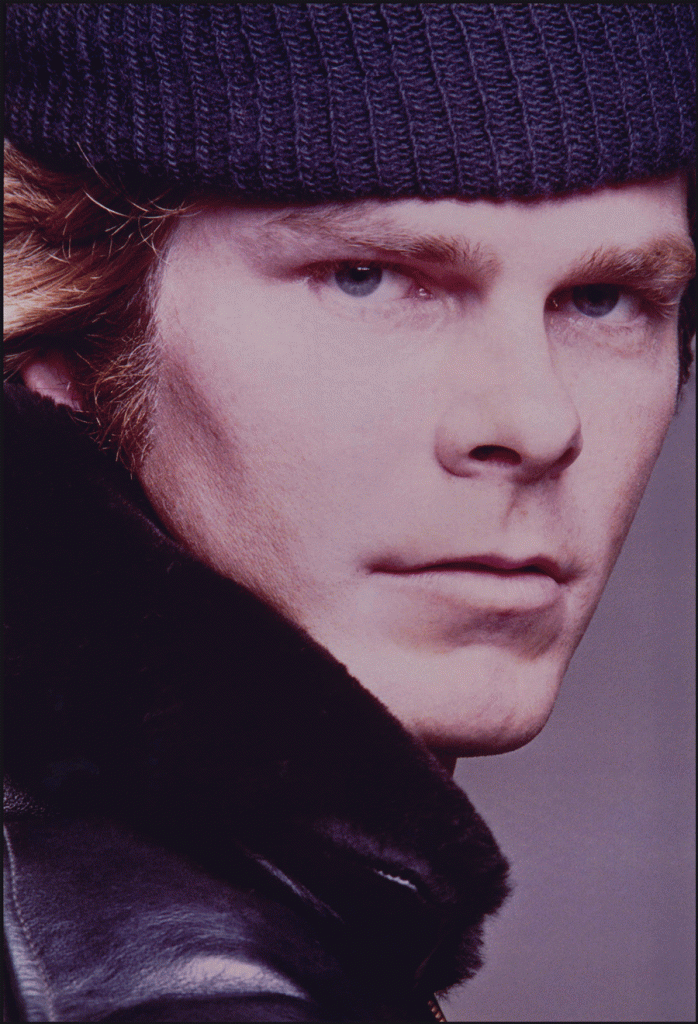
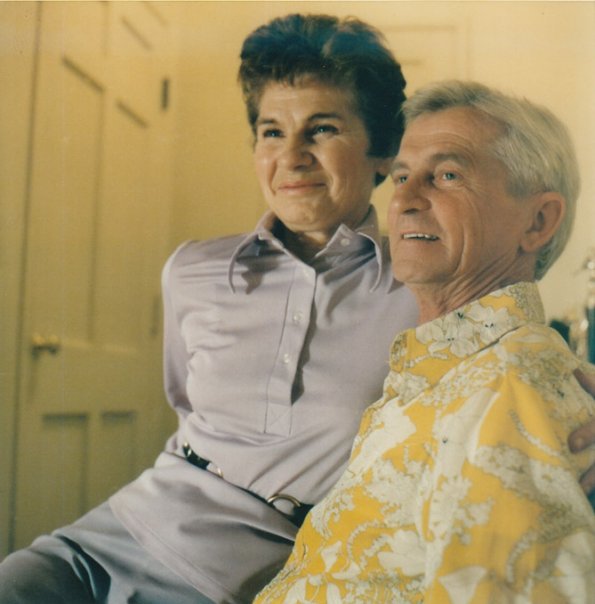
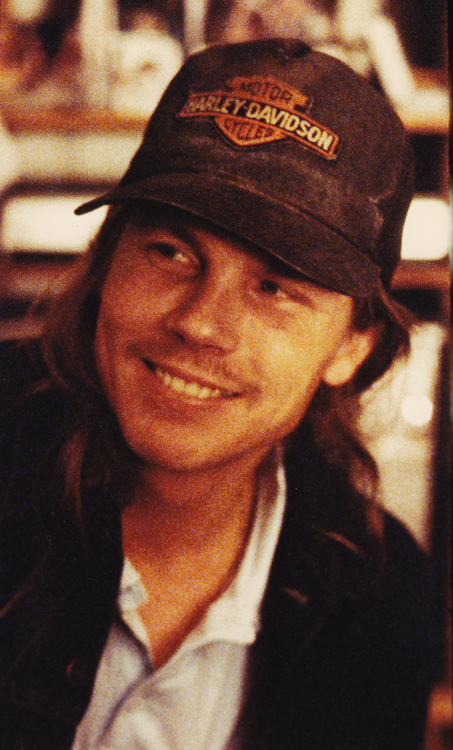
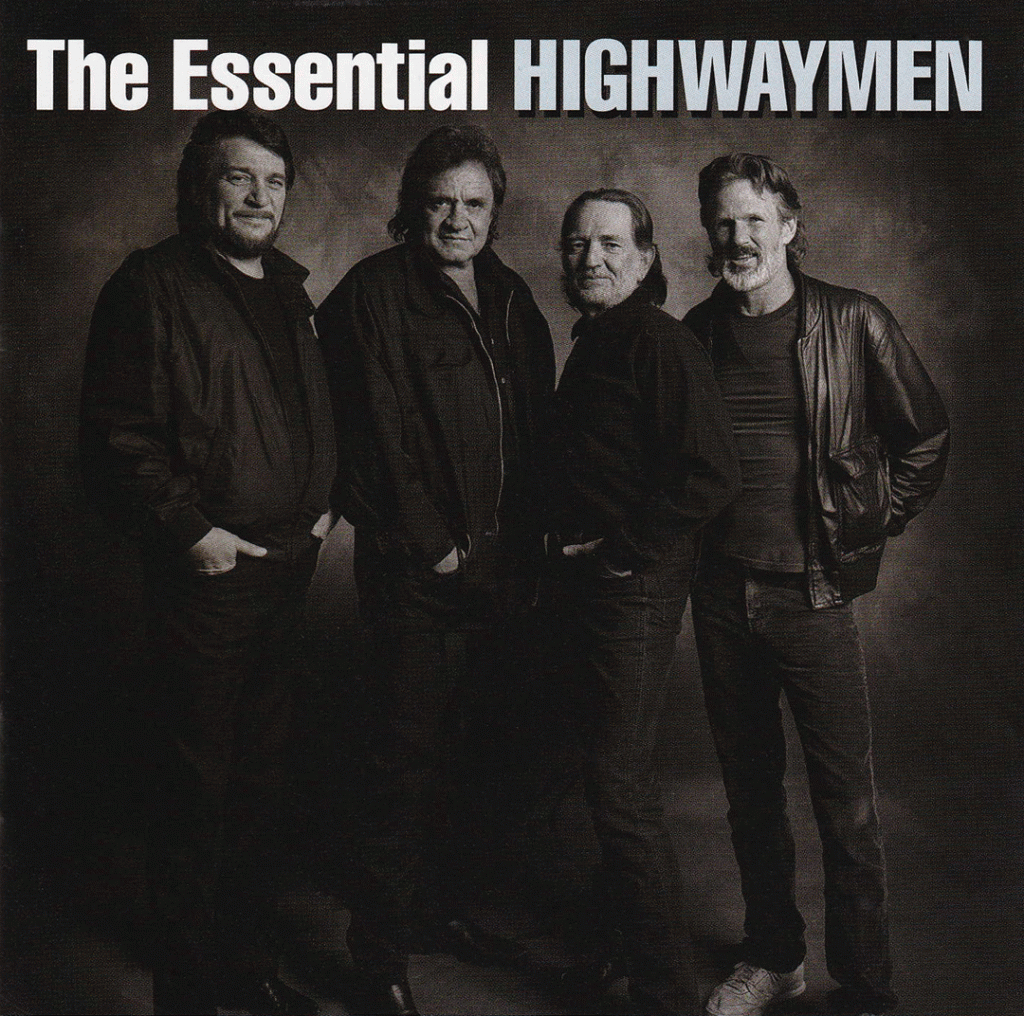
 Nine years later my father died on Valentine’s Day (14feb1999). I had been taking care of him for years. I was a wreck, but insisted upon talking at his service. My sister didn’t think that I was capable, but I told her that I was (that is, I had been delivering talks for years and it was work). She and my brother-in-law wanted to play Tex Ritter’s religious song, The Deck of Cards (although my sister had already retired as an investigator from the Los Angeles County District Attorney’s Office while in her forties, she had previously stolen an album of mine with this recording; she eventually returned it to me). I said: “Absolutely not!” This shocked her. “Why?” “He hated the song, and so do I.” “So what do you want?” she asked sarcastically. “I want Sarah McLachlan’s Angel.” I played the song for her and she was good with the choice.
Nine years later my father died on Valentine’s Day (14feb1999). I had been taking care of him for years. I was a wreck, but insisted upon talking at his service. My sister didn’t think that I was capable, but I told her that I was (that is, I had been delivering talks for years and it was work). She and my brother-in-law wanted to play Tex Ritter’s religious song, The Deck of Cards (although my sister had already retired as an investigator from the Los Angeles County District Attorney’s Office while in her forties, she had previously stolen an album of mine with this recording; she eventually returned it to me). I said: “Absolutely not!” This shocked her. “Why?” “He hated the song, and so do I.” “So what do you want?” she asked sarcastically. “I want Sarah McLachlan’s Angel.” I played the song for her and she was good with the choice. At this time Linda had been studying the ministry, which she hoped to go into, long distance. She lived in Lake Arrowhead, California, but only had to attend classes in person in the Santa Clarita Valley, north of the San Fernando Valley, for one or two weeks each year. During these times she stayed at Tujunga House. A year plus had passed since our father’s death. On one of the nights during the every-other weeks that my daughter spent with me the three of us made ourselves comfortable on the living room floor. I played another song for her, a song that also could have worked for our father’s service—Reba McEntire’s The Greatest Man I Never Knew (written by Richard Leigh and Laying Martine, Jr.) with lyrics, “I never really knew him. … The man I thought could never die has been dead almost a year. … He never said he loved me; I guess he thought I knew.” I’m not sure how my sister reacted as her face was passive and she didn’t say anything. Hell, she wasn’t close to our mother, brother, father … or me. This is something that I deal with daily for I loved her and must find a peace between us.
At this time Linda had been studying the ministry, which she hoped to go into, long distance. She lived in Lake Arrowhead, California, but only had to attend classes in person in the Santa Clarita Valley, north of the San Fernando Valley, for one or two weeks each year. During these times she stayed at Tujunga House. A year plus had passed since our father’s death. On one of the nights during the every-other weeks that my daughter spent with me the three of us made ourselves comfortable on the living room floor. I played another song for her, a song that also could have worked for our father’s service—Reba McEntire’s The Greatest Man I Never Knew (written by Richard Leigh and Laying Martine, Jr.) with lyrics, “I never really knew him. … The man I thought could never die has been dead almost a year. … He never said he loved me; I guess he thought I knew.” I’m not sure how my sister reacted as her face was passive and she didn’t say anything. Hell, she wasn’t close to our mother, brother, father … or me. This is something that I deal with daily for I loved her and must find a peace between us.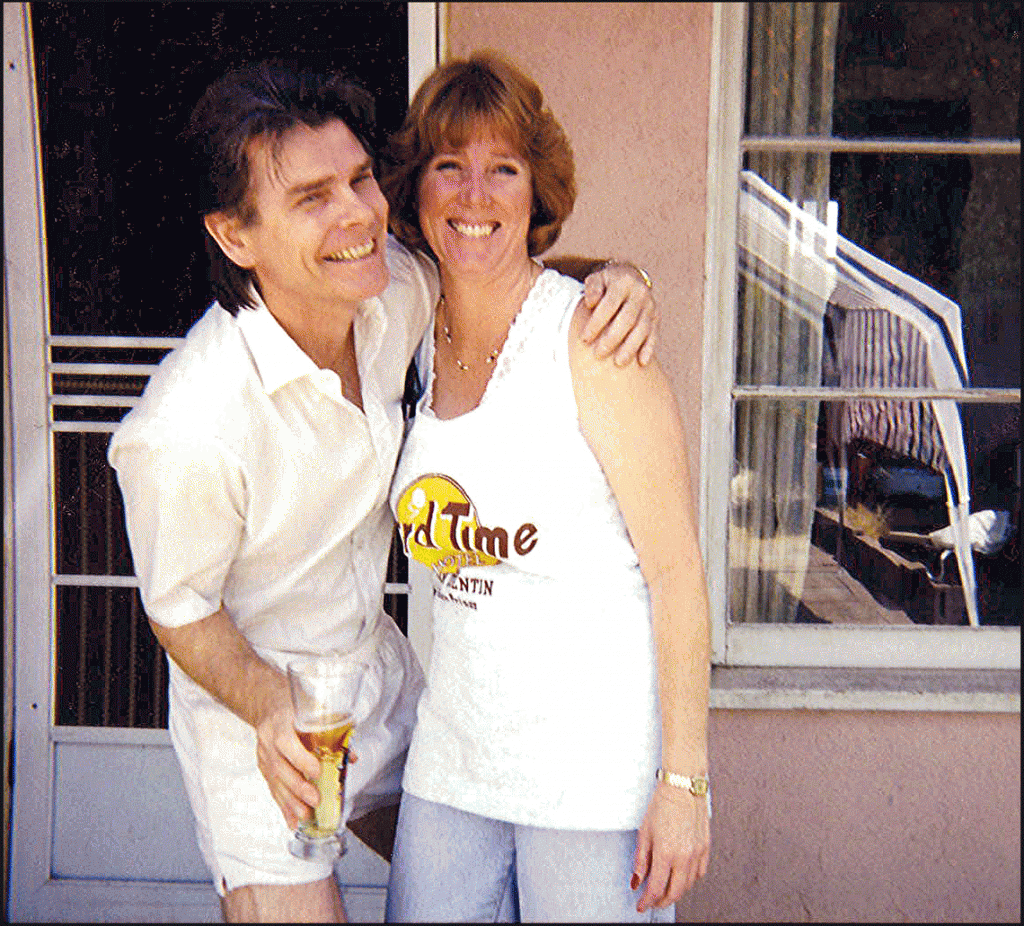

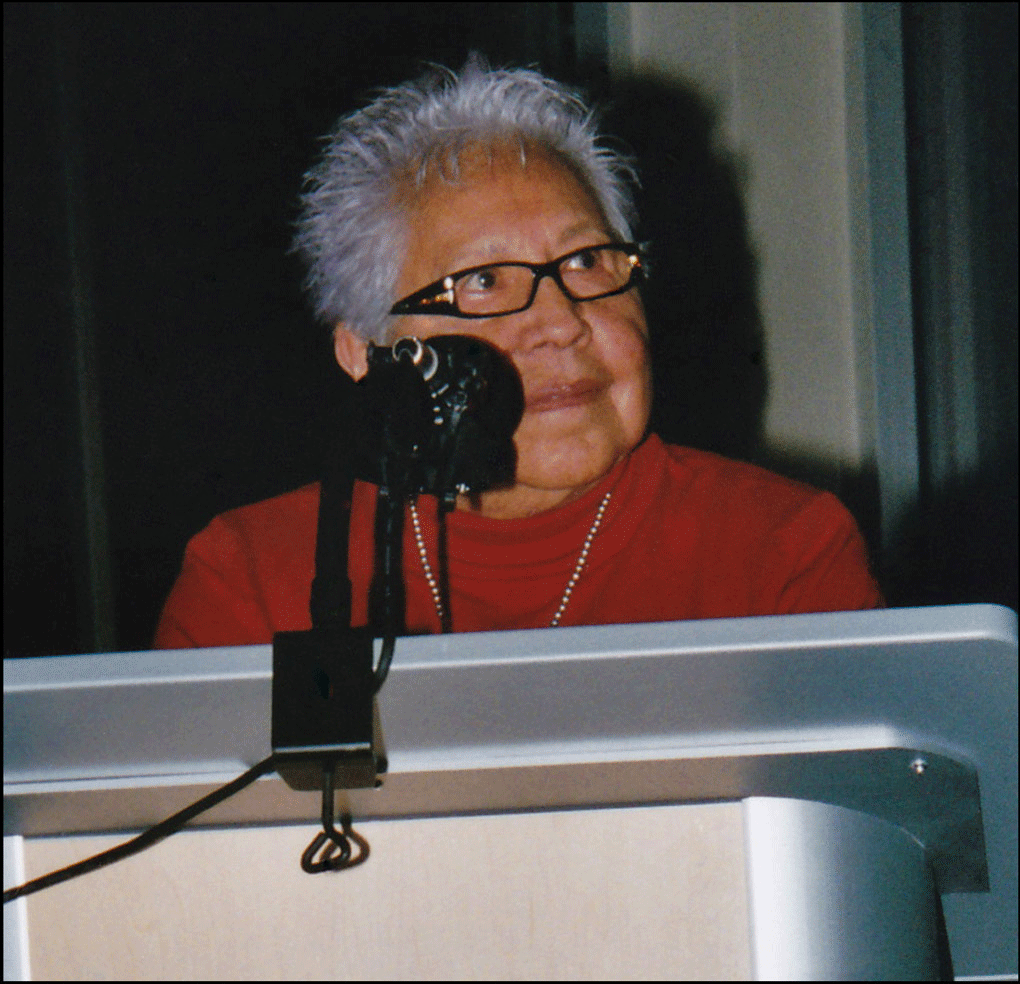
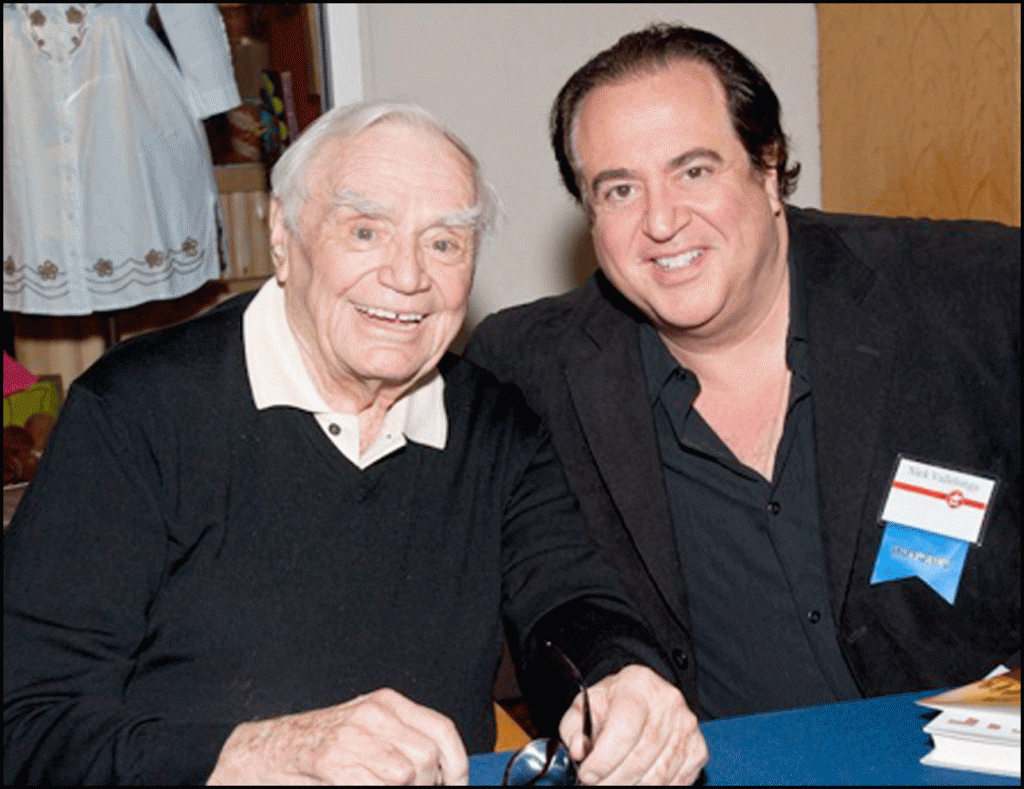
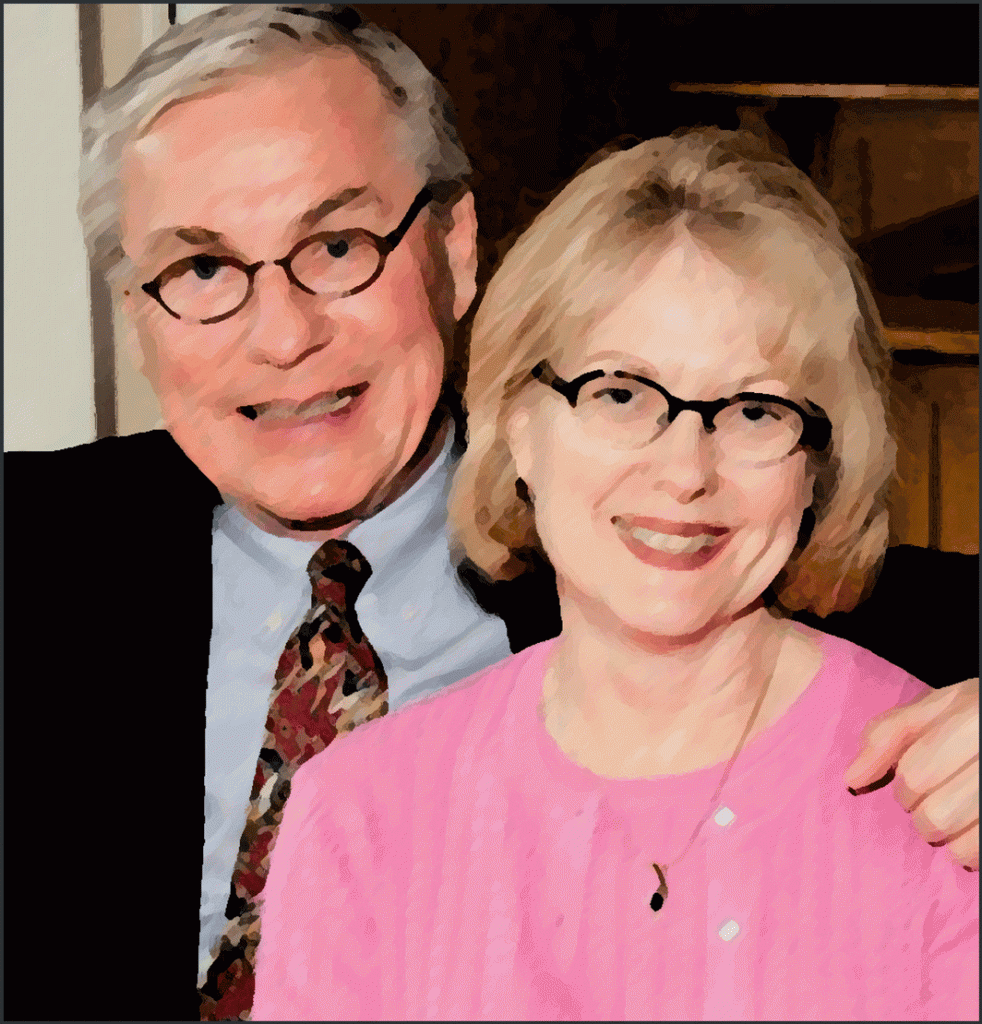
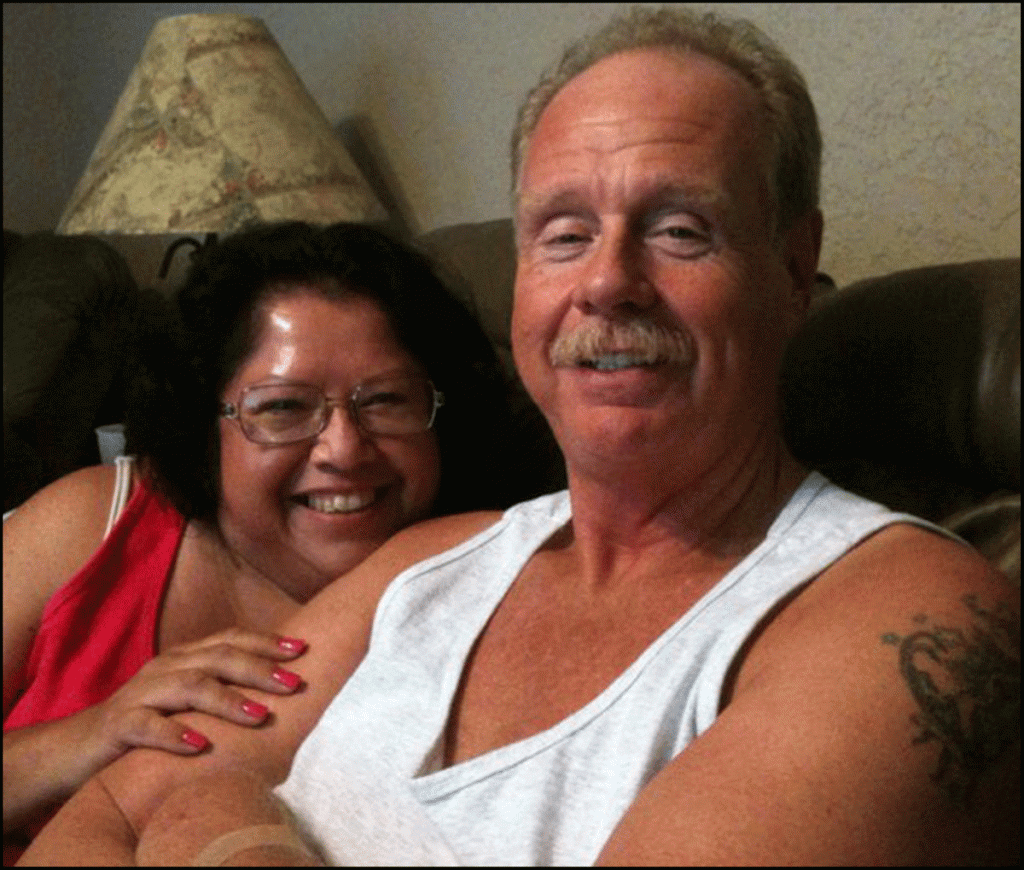
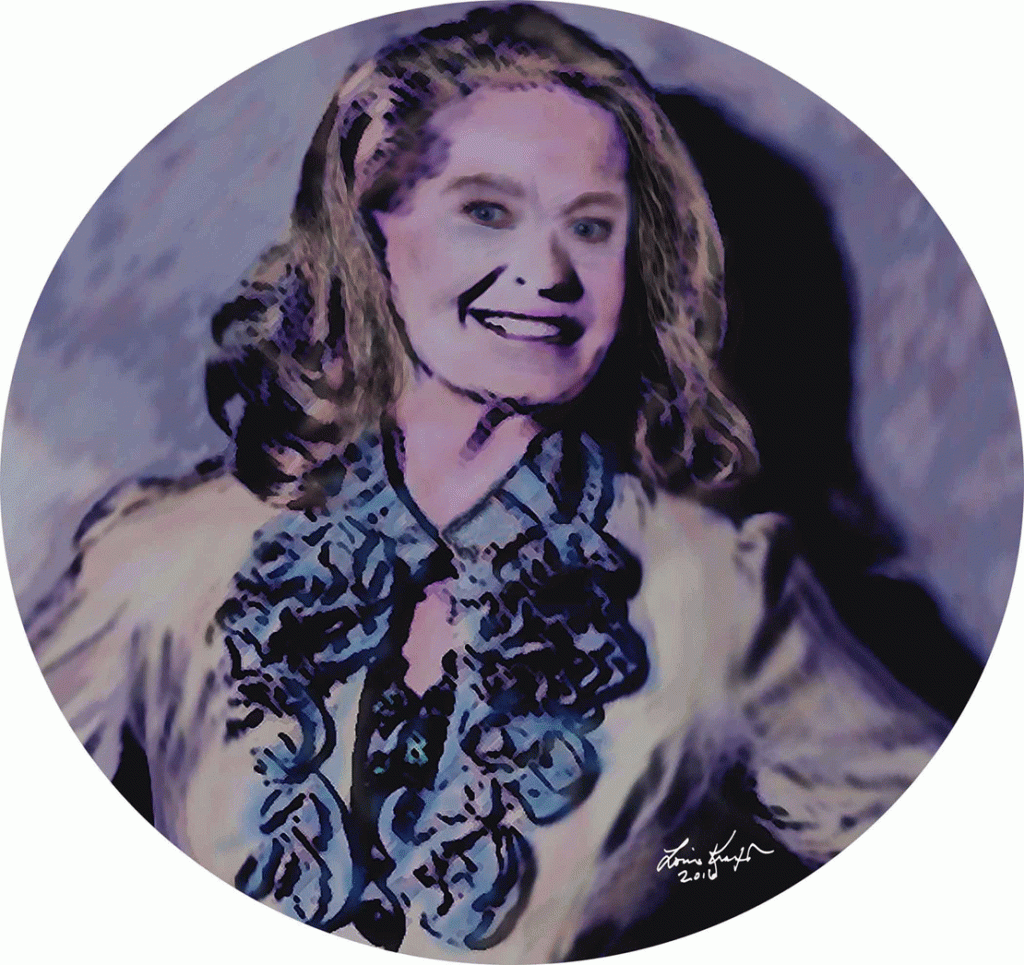 The award winners, presenters, and their guests were transported the mansion in mini vans for the private party somewhere in Oklahoma City. Debbie and Dean arrived, and she was knock-out gorgeous. The petite blonde lady that I had seen earlier in the day was with them, and she was beautiful. After Debbie and I hugged, she introduced me to the person who I didn’t know but said hello to every time I passed her in the hallway. She had a wonderful smile, and I wanted to know her. That night at the mansion party my fantasy became reality.
The award winners, presenters, and their guests were transported the mansion in mini vans for the private party somewhere in Oklahoma City. Debbie and Dean arrived, and she was knock-out gorgeous. The petite blonde lady that I had seen earlier in the day was with them, and she was beautiful. After Debbie and I hugged, she introduced me to the person who I didn’t know but said hello to every time I passed her in the hallway. She had a wonderful smile, and I wanted to know her. That night at the mansion party my fantasy became reality.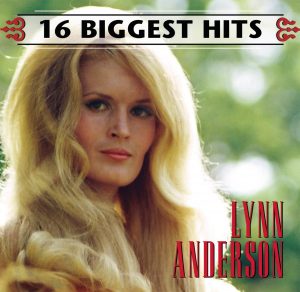
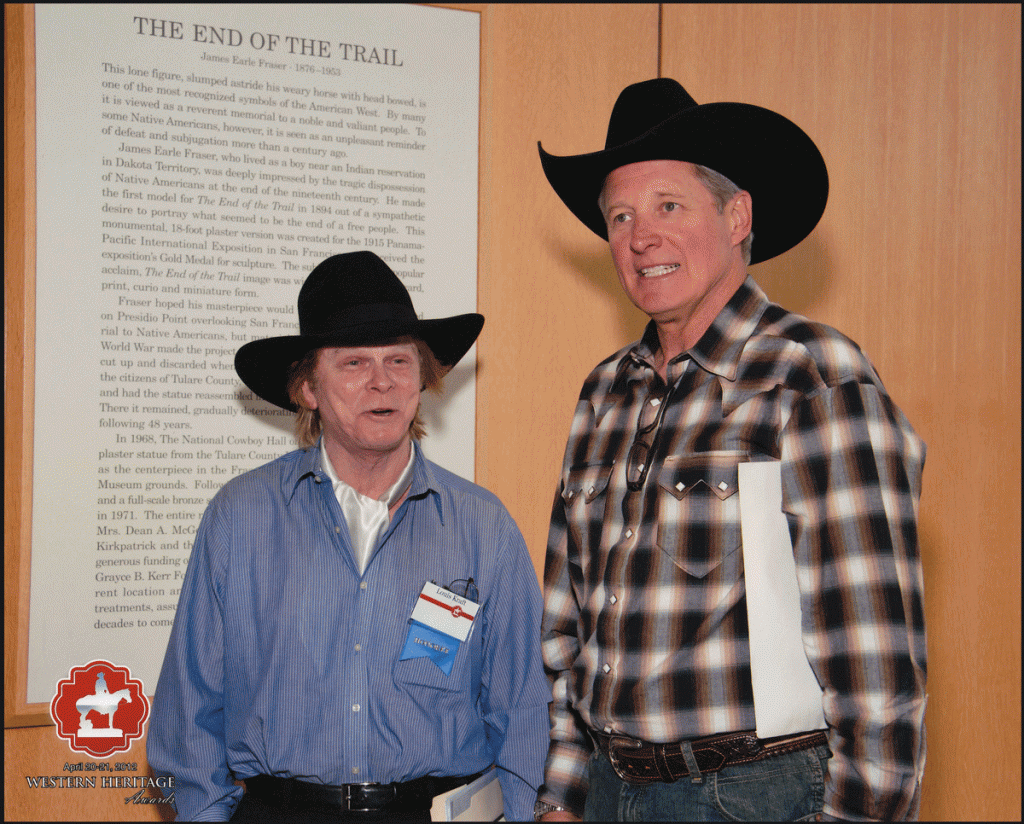
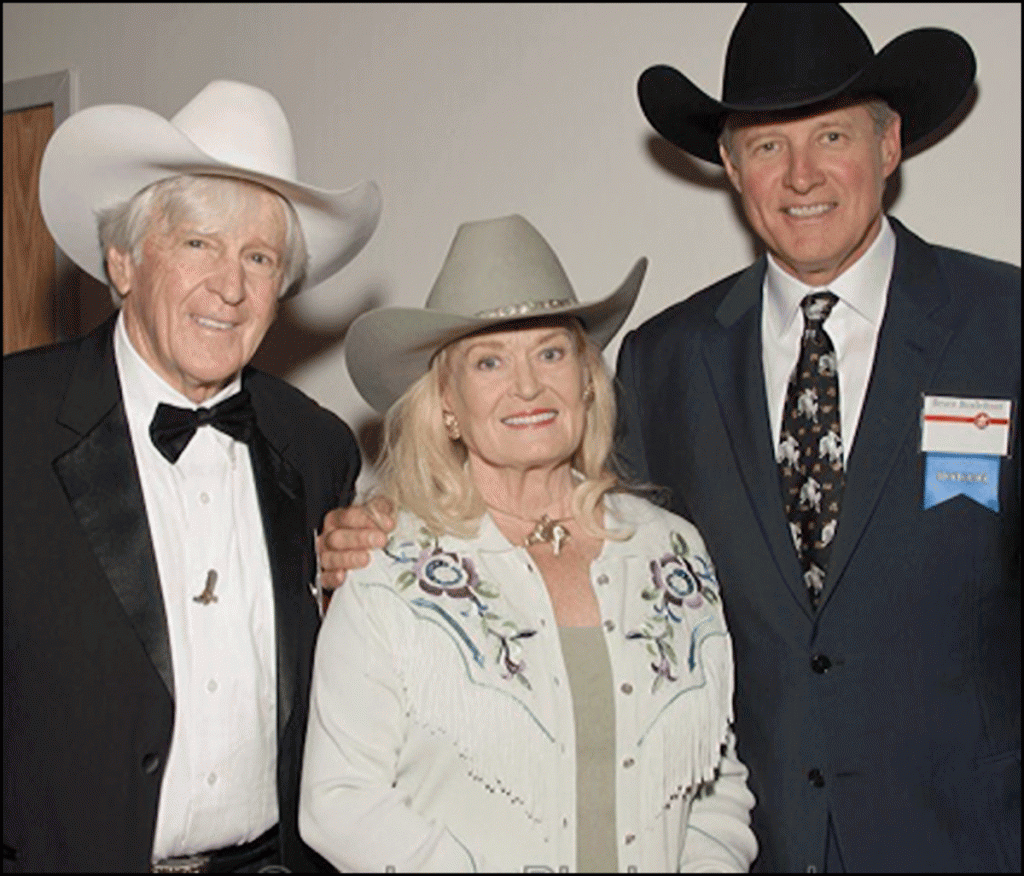
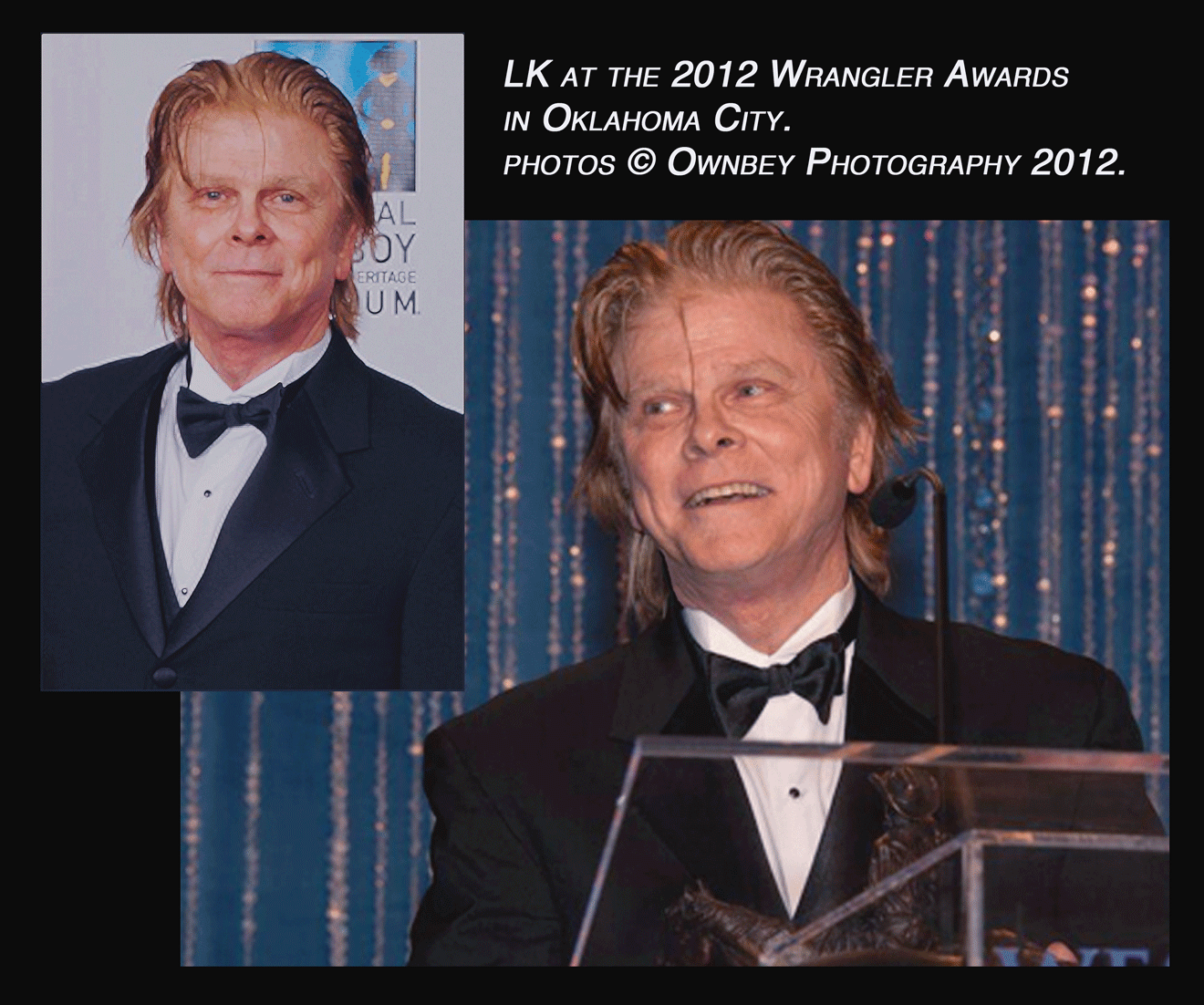

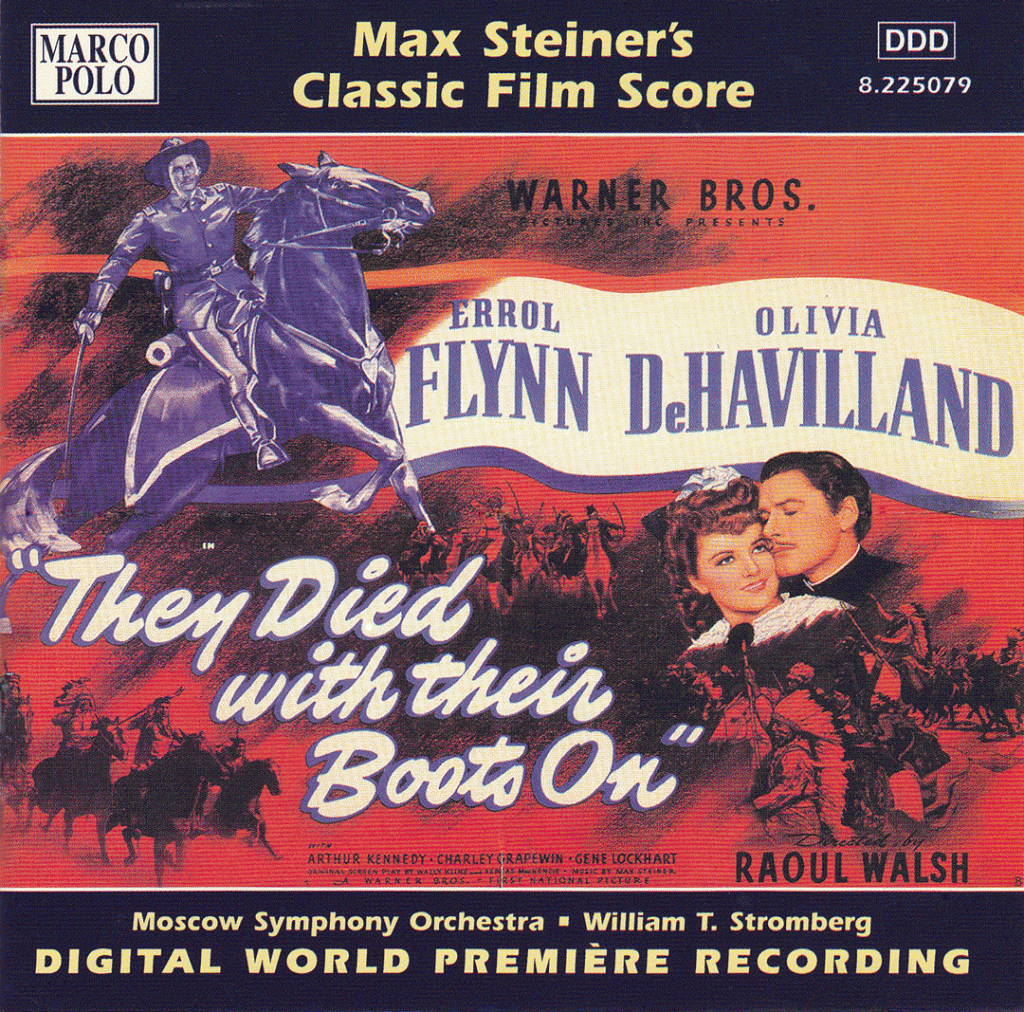 Erich Wolfgang Korngold’s score for Flynn’s The Sea Hawk (1940) contains the most romantic music that I’ve ever heard. It is included in a symphony that merges the film’s score but isn’t in the full score of the film that I have (why?). This is the music in garden after Flynn’s Captain Geoffrey Thorpe has been publicly chastised in court by Queen Elizabeth I of England (Flora Robson) for sinking a Spanish ship in the 1580s. After Flynn, in private, interests Robson in a piratical raid on the Spanish-held Panama peninsula he encounters Doña Maria (Brenda Marshall), in a rose garden. He had captured her when he sunk the Spanish ship, but here he calls her “My lady of the flowers.” This short scene is marvelous in how it deals with forgiveness and unsaid feelings. The music is intimate and caring and full of hope. There is one other Korngold film score that has a romantic love theme that I like a lot: The Adventures of Robin Hood (1938). After Maid Marian (de Havilland) is instrumental in planning Robin Hood’s (Flynn) escape just before being hung for treason, Flynn climbs the wall to Olivia’s private chamber. Again, Korngold’s score (for the Love Scene) hits the mark dead center, as if arrows shot from Robin Hood’s bow. Not violent, but instead sensual and tender.
Erich Wolfgang Korngold’s score for Flynn’s The Sea Hawk (1940) contains the most romantic music that I’ve ever heard. It is included in a symphony that merges the film’s score but isn’t in the full score of the film that I have (why?). This is the music in garden after Flynn’s Captain Geoffrey Thorpe has been publicly chastised in court by Queen Elizabeth I of England (Flora Robson) for sinking a Spanish ship in the 1580s. After Flynn, in private, interests Robson in a piratical raid on the Spanish-held Panama peninsula he encounters Doña Maria (Brenda Marshall), in a rose garden. He had captured her when he sunk the Spanish ship, but here he calls her “My lady of the flowers.” This short scene is marvelous in how it deals with forgiveness and unsaid feelings. The music is intimate and caring and full of hope. There is one other Korngold film score that has a romantic love theme that I like a lot: The Adventures of Robin Hood (1938). After Maid Marian (de Havilland) is instrumental in planning Robin Hood’s (Flynn) escape just before being hung for treason, Flynn climbs the wall to Olivia’s private chamber. Again, Korngold’s score (for the Love Scene) hits the mark dead center, as if arrows shot from Robin Hood’s bow. Not violent, but instead sensual and tender. The Steiner and Korngold compositions represent my feelings for Pailin. But they are not alone, for Ry Cooder’s great score for the film Geronimo: An American Legend is loaded with a combination of music from the time period (American Indian wars; roughly 1860-1890) as well as his magnificent compositions that are totally in tune with the storyline and Geronimo’s life. One piece, La Visita, which features the guitar, is used in a cantina when Lt. Charles Gatewood, who is searching for Geronimo in Mexico, confronts scalp hunters. The scene turns bloody while the music remains melodic and peaceful. It is ethnic (something that Cooder excels at when he moves south of the U.S. border for his compositions). Pailin and I have totally different backgrounds, and even though the sound of La Visita isn’t American or Thai, it represents both of us (certainly me; more below).
The Steiner and Korngold compositions represent my feelings for Pailin. But they are not alone, for Ry Cooder’s great score for the film Geronimo: An American Legend is loaded with a combination of music from the time period (American Indian wars; roughly 1860-1890) as well as his magnificent compositions that are totally in tune with the storyline and Geronimo’s life. One piece, La Visita, which features the guitar, is used in a cantina when Lt. Charles Gatewood, who is searching for Geronimo in Mexico, confronts scalp hunters. The scene turns bloody while the music remains melodic and peaceful. It is ethnic (something that Cooder excels at when he moves south of the U.S. border for his compositions). Pailin and I have totally different backgrounds, and even though the sound of La Visita isn’t American or Thai, it represents both of us (certainly me; more below).

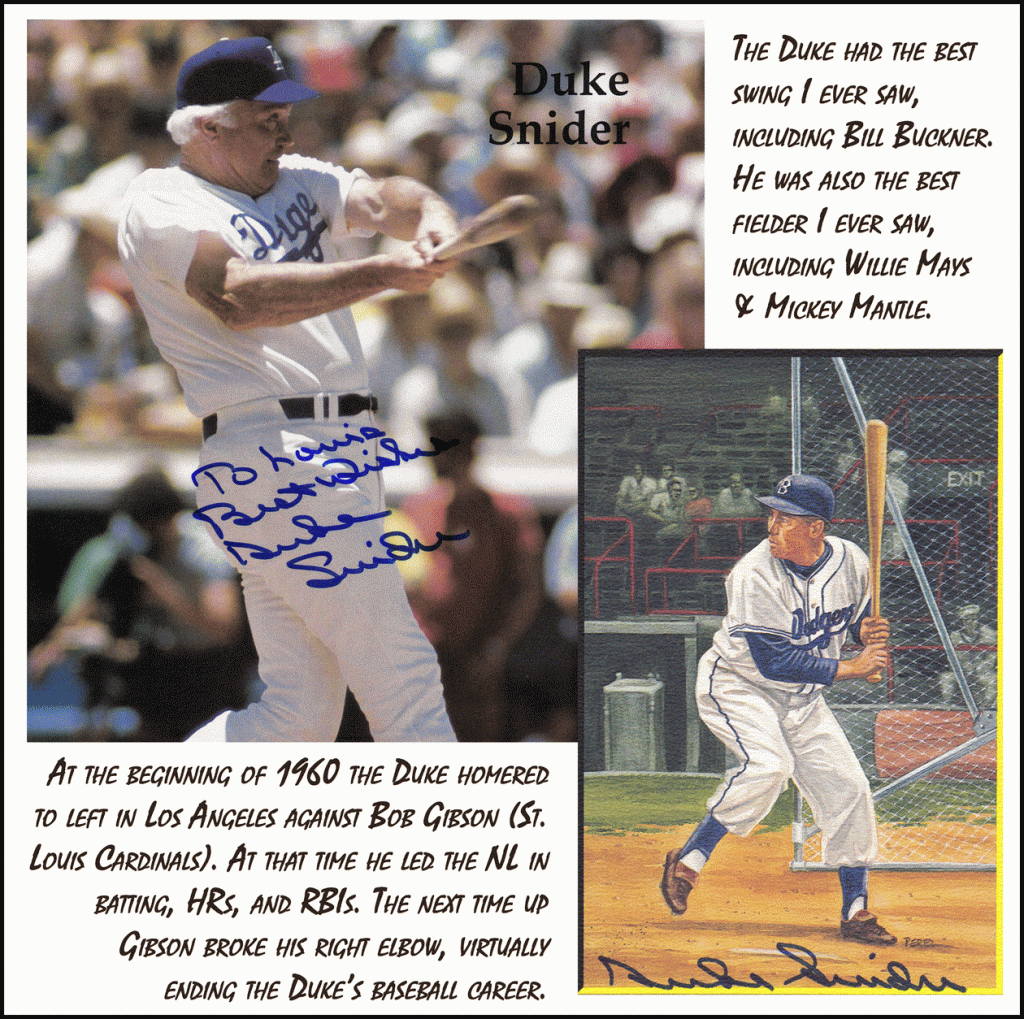

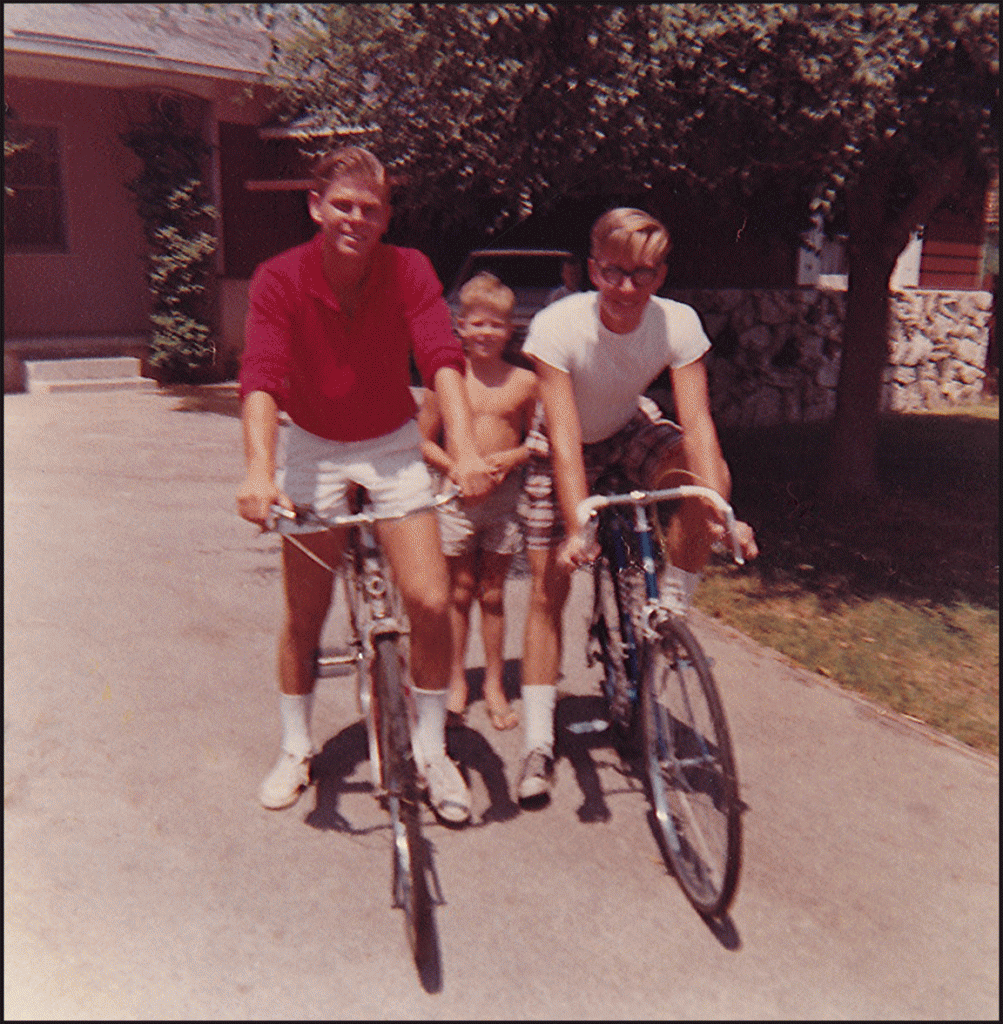
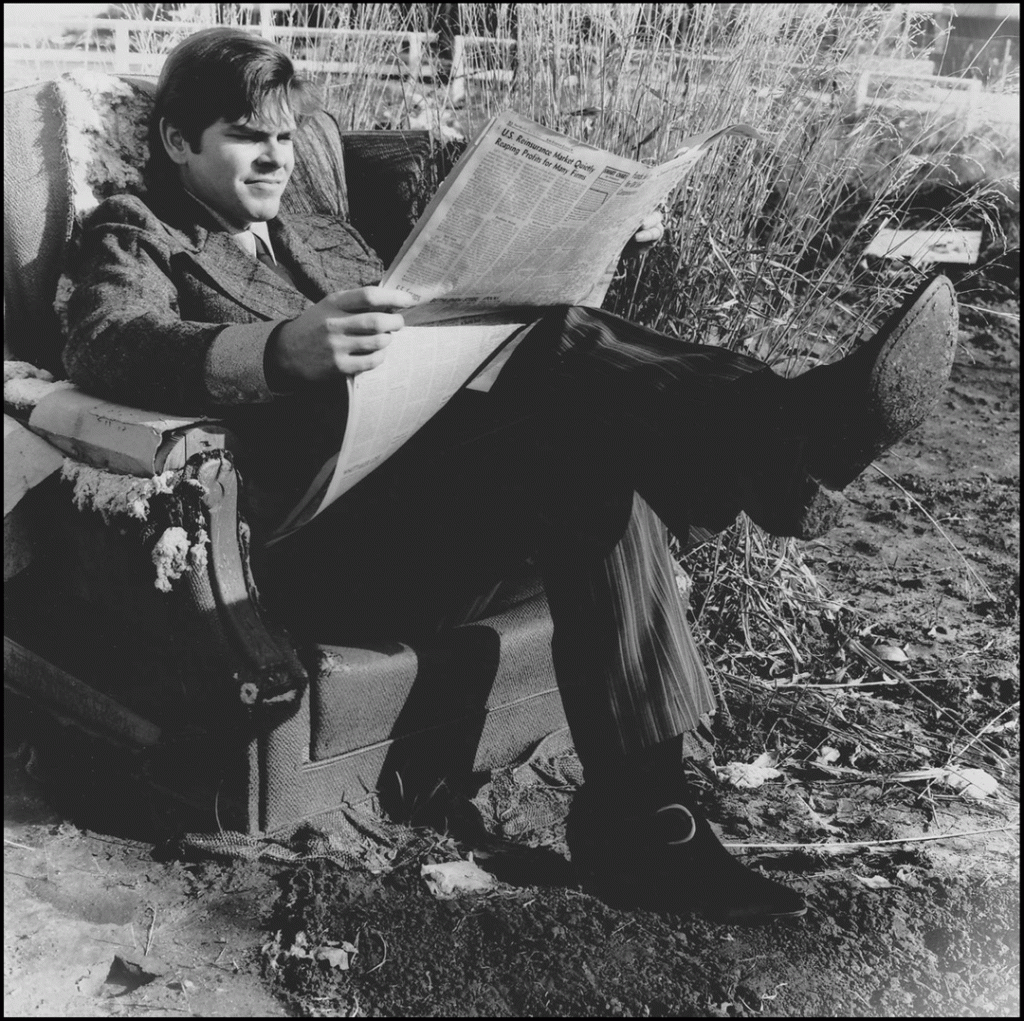
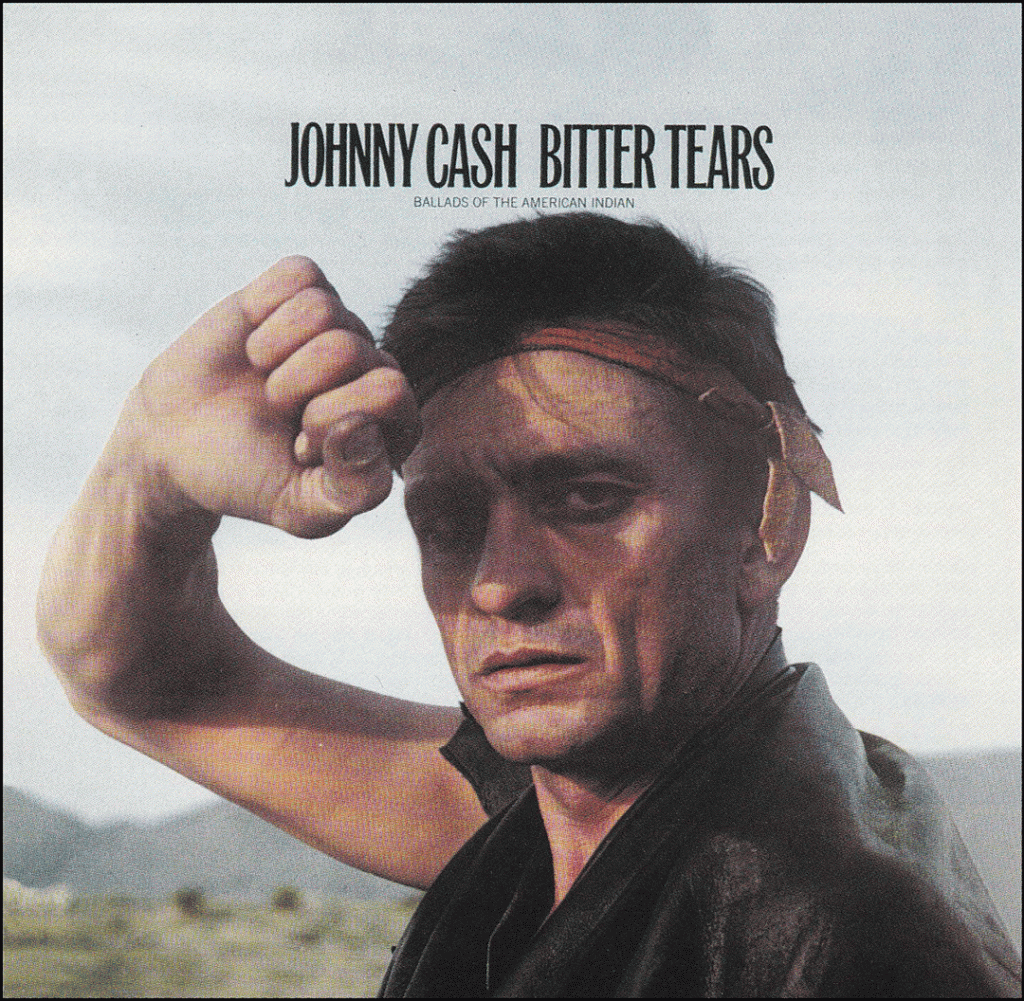 Earlier Johnny had cut an album that was obscure, and yet he sang the songs with power and passion. It dealt with American Indians from their point-of-view (POV). Not a popular POV in the 1960s or unfortunately still in the 21st century. There are eight cuts on the album and seven of them are extraordinary. The album was called “Bitter Tears.”* This album grabbed my soul, and it has never let go of it. … Especially As Long As The Grass Shall Grow, Apache Tears, Drums, White Girl, and The Vanishing Race. Johnny had written Apache Tears and The Talking Leaves while folksinger and song writer Peter La Farge wrote five songs, and Johnny Horton wrote The Vanishing Race.
Earlier Johnny had cut an album that was obscure, and yet he sang the songs with power and passion. It dealt with American Indians from their point-of-view (POV). Not a popular POV in the 1960s or unfortunately still in the 21st century. There are eight cuts on the album and seven of them are extraordinary. The album was called “Bitter Tears.”* This album grabbed my soul, and it has never let go of it. … Especially As Long As The Grass Shall Grow, Apache Tears, Drums, White Girl, and The Vanishing Race. Johnny had written Apache Tears and The Talking Leaves while folksinger and song writer Peter La Farge wrote five songs, and Johnny Horton wrote The Vanishing Race.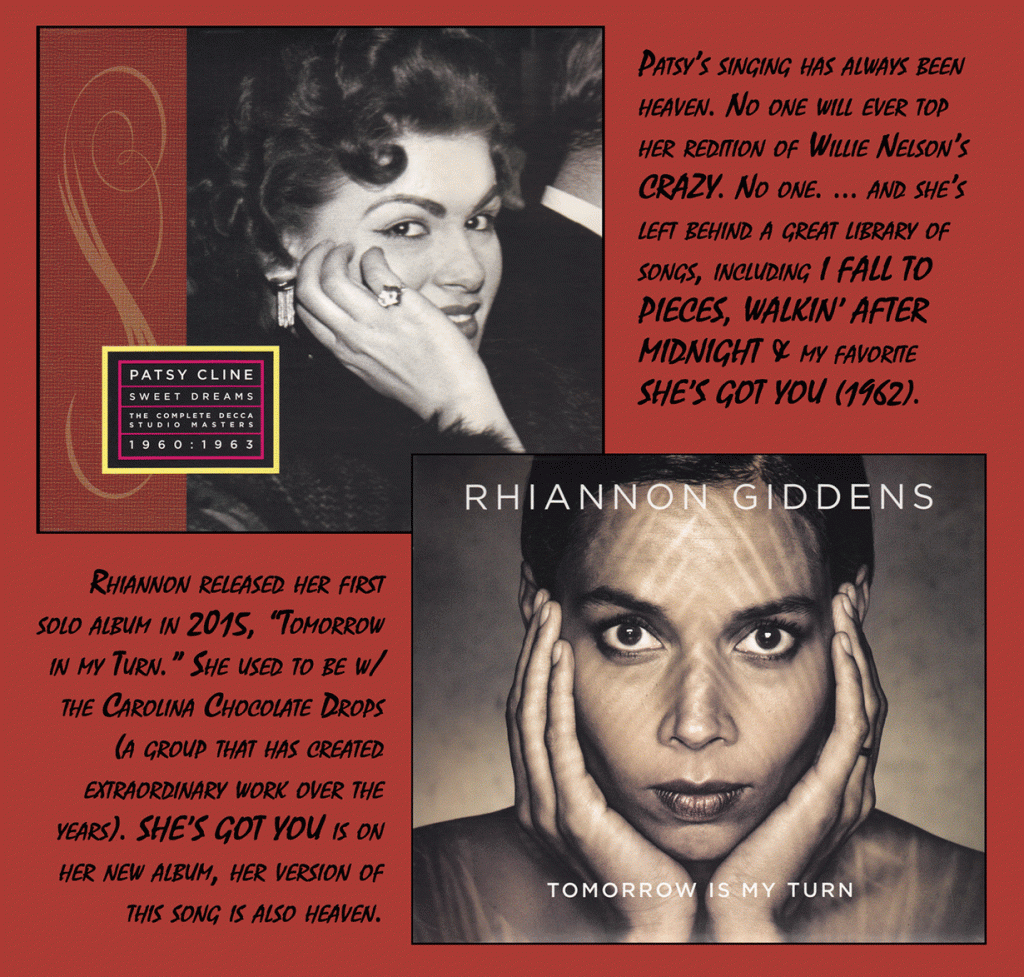 Rhiannon’s music has range and diversity. She also sang one of my all-time favorite pop songs from the early 1960s—She’s Got You—on her solo album. I loved this song the first time that I heard Patsy Cline (who tragically died in a plane crash on 5mar1963) sing it.
Rhiannon’s music has range and diversity. She also sang one of my all-time favorite pop songs from the early 1960s—She’s Got You—on her solo album. I loved this song the first time that I heard Patsy Cline (who tragically died in a plane crash on 5mar1963) sing it.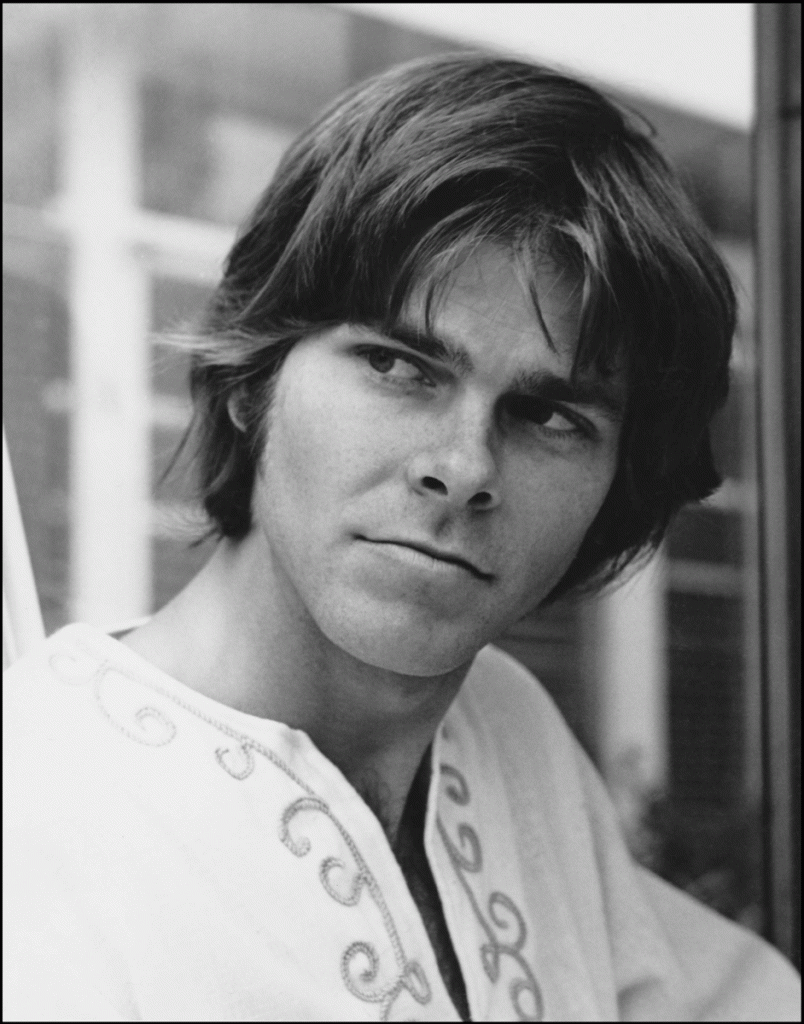
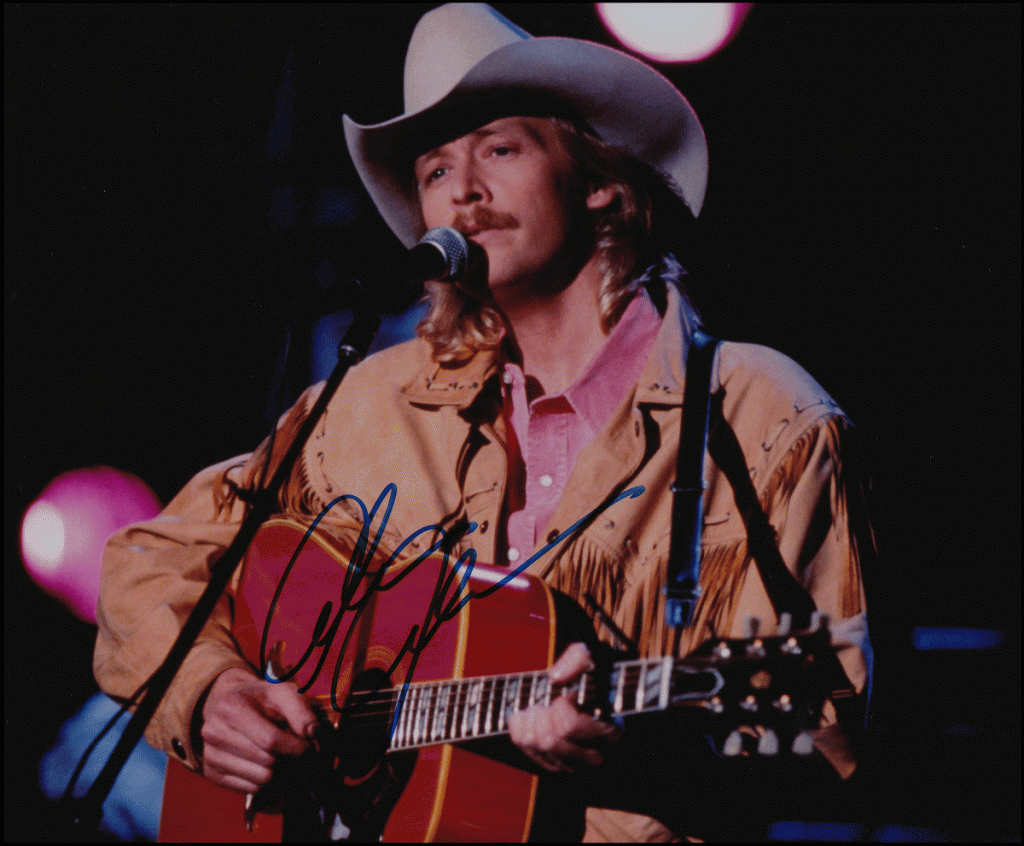
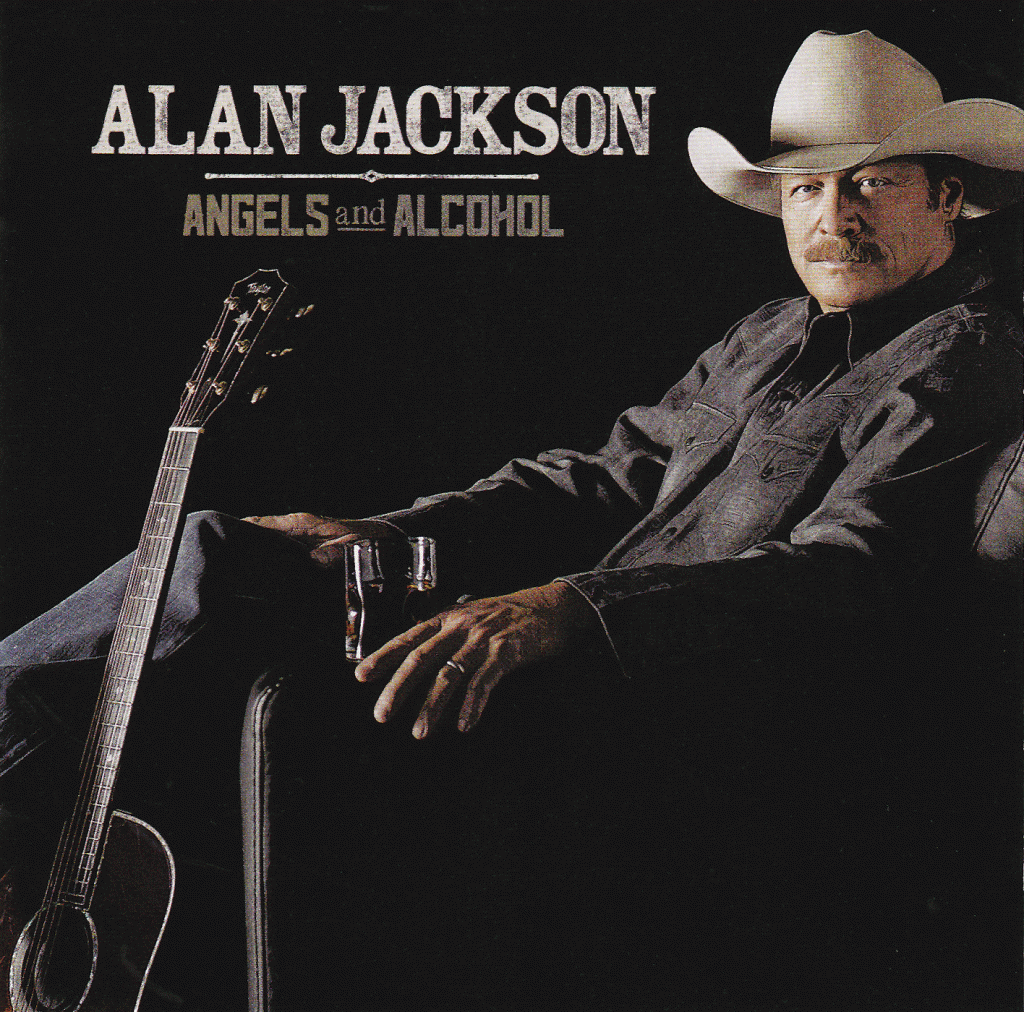 My daughter and I had a used mattress on the floor, a love seat, and folding chairs. I had my computer, two large book cases, and my books and research. Here I wrote a contracted novel about Kit Carson that would never see print. The publisher dropped their western line and when I threatened to sue, my agent talked me out of it. Tragedy? No! For I had my daughter and soon a contract with friend Dick Upton (Upton and Sons, Publishers) to write and design a nonfiction book on Custer’s peaceful roundup of the warring Cheyennes and Arapahos on the southern plains in 1869. … This time, this short time, in Woodland Hills (April 1992-January 1993), was, and still is, a major piece of my life. … Every time I hear Alan’s Midnight in Montgomery, it brings me right back to nine plus glorious months in my life.
My daughter and I had a used mattress on the floor, a love seat, and folding chairs. I had my computer, two large book cases, and my books and research. Here I wrote a contracted novel about Kit Carson that would never see print. The publisher dropped their western line and when I threatened to sue, my agent talked me out of it. Tragedy? No! For I had my daughter and soon a contract with friend Dick Upton (Upton and Sons, Publishers) to write and design a nonfiction book on Custer’s peaceful roundup of the warring Cheyennes and Arapahos on the southern plains in 1869. … This time, this short time, in Woodland Hills (April 1992-January 1993), was, and still is, a major piece of my life. … Every time I hear Alan’s Midnight in Montgomery, it brings me right back to nine plus glorious months in my life.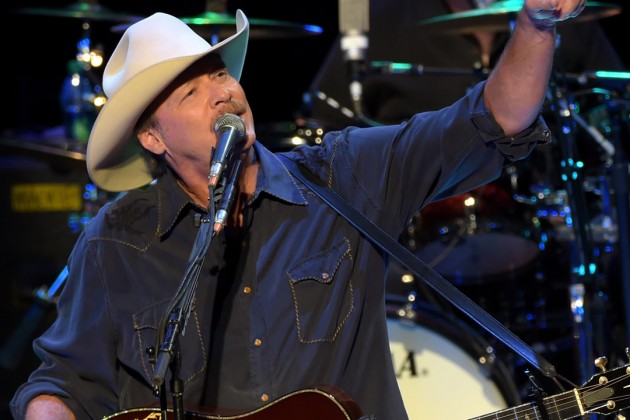
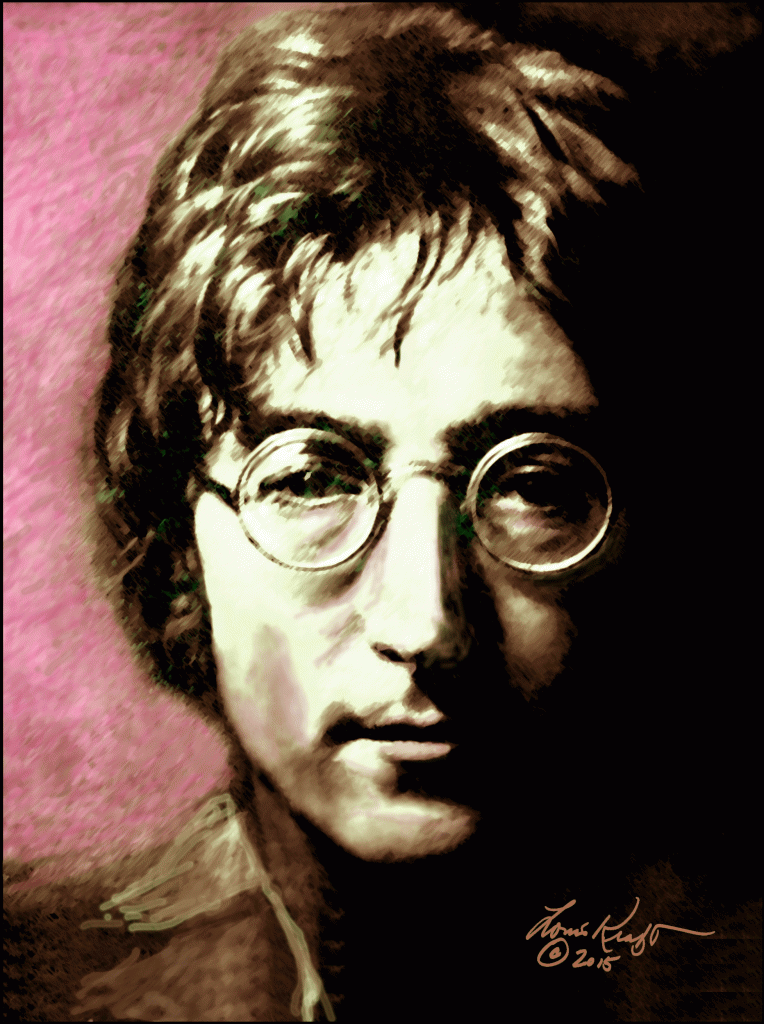 It was a cold night in December 1980 when the Kool Aid Kids had a softball practice at Winnetka Park in the San Fernando Valley. Lennon’s joint album with his wife Yoko Ono had recently been released and some of the songs had play time on the radio. I had heard one or two of the songs, which were different in that they focused on a relationship between a man and a woman (something that Alan Jackson has excelled at) and I liked them. Moreover, Lennon’s single Imagine, which he created after the Beetles’ demise, had never been a button pusher on the car radio, for I always listened to it. I was roughly 10 years older than most of the fellows on the ball team that Lee, his great friend Tony Graham, I, and others had created. It was just a night of practice late in the team’s first year of existence. One of the fellows mentioned that John Lennon had been shot and killed at the entry to his apartment in Manhattan, New York City. Most of the team didn’t react, didn’t care. I did. I was shocked. Death and murder always shocks me, and I suppose that is why most on my writing has focused on people who put their lives at risk to prevent or end war (and all the heinous crimes that accompany it).
It was a cold night in December 1980 when the Kool Aid Kids had a softball practice at Winnetka Park in the San Fernando Valley. Lennon’s joint album with his wife Yoko Ono had recently been released and some of the songs had play time on the radio. I had heard one or two of the songs, which were different in that they focused on a relationship between a man and a woman (something that Alan Jackson has excelled at) and I liked them. Moreover, Lennon’s single Imagine, which he created after the Beetles’ demise, had never been a button pusher on the car radio, for I always listened to it. I was roughly 10 years older than most of the fellows on the ball team that Lee, his great friend Tony Graham, I, and others had created. It was just a night of practice late in the team’s first year of existence. One of the fellows mentioned that John Lennon had been shot and killed at the entry to his apartment in Manhattan, New York City. Most of the team didn’t react, didn’t care. I did. I was shocked. Death and murder always shocks me, and I suppose that is why most on my writing has focused on people who put their lives at risk to prevent or end war (and all the heinous crimes that accompany it).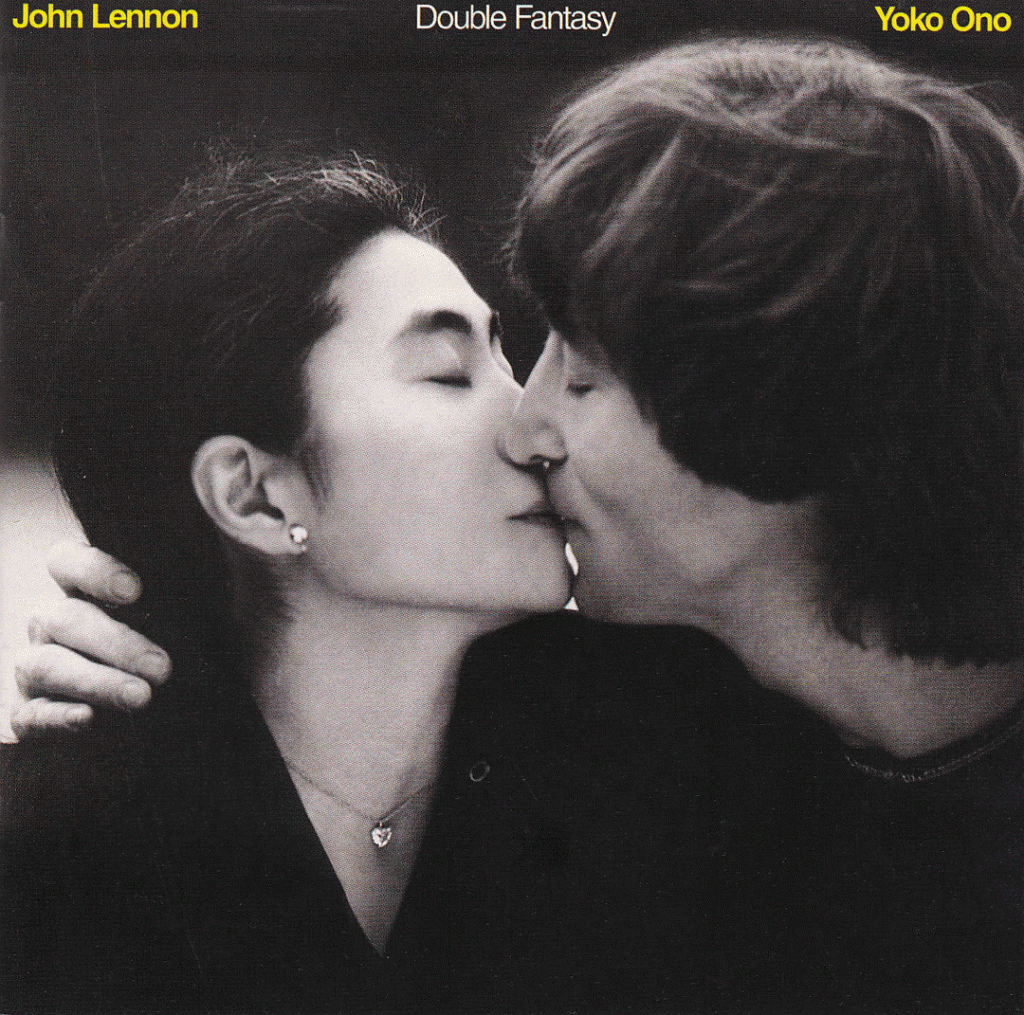 John’s murder pushed me to explore his music, beginning with his newly released album with Yoko Ono, Double Fantasy. At first I wasn’t certain how I felt about this album other than it was different and was from the heart (two hearts; John’s and Yoko’s). This album changed my view of music, and certainly of Lennon (and Yoko). Country ballads and straight rock ‘n’ roll suddenly needed a reason to exist. This immediately gave value to Kris Kristofferson’s songs and opened the door for me to listen to Alan Jackson’s great songwriting (see above). John’s music had range and power and focus, and when you add in his values such as antiwar and peace, women equality, love, and his work grabbed me like no others before or after. Alan’s songwriting is close, for he has certainly focused on the human condition and has touched upon our world of yesterday and today—his Where Were You (When the World Stopped Turning) is extraordinary—and he is often dead-on with his subject matter, but John took his views to the next level (and this was before Alan’s time).
John’s murder pushed me to explore his music, beginning with his newly released album with Yoko Ono, Double Fantasy. At first I wasn’t certain how I felt about this album other than it was different and was from the heart (two hearts; John’s and Yoko’s). This album changed my view of music, and certainly of Lennon (and Yoko). Country ballads and straight rock ‘n’ roll suddenly needed a reason to exist. This immediately gave value to Kris Kristofferson’s songs and opened the door for me to listen to Alan Jackson’s great songwriting (see above). John’s music had range and power and focus, and when you add in his values such as antiwar and peace, women equality, love, and his work grabbed me like no others before or after. Alan’s songwriting is close, for he has certainly focused on the human condition and has touched upon our world of yesterday and today—his Where Were You (When the World Stopped Turning) is extraordinary—and he is often dead-on with his subject matter, but John took his views to the next level (and this was before Alan’s time).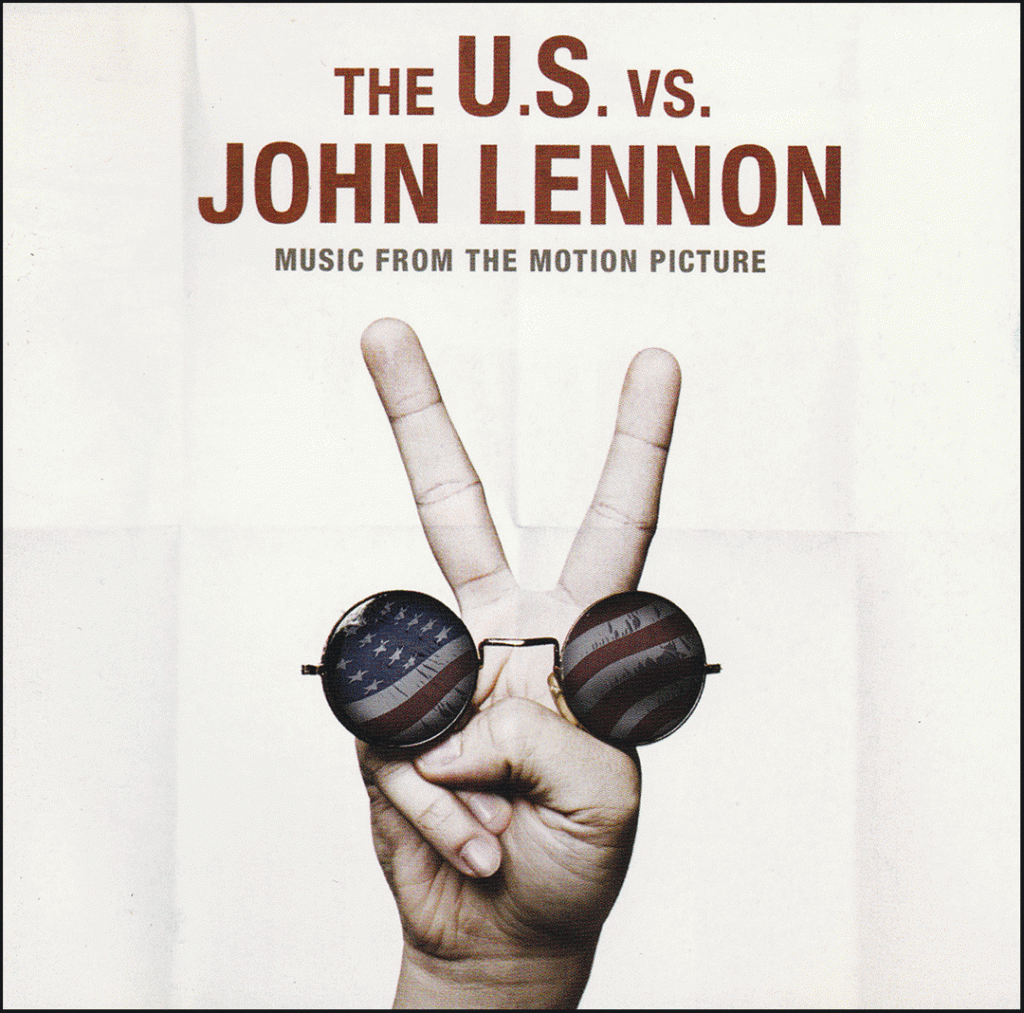 A former girlfriend (Diane Moon) latched onto Lennon and Jackson’s music and liked it. Later she would say that both had “tinny” voices. Correct, but it is the words and the performance and not the magnificence of the voice. Her voice was extraordinary. At the Methodist Church in Burbank, California, the members couldn’t believe the sounds coming from her when she sang at Sunday services. She had studied music in her native country, was a great piano player (and taught piano), but her voice was God-given. It had the power and intimacy of Adele’s in the current hit Hello.
A former girlfriend (Diane Moon) latched onto Lennon and Jackson’s music and liked it. Later she would say that both had “tinny” voices. Correct, but it is the words and the performance and not the magnificence of the voice. Her voice was extraordinary. At the Methodist Church in Burbank, California, the members couldn’t believe the sounds coming from her when she sang at Sunday services. She had studied music in her native country, was a great piano player (and taught piano), but her voice was God-given. It had the power and intimacy of Adele’s in the current hit Hello.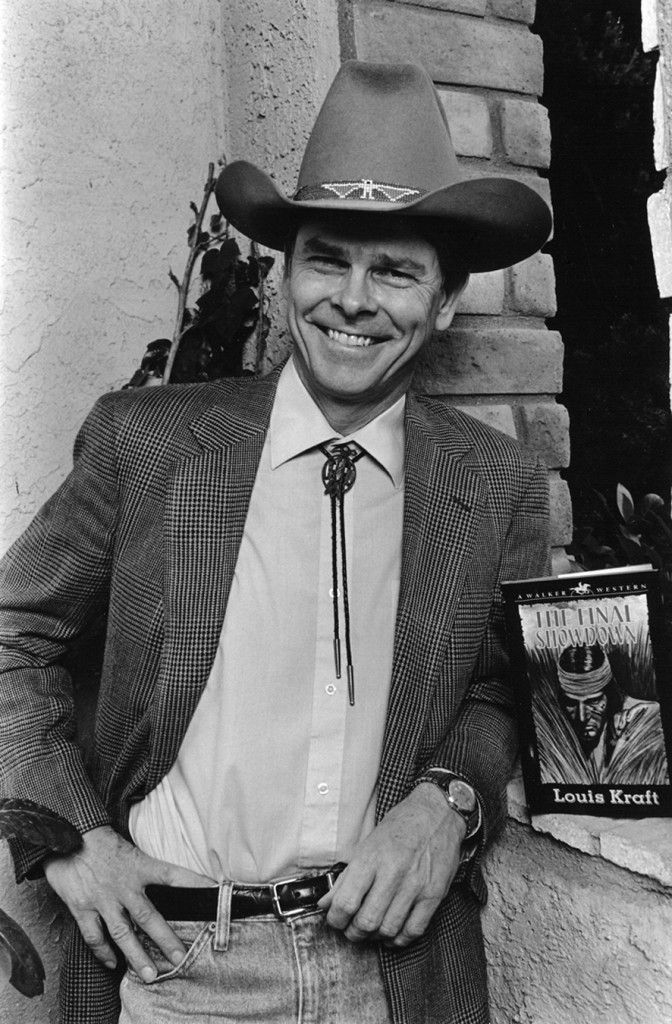
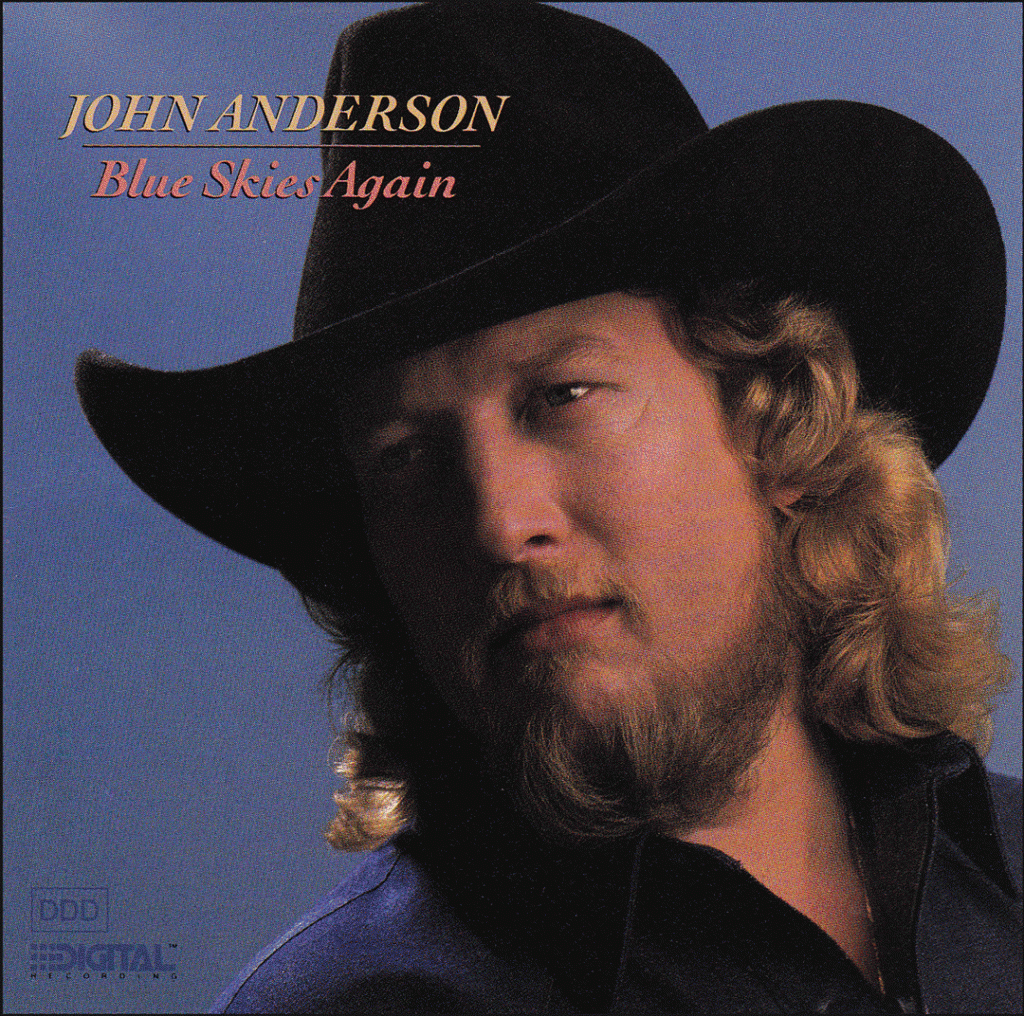 But this went right by me.
But this went right by me.